E L Y S I U M
The Romance of Courchevel

Paris Fashion Week
Guide A/W 22 Mugler in Memoriam Crypto Takes
The Art World
S E P T E M B E R 2 0 2 2
"
E L Y S I U M
C o n c e p t b y J e s s e S c o t t i n c o n j u n c t i o n w i t h
E l y s i u m C o c k t a i l C l u b
A l l w o r d s , p h o t o g r a p h s , a n d d e s i g n s b y J e s s e S c o t t u n l e s s o t h e r w i s e s p e c i f i e d
S p e c i a l t h a n k s t o t h i s i s s u e ' s m o d e l s J D A r m e s a n d D i a n a H u k
F a s h i o n i s a m o v i e ; e v e r y d a y w h e n y o u g e t d r e s s e d y o u d i r e c t y o u r s e l f . "
- T h i e r r y M u g l e r
Letter from the Editor
Love brings love...this was the title of the Palias Galliera's moving exhibition in tribute to the late Alber Elbaz
Far more importantly, however, it epitomized the heartfelt sentiment that made the exhibition, and so many successes within the fashion world, possible. This industry has a reputation for ruthlessness; it is, after all, revenue-driven, and an arena for competition between some of the world's greatest creative minds However, at its foundation, fashion is defined by unity Its players are forever connected by fierce passion, pursuit of beauty (in whichever form one may conceive it), conviction in the power of self-expression, and a belief in humanity that can survive any conflict
This was all on display at the Palais Galliera this spring, as an international roster of fashion's biggest names, from Giorgio Armani to Rick Owens to Maria Grazia Chiuri, each dedicated a custom-made dress to honor one of their contemporaries. The ever-romantic Elbaz, whose own life took him from Casablanca to Israel to New York to Paris, would doubtless have been proud his vision of finding happiness through fashion was presented to visitors in a way that transcended any set boundaries or classifications
Lately I've been reflecting on one particular Elbaz anecdote The story goes that a customer once approached the Lanvin designer and said:
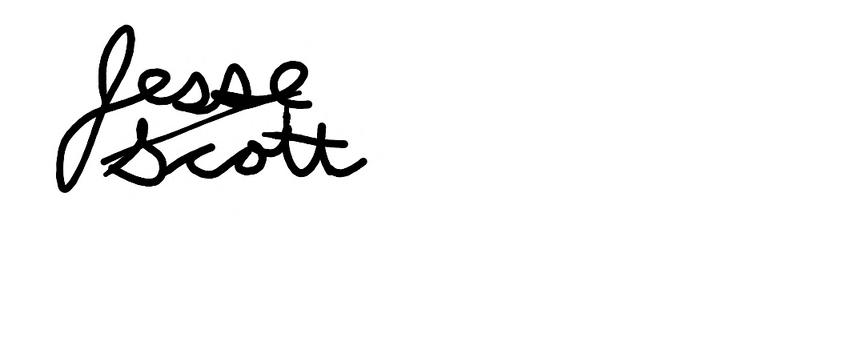
"Alber, every time I wear one of your dresses, men fall in love with me " He responded: "the next time you wear one of my dresses, I want you to fall in love with a man " This beautifullyarticulated difference between active and passive, between letting life happen and creating your own, offers a valuable lesson, particularly as we move through transition periods, both in our own lives and in world history
This issue celebrates those who seize the moment and encapsulate the spirit of Elbaz's advice In our guide to Paris Fashion Week A/W 22, you'll find profiles on emerging designers who proudly brought the spirit of their communities and countries to fashion's biggest stage. You'll go behind the scenes with Belgian designer Meryl Rogge, whose convivial "dinner party" presentation celebrated re-connection post-Covid, and behind the lens with Yoshi Takata, who dedicated her career to her love for Paris's people from all walks of life
Our "long read" tells you how cryptocurrency is shaking up the art industry while our cocktail segment introduces an inspired mixologist bringing champagne and cigars to what was once "the Wild West "
Finally, this issue features a tribute to the magic of Courchevel a place where, for me, "love brings love " As you consider these pages, I encourage you to consider the meaning of those words, and the Elbaz anecdote, to you. Wear that dress. Visit that special place. Follow your passion. And seize the moment.

TABLE OF CONTENTS PARIS FASHION WEEK GUIDE A/W 2022 Benjamin Benmoyal............23 Mossi.......................................25 Sensationist...........................27 Marine Henrion....................31 Sustainability Spotlight.....33 Rising Stars...........................37 Meryll Rogge.........................39 Après Surf.............................45 Alexandre Birman...............47 Alex de Pase..........................48 Yoshi Takata Exhibition...50 5 THE HOT LIST 13 WE'LL ALWAYS HAVE COURCH 21 PARIS FASHION WEEK GUIDE 53 MUGLER IN MEMORIAM 55 CRYPTOCURRENCY & THE ART WORLD 67 PORTRAIT OF TUNISIA 77: Elysium Cocktail Club: INTERVIEW WITH NATHAN BUECKERT
T h e H o t L i s t
Renaissance Bar at Badrutt's, St Moritz, Switzerland: St. Moritz conjures up images of a glamorous bygone era: of fur coats on ski slopes, Gatsby-worthy galas, and white glove butler service Even in 2022, this is the everyday reality at Badrutt’s Palace and nowhere exemplifies the paradigm more than this reservations-only bar It felt like home from my first visit this winter; by my second the entire staff knew me by name The sumptuous lounge, which offers an exquisite cigar menu, is a time capsule in the most delightful way. It allows guests to smoke inside, requires a jacket for gentleman after 19:30, and is centered by a magnificent stone hearth There's an encyclopedic cocktail menu, and you'll find impeccable renditions of all the classics However, don't be afraid to think outside the box; the mixologists, bowties, tuxes, and all, are among the most innovative in Switzerland Try the “Fairy from the Tower,” a champagne cocktail combining flavors of mezcal, absinthe, and passion fruit. Or, for a nightcap, opt for the Old Scots (glenfiddich, tia Maria, saffron, bitter orange jam, mustard). (pictured bottom left)

The Order: St Moritzino: Vodka, cointreau, orgeat syrup, lemon juice
5L Speakeasy, Sofia, Bulgaria: Located in an unmarked house on a quiet Sofia street, this bar is not the easiest to access. Indeed, even after finding the door, guests must choose the right key from a selection of dozens However, it’s more than worth your effort The friendly bartenders offer an expansive selection of house creations running the gamut from tropical to savory; they even caused me to re-examine my opinion of tequila through a personalized concoction The raki menu, as expected in Sofia, is elite
The Order: Hybrid Old-Fashioned: Scotch, Hubert 1924, quince raki, maraschino liqueur, chili syrup, bitters
Ayahuasca Cocktail Club, Bordeaux, France: Having just opened in April 2022, trendy ACC is the first proper craft cocktail spot in an city where wine bar culture dominates The bar offers a surprisingly cohesive synthesis of east Asian, Peruvian, and tiki vibes, something that’s reflected in a cocktail menu starring pandan, pisco, and even a clarified mango coulis infused with cumin and coriander (pictured bottom right)
The Order: Mood Shifter: grapefruit soda, acid solution, maraschino liqueur, masthiha, shiso-infused vodka
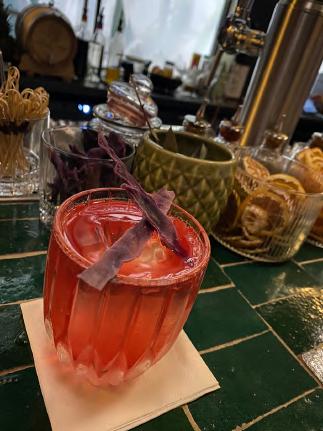
Widder Bar, Zurich, Switzerland: An imposing bar with ornate decor and outstanding live jazz, Widder Bar is decidedly old-world grandeur but replaces any traces of stuffiness with contemporary sophistication All ages can be found here, and all exude a distinctly Zurich chic However, as much as this is the spot to see and be seen, you mainly come for the drinks. The spirit collection is unmatched and the bartenders will be happy to suggest a whiskey or martini flight customized to your taste For cocktails, surprisingly well-balanced herbaceous and sweet drinks dominate Take the Haloa Scotland, with Talisker 10, spicy mango sherbet, and gingerale, or the CO2-infused belle di magadino, with gin, celery, coconut water, and apple juice
The Order: Back to the roots: Koskenkorva organic vodka, blackberries and beetroot cordial, midi aperitivo, chartreuse aroma
Cambridge Public House, Paris, France: It may not have the speakeasy attitude or grunge chic vibe of its Marais neighbors, but Cambridge Public House, modeled after a British pub, is my favorite spot among the right bank’s new wave cocktail bar cluster. Don’t let the simple comfort food such as shepherd’s pie fool you; the bar team here is relentlessly creative and a “cocktail of the week” feature ensures that guests can always try a rotating selection of “what’s in the lab " Vegetables and herbs are stars; I’ve seen parsnip champagne, an onion old-fashioned, and rhubarbsorrel vodka
The Order: Calabrian Sour: ricotta, strawberry, olive oil, plantation rum
f r o m n o v e l s t o c o c k t a i l s , t h e p l a c e s a n d c r e a t i o n s t h a t c a p t u r e d o u r i m a g i n a t i o n t h i s s e a s o n
O C K T A I L B A R S 5
C
Intercontinental, Ljubljana, Slovenia
Having opened its doors in October 2017, this sleek property is the undisputed place to stay in Ljubljana From my experience, it should also be considered a standard-bearer of the IHG brand. Contemporary rooms offer floor-to-ceiling windows with outstanding views of the charming city. Meanwhile the staff goes above and beyond in organizing everything from restaurant reservations to ski trips However, the stars of the show are the spa facilities; the rooftop pool, sauna, and steam room gaze out on the Slovenian mountains from luxurious surroundings If you stay here book the breakfast package; this is one of the most memorable Eastern European spreads I’ve had.
La Badira, Hammamet, Tunisia
A glistening white design property secluded from Hammamet’s touristic areas and offering a gorgeous beachfront, La Badira has accumulated accolades in both Tunisia and abroad recently. The service here is truly special; it’s not an exaggeration to say that you ' re part of the "hotel family" during your stay I was so relaxed at this property that I extended my recent stay for two nights see our Tunisia feature for more
The Luxury Collection Hotel Balkan, Sofia, Bulgaria:
It’s all about location and history at this beautiful property now under the watchful management of Luxury Collection and Marriott Bonvoy Directly connected to the presidential palace complex, and overlooking the iconic St George Church (a 4th century Roman construction), this hotel was built in 1956 to be the finest in the then-communist city Today, while retaining its charm and grandeur, it has undergone a major facelift that provided many of the modern rooms with skylight-type balconies. I have particularly fond memories of the concierge services here The staff not only personalized a surprisingly tight sightseeing itinerary and arranged my experiences of Sofia’s sophisticated dining scene they also secured me a ticket to an intimate Vivaldi concert and ensured the safe retrieval of my debit card when it was eaten by a local ATM
Uto Kulm, Zurich, Switzerland:
A sustainable eco resort above a city known for its environmentally minded attitude, the Uto Kulm offers a laidback getaway just twenty minutes from downtown Zurich Located in pedestrian-only Uetliberg Park, the quiet property requires a seven-minute walk from the nearest road and train station but don’t worry, they’ll send a golf cart for your luggage (which in my case amounted to 100 pounds’ worth)! My favorite feature of the hotel is the private sauna, which is complimentary but must be booked in advance You’ll have a personal spa suite with all the amenities you could hope for, including a window looking directly from the sauna on to the picturesque Swiss mountains If you ’ re here on a Sunday, the hotel’s champagne brunch is also legendary
Anantara Desert Resort, Tozeur, Tunisia:

This hotel put Tunisia on my radar when it opened just a year before Covid This is the third dessert resort in the Anantara portfolio (joining the Jabal al Akhdar in Oman and the Qasr al Sarab in Abu Dhabi) and it’s just as enchanting as the previous two Get a suite overlooking the Sahara; the view of the night sky and infinite desert is more than worth it. See our Tunisia feature for more.

H O T E L S & R E S O R T S 6
Anantara, Tozeur, Tunisia
La Badira, Hammamet Tunisia
January: Frozen, Madonna (Sickkick remix)

Frozen was all over Courch (and yes, skiing Instagram reels) in January It’s a defining track for the retro synth movement: a now 24-year old classic remixed with a seductive bass that’s capable of putting you in a trance
February: Daddy Cool, Boney M. (Nick Raider remix)
Last century’s British disco saw a major resurgence this year. Boney M’s “Rasputin” became an anthem as iconic as “Intoxicated” or “I Follow Rivers ” which encouraged me to dig back to their original 1976 album & discover this gem
March: Osama, Zakes Bantwini, Kasango: Taking off in Paris as a Matignon/Manko mainstay this spring, "Osama" was many people's first introduction to the addictive beats of South African house. Migrating south for the summer, it’s been played nightly on the Riviera at every beach club and nightspot always with an electrifying crowd response Song of the year? Just maybe
April: Грешна си, Krisko: Blending Russian-style lyrics with Turkish and Arabian style beats, Bulgarian rap is a complex and energetic genre that always surprises and excites me. This song represents a renaissance for Krisko, who started his own label in 2018 and has been blowing up Sofia airwaves in 2022
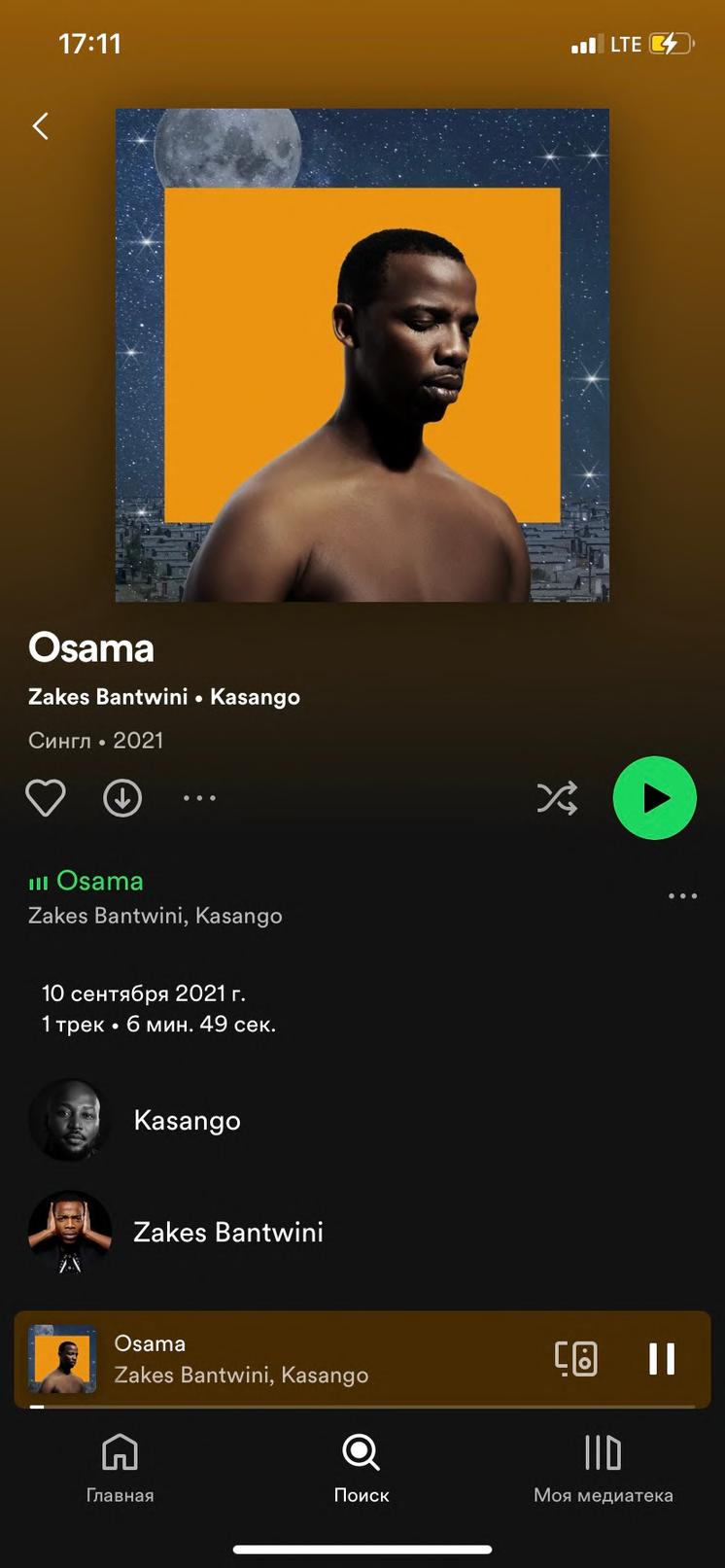

May: Demons, Jerro (Massane remix)
A perfect spring song, Demons echoes with the sultry promise of beach days, rose, and summer seduction
For the ski lift: La Notte Vola, Carolina Marques: This adrenaline rush of a song isn’t going to win any awards for its lyrics However, when you ’ re flying down the hill in Courch, with a looming lunch at Cap Horn or Folie Deuce, there’s no better chorus to have stuck in your head
For walks along the Seine: Walk me Home, Illenium, Said the Sky, & Chelsea Cutler

An unlikely combination between three of my favorite artists (Illenium, Said the Sky, and Chelsea Cutler) who all have very different sounds Turns out that Chelsea’s raw emotion pairs beautifully with a passionate Illenium drop; this is one of the songs I’d most love to see live
For Riviera summer: Best Life, Naps: Hear this song in a club and it’s impossible not to dance along to the chorus A celebration of the hedonistic Riviera lifestyle in the vein of “Welcome to St Tropez” or “Greece,” it’s due to blow up this summer

For Sardinia summer: Piove, Lazza: Milan-based Lazza became one of my favorite rappers this year; his songs are versatile enough for grinding, working out, or partying. His new album Sirio was a masterpiece that dominated Italian airwaves this spring; this song (along with Alibi and 3 Pali) was my favorite
To discover: Raise a Glass, Mighty Oaks: Founded in Berlin by an Italian, a Brit, and an American, Mighty Oaks is a folk rock group with a soulful sound. Their 2017 album Dreamers remains my favorite and this song was revived on a lot of my playlists this spring
For endings: One More Weekend, Maude Latour: “One more weekend in the city ” this song is at once both melancholic and optimistic, promising an impending summer holiday while mourning the (at-least-temporary) end of the lifestyle and bonds which comprised your daily rhythm for most of the year.
For beginnings: Dance With You, Sofia Kay: Playful pop at its best, this song captures the whirlwind of emotions and youthful exuberance that often surround a new relationship Can be cotton candy road trip or late-night reflection material depending on your mood

f r o m t h e s t r e e t s o f P a r i s t o t h e s l o p e s o f C o u r c h , t h e s o u n d t r a c k o f a s e a s o n i n F r a n c e T H E P L A Y L I S T
7
Champagne Supernovas: Kate Moss, Marc Jacobs, Alexander McQueen, and the 90’s Renegades who Remade Fashion, Maureen Callahan: A must-read for anyone who grew up in the 90’s or is involved in the fashion industry, this book offers a nuanced portrait of an iconic era through three of the figures that both shaped and were defined by it Deftly telling her protagonists’ stories through alternate chapters, Callahan illustrates how Upper West Sider Jacobs, Croydon striver Moss, and gritty rebel McQueen all, through their unique blend of passion, determination, and charisma, ushered in a new standard of beauty to rise as the standard-bearers of a glamorous age It also addresses the dark side of heroin chic: the parties, substance abuse, and obsessions that would haunt all three figures and ultimately lead to McQueen’s suicide Callahan offers an empathetic yet even-handed portrayal of her subjects, her study of the oft-misunderstood Moss proving the most perceptive and riveting.

The House of Gucci, Sara Gay Forden: House of Gucci was “the movie watched round the world” this year, and unsurprisingly, the book was even better Written in riveting fashion, but thoroughly and reliably researched, it epitomizes the saying “truth can be stranger than fiction ” Ironically, the book’s most interesting parts are what the movie glosses over…the role of Domneico de Sole and Tom Ford in reshaping Gucci prior to Maurizio’s death, saving it from vicious takeover attempts, and overcoming Shakespearian-level family drama while retaining the family name and spirit critical to the brand’s success A must-read for anyone who loves Italy, fashion, or even just Gucci loafer The passion (sometimes tragic) that shaped this brand is truly special.
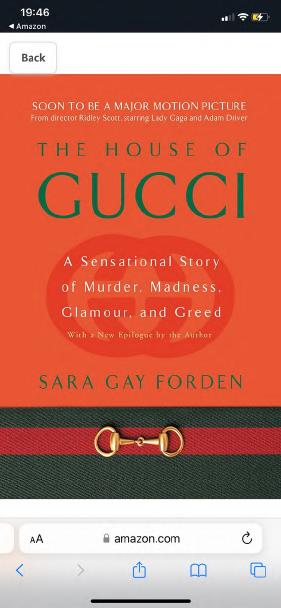
Nine Perfect Strangers, Liane Moriarty: This book is not one of Moriarty’s best; it awkwardly stumbles from an exciting premise to an anticlimactic conclusion There's also the problematic portrayal of main villain Masha, a crude amalgamation of anti-Russian stereotypes However, Nine Perfect Strangers is a worthwhile read beacuse of its concept; it draws awareness to increasingly popular trends in the wellness industry and inspires ethical debates. The novel's premise is that nine people, all with distinct backgrounds and personalities, embark on a rigorous health care retreat part of their “treatment” involves being drugged and locked in a basement What is the best way to build human character? How does leadership emerge in times of crisis? And how often is this type of storyline playing out in reality? All questions to ponder.
The Longest Ride, Nicholas Sparks: A Nicholas Sparks Western? The odds that I ended up reading this were extremely low but when it’s the only English language book available in the Tunisian desert, desperate times call for desperate measures What I discovered was a nuanced take on young relationships, class, marital conflict, and even art Of course it is also a romance for the ages The flashbacks involving now-91-year-old Ira Levinson and his late wife are even more captivating than the primary storyline of the young couple that becomes irrevocably intertwined with their legacy And, illustrating his understanding of base human emotion, Sparks managed to make a cowboy from Carolina and an English major from New Jersey relatable to someone who has almost nothing in common with either
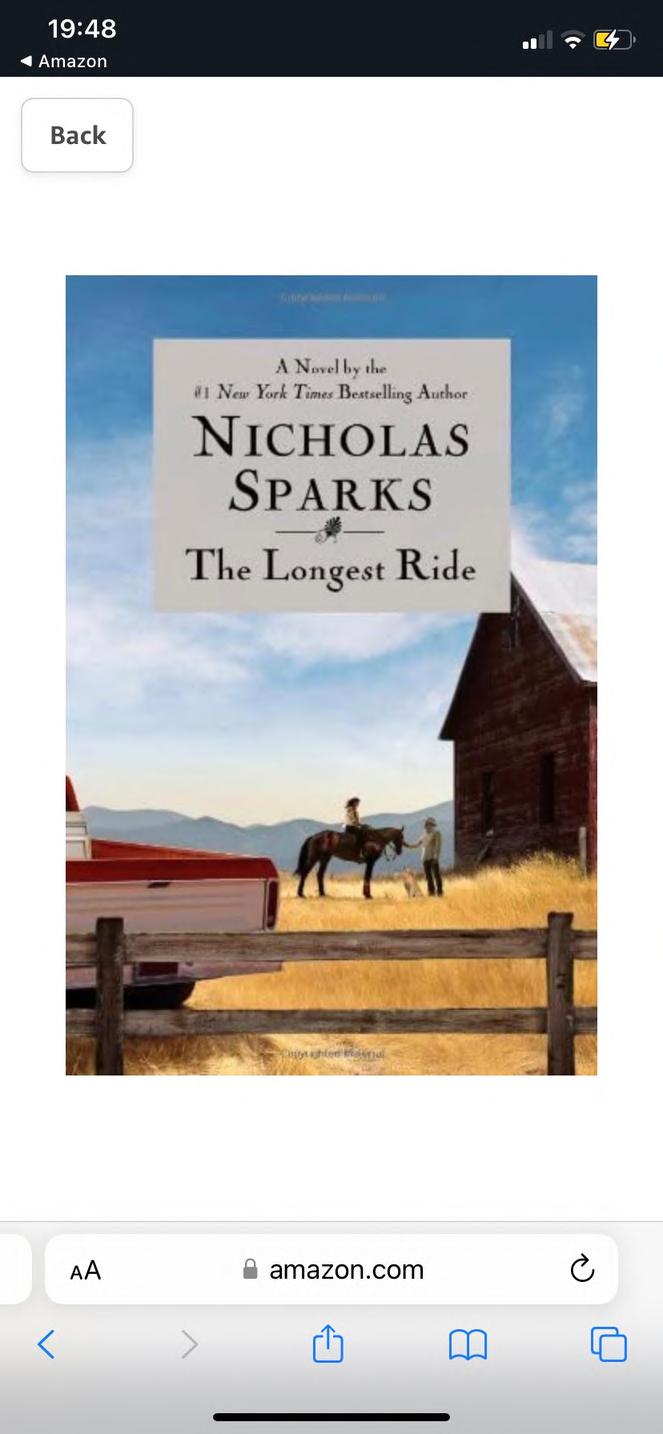
Adulterers, Vida Ognjenovic: A seminal work of modern Serbian fiction, this addictive psychological portrait tells the story of a young woman who has just been divorced, and, at the urging of her colleague, is processing her relationship and life through writing The reader becomes a confidant, unraveling protagonist Bubica’s worldview and sentiments in a chapter-by-chapter slow burn There’s a sense of voyeurism here, and also some discomfort This feels like an intimate conversation rather than an unambiguous tell-all Bubica gradually reveals more details, and returns to those she glossed over, as she seems to gain more trust in the reader. A complex book best digested over several sittings until its devastating conclusion
Operation Mincemeat, Ben McIntyre: In 1943, a drowned pilot washed up on the shores of Spain and changed the course of World War II In fact, the corpse was neither drowned nor a pilot, but he did bear an oeuvre of documents that represent one of British intelligence’s greatest masterstrokes These carefully-crafted documents deceived multiple German intelligence gatekeepers and reached Hitler himself; they ultimately led to the Third Reich’s fatal error in anticipating an Allied invasion of Greece and neglecting the true target of Sicily As much a tale of human character as strategic triumph, McIntyre’s book digs deep into how the operation was conceived and the psyche of those who executed it. It humanizes intelligence, emphasizing that information is no better than those who manufacture it and their understanding of those it targets Thus we also see the back story, and psychological portraits, of the Spanish and German agents susceptible to the ruse Operation Mincemeat was made into an excellent movie this past year, but like House of Gucci, it’s the book that offers far more valuable insight.
T H E R E A D I N G L I S T 8
Love Brings Love at Palais Galliera, Paris, France:

The Alber Elbaz show was a triumph both heartbreaking and hopeful Opening under a year after the designer’s death from Covid complications, it avoided the dichotomy of tedious retrospective or Instagram bait that many fashion exhibitions seem to fall into Rather, it was an inspiring and humbling homage to Elbaz’s hope, gregarious personality, and outsized influence. Highlights included an orange Hermes number inspired by Elbaz’s iconic glasses, a dramatic heart-themed Gaultier dress, an Elbaz “polo bear,” and a playful Raf Simons dress incorporating some of the late designer’s more iconic quotes There were also an array of new garments from AZ Factory, the socially-minded collective that Elbaz founded after leaving Lanvin and released the first collection of shortly before his death.
Paris-Athens at the Louvre, Paris, France: Organized to honor the bicentenary of the Greek revolution, this exhibition used a diverse variety of Paris and Athens-based artifacts to offer a nuanced perspective on how the global discovery of Ancient Greek archaeology coincided with the development of the modern Greek state Visitors were invited to consider the role of history and mythology in the process of both physical and ideological nation building. They also are taught about the invaluable role the French played in these processes: from the design of modern Athens to the creation of the Greek typeface Masterworks from the newly-reopened Greek National Gallery shed light on how turn-of-the-century Greek art conversed with impressionism and post-impressionism Sur la Terasse, by Iakavos Rizos, was the most noteworthy example.
Cartier and Islamic Art: Musee des Arts Décoratifs, Paris, France: Cartier and Islam, at first blush, are an unlikely juxtaposition for an exhibition But while it is difficult to see a common thread through many of this sprawling show’s pieces, the connections are nonetheless rich Islamic culture and design had a profound if underacknowledged influence on gilded age jewelry, a paradigm illustrated by Louis Cartier’s designs and partially shaped by his brother Jacques’s travels to India And, whatever your interest in history, this exhibition was a must for the spectacular gems alone :
National Yugoslav Museum, Belgrade, Serbia: Part of the House of Flowers complex, built to enshrine the remains of Josep Tito, the Museum of Yugoslavia offers a thorough discussion of the development of the Yugoslav state, Tito’s life, and the eventual transition to modern Serbia Newspaper clippings and brochures aptly capture political sentiments in the Balkans over the past century; they’re accompanied by artifacts from the world wars and a treasure trove of ceremonial gifts given to Tito by other world leaders I particularly enjoyed a temporary exhibition called “On Factories and Workers,” designed to “observe the topic of industry as an association of people ” This exhibition considered five former Yugoslav centers of industry (from copper to electronics to textiles), the poverty and disrepair that has recently defined them, and opportunities for rejuvenation.
Morozov Collection at Foundation Louis Vuitton, Paris, France: This magnificent exhibition, as a friend told me, could only have happened under the auspices of LVMH Over 200 works owned by Russia’s finest museums, including the Hermitage, the Pushkin, and the Tretyakov, were presented in Paris for the first time. All from turn-of-the-century collectors Mikhail and Ivan Morozov, they represented a veritable encyclopedia of French and Russian masterpieces from the likes of Manet to Malevich, Gaugin to Golovin, Rodin to Repin The highlight was Ivan Morozov’s “music room, ” which, in all its Maurice Denis and Aristide Mailloladorned glory, was directly transplanted from the collector’s Moscow mansion by way of the Hermitage Also notable were the Valentin Serov portraits, a series of storm paintings from France and Russia, Peter Konchalovski's imposing selfportrait, and a spectacular presentation of Van Gogh's "The Prisoner " The exhibition, extended by over a month due to its incredible popularity, was beautifully curated so that, even with thousands of daily visitors, one always felt they had space to breathe It was aided by a masterful audioguide that cast the paintings through a comaprative lens and brought the artists' often eccentric personalities to life. And, of course, it served as a beautiful reminder of historical French and Russian friendship against a difficult geopolitical backdrop
A R T & C U L T U R E 9
Sur La Terrase, Iakvos Rizos
Love Brings Love
Above: Ralph Lauren
Below: Bruno Sialelli for Lanvin

Christ, Konstantinos
Parthemis, 1900
Above: Jean-Paul Gaultier for Love Brings Love


Below: Cartier & Islamic Art
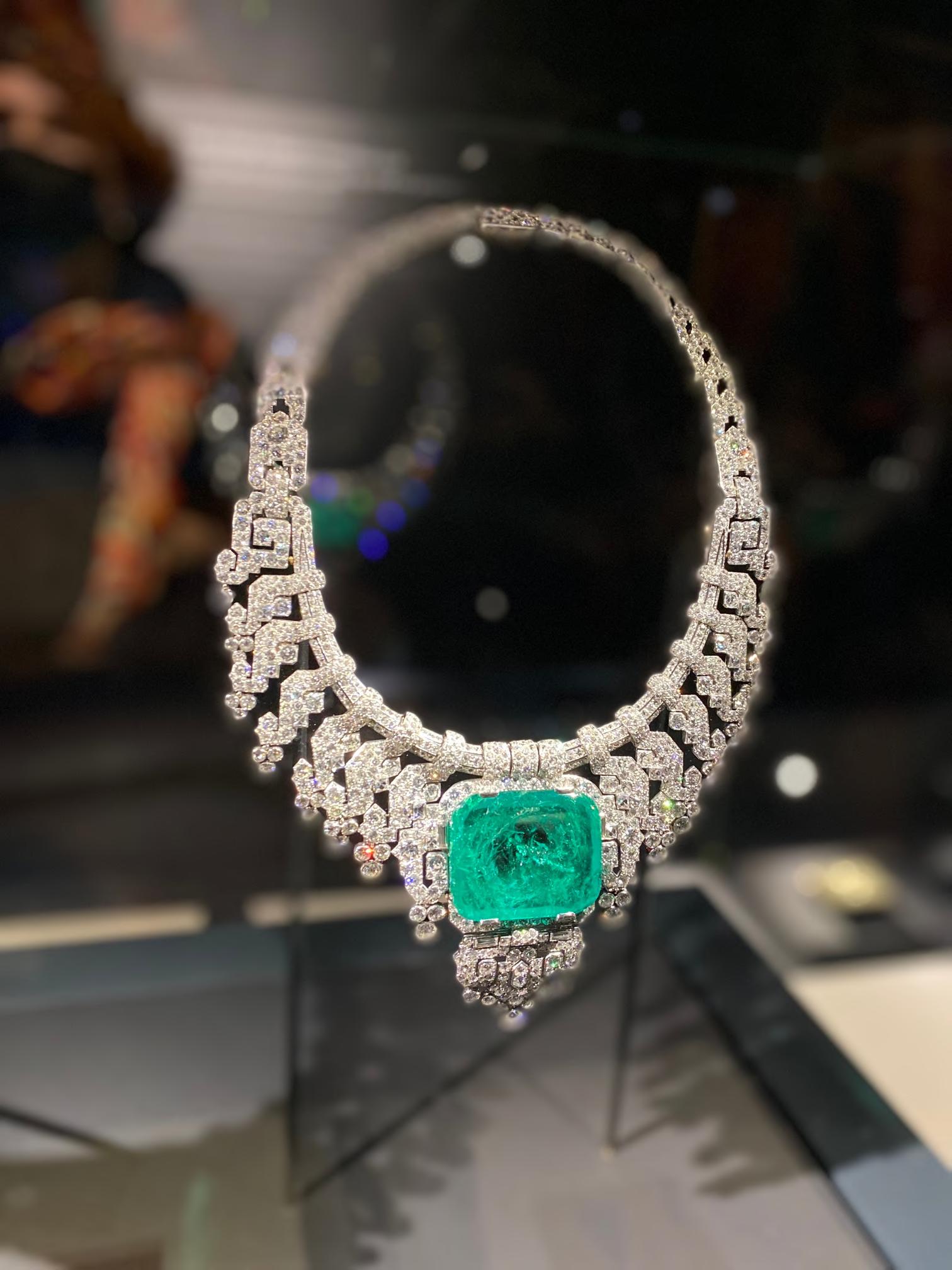
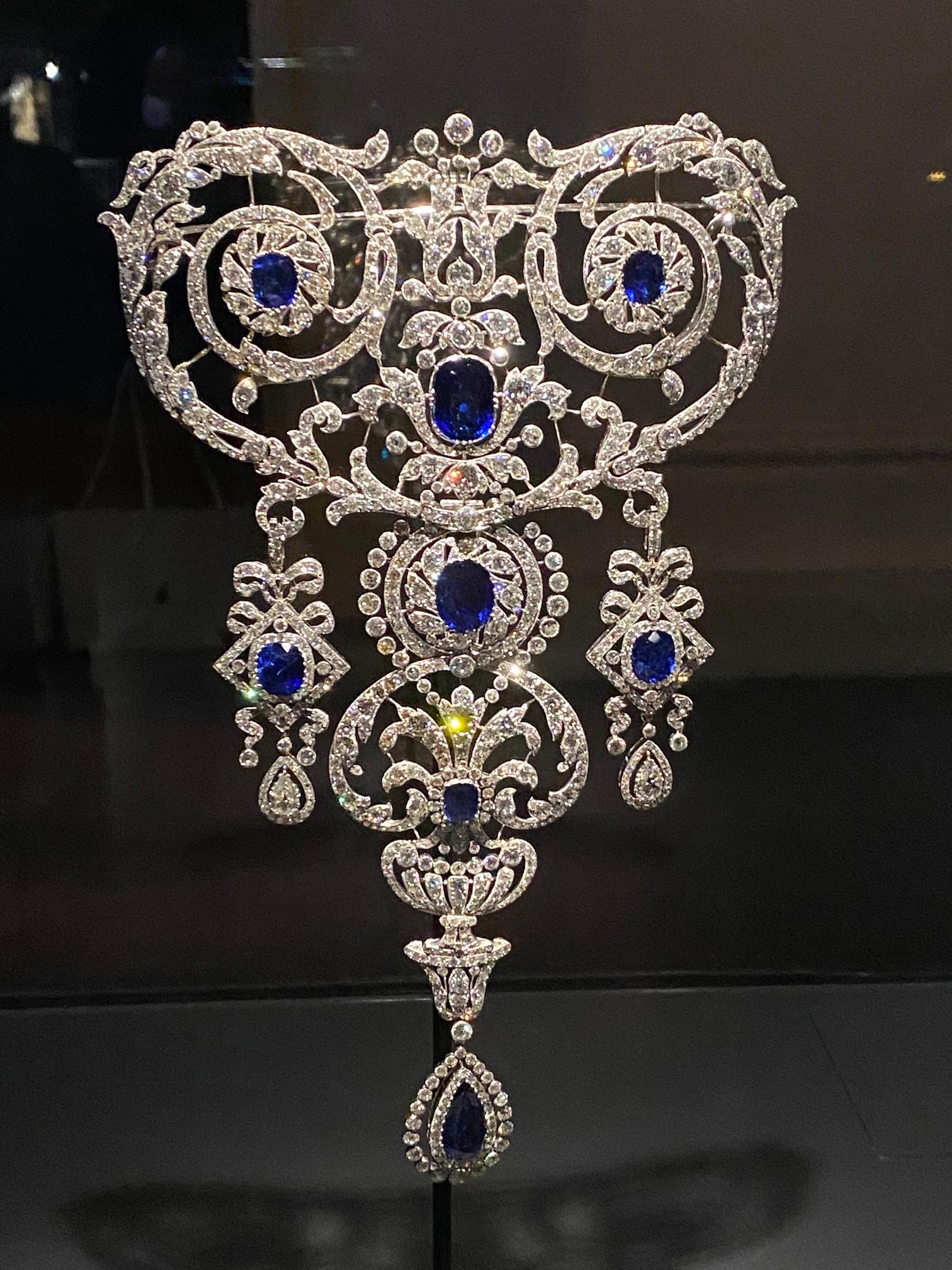
Delos, Nicos
Engonopolous, 1929
10
From restaurants to nightclubs, from museums to markets, here are a few of my favorite haunts from my last five months based in Paris.
Gigi: Come here for aperol spritzes, live music, and one of the best sunset views of the Eiffel Tower Gigi is an institution of Paris’s fashion scene and one of my standing reservations during a hectic Fashion Week calendar

Manko: “Manko Loko” was the movement every Thursday night this spring; this Peruvian restaurant, located in a gilded basement space beneath Gigi, threw a weekly junglethemed party complete with live drummers and saxophonists Tribal vibes define the sophisticated mixture of drum and bass, and the crowd, on the older and more well-dressed side even for “golden triangle” clubs, elevated the atmosphere. For cocktails the ‘Manko Sour,’ one of the best. Pisco sours I’ve had outside of Peru, is de rigeur. The food menu is also solid throughout; try the bao buns and sea bass ceviche
Rue Cler Market: Even if you ’ re not living in the 7th, the Rue Cler market remains one of Paris’s most efficient (and enjoyable) destinations for all of your grocery needs Within my first week in the city I found my go-to poissonerie, greengrocer, fromagerie, and wine shop here. Particularly memorable is the fresh shellfish at La Sablaise: my lunches often comprise a dozen oysters from here served with kiwi
Bvlgari Bar: One of Paris’s newest hotel openings brought one of Paris’s hottest hotel bars The sleek Bvlgari space is a contemporary foil to the old-world grandeur of nearby George V, Plaza Athenee, and the Kleber…and the creative cocktails reflect this.
Maison du Caviar: A Beaumarly Group property with a distinct Russian glamor, this restaurant honors the legacy of what was once Paris’s only importer of Caspian caviar The re-vamped menu boasts three of my most-ordered dishes in Paris: the white tarama, the surprise avocado (stuffed with salmon roe), and the bottarga spaghetti. The Russian vodka selection (beluga martini, please) is unmatched.
Coco: It’s all about atmosphere at Coco, which is nestled inside the opulent Palais Garnier and by far my favorite brunch spot in the city A Cafe Society restaurant, it embodies a 21st century Parisian glamor while serving upscale renditions of French and American comfort food If you visit during the summer, ask for a table on the expansive terrace In winter, sit inside and enjoy live jazz sets that create an ebullient yet sufficiently restrained “champagne brunch” atmosphere.
The Clarence: This two-Michelin star restaurant, located in one of the Golden Triangle’s gilded mansions, surpasses comparable three-stars in terms of service, setting, and food It’s owned by Domaine Clarence Dillon, one of the biggest players in Bordeaux’s wine industry, and as such, the rotating menu and carte du vin offer the most elegant nod to Bordeaux you’ll find in Paris. Chef Christoph Pele has found the perfect blend of creativity and tradition, and attentively makes rounds of the dining room to welcome guests P S this is the best venison I've ever had
Canard & Champagne: This 9th arrondissement gem, nestled inside a gorgeous passage off Boulevard Montmartre, serves exactly what the name suggests The dinner “canard and champagne” pairing is a great deal which includes stellar foie gras and a classic magret.
Musee Dali: The only thing worth going to Montmartre for Encountering a few tourist hordes will be worth it once you enter this discreet (and almost entirely empty) jewel box of a museum A rare modern museum that focuses more on education than Instagram, it contains a treasure trove of information about Dali’s life, oeuvre, and artistic process that could keep you here for hours. There are also dozens of sculptures, sketches, and engravings: my favorites were an extensive collection of Dali’s illustrations for Alice in Wonderland
Mavromattis: A rare Michelin-star Greek restaurant, Mavromattis offers one of the most enjoyable tasting menus I’ve experienced all year. Particularly outstanding are the sommeliers, who deftly preside over both prestigious and obscure wines from Crete, the Pelopponese, and everywhere else in Greece As for the food, my highlights are the lamb stuffed with cypriot halloumi and the "imperial pigeon" with pistachios, beetroot gnocchi, and artichokes
E D I T O R ' S G U I D E T O P A R I S 11 On the terrace at Gigi
D e s t i n a t i o n o f t h e S e a s o n :
A n a n t a r a R e s o r t , T o z e u r , T u n i s i a
W a n t y o u r f a v o r i t e d e s t i n a t i o n , s o n g , o r b o o k o n t h e E l y s i u m H o t L i s t ? K n o w a n y w h e r e w e s h o u l d h e a r a b o u t ?
C o n n e c t w i t h u s o n I n s t a g r a m a t @ w o r l d o f e l y s i u m
O r g e t i n t o u c h a t e l y s i u m c o c k t a i l c l u b @ g m a i l . c o m
Y o u c o u l d b e f e a t u r e d i n t h e n e x t e d i t i o n o f E l y s i u m m a g a z i n e !

6 6
We'll Always Have Courch
24 Hours in France's Most Magical Ski Destination

For may people the gateway to Courchevel is the highway from Lyon I prefer to break up the drive with a stop for coffee and a pain au chocolat in one of the fairy tale towns along the way
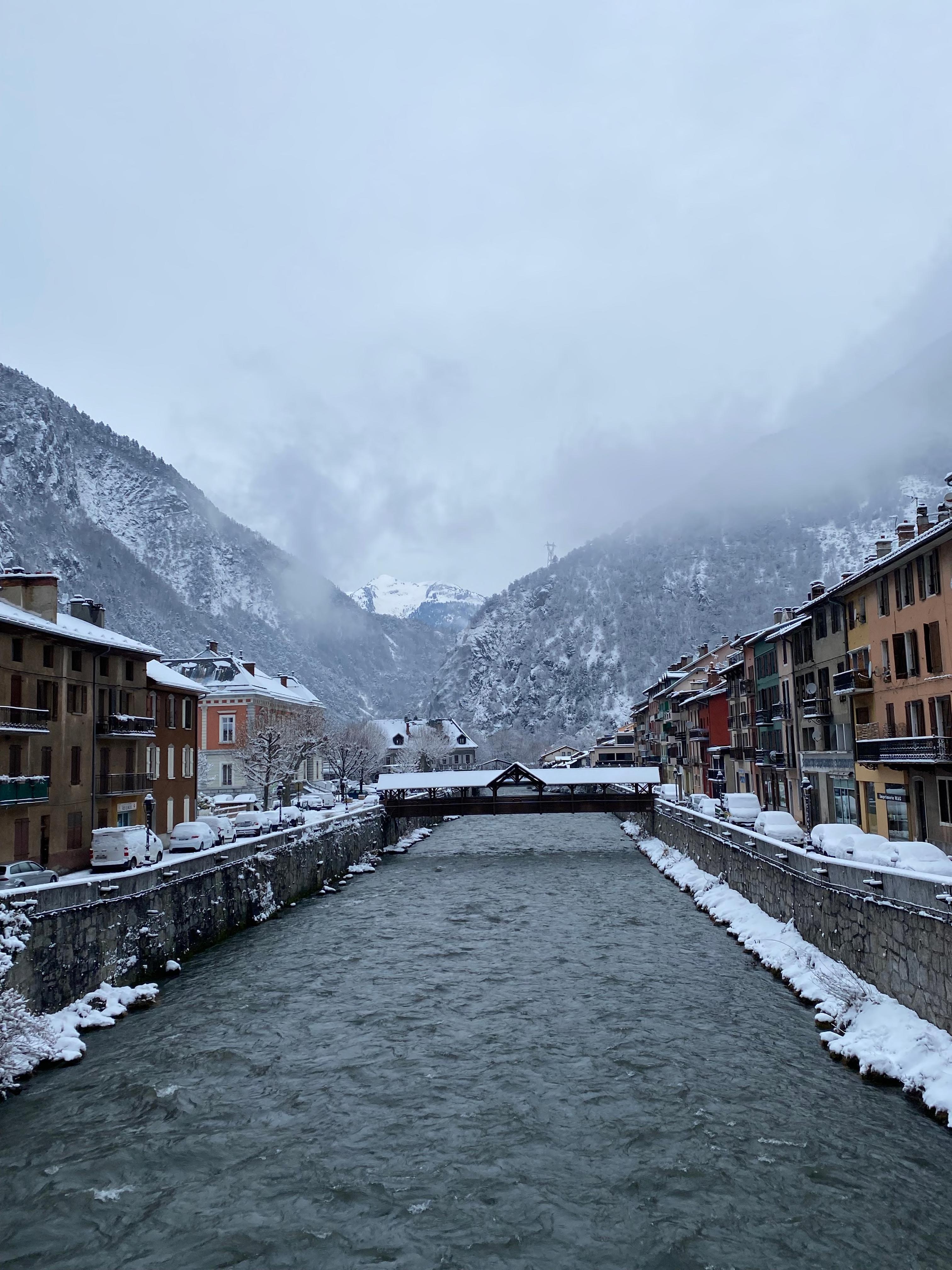
09;47 14
11:26
On the slopes above 1850. The many dramatic Richard Orlinski sculptures create fun photo ops as you make your way towards the highest runs and the route towards Meribel.

15
15:08
Captain America standing tall above Vizelles lift. Suisses via Marmottes was my favorite run this winter...and it didn't hurt that the piste brings you directly into Cap Horn's legendary après ski after your last run.

Après the après? For me the move is a sauna sesh followed by some gallery hopping or the luxury shopping that this seductive piece references.

19:38
17
What could be better than a three-Michelin star dinner? A bespoke three-Mchelin star dinner with an open kitchen. Le 1947, which serves just five tables each evening, provides one of the world's most intimate dining experiences from the luxurious confines of Cheval Blanc. Pictured here with Chef Gerard Barbin, who combined three of my favorite flavors in a black turffle/foie gras/mango entrée before serving me his signature dish inspired by the Alps' forest floor.

22:39
18
23:47



Content after an excellent dinner. Debating next moves. During the Russian New Year period, the 1850 slopes were often buzzing until midnight with live music, markets, and even ski torch shows.
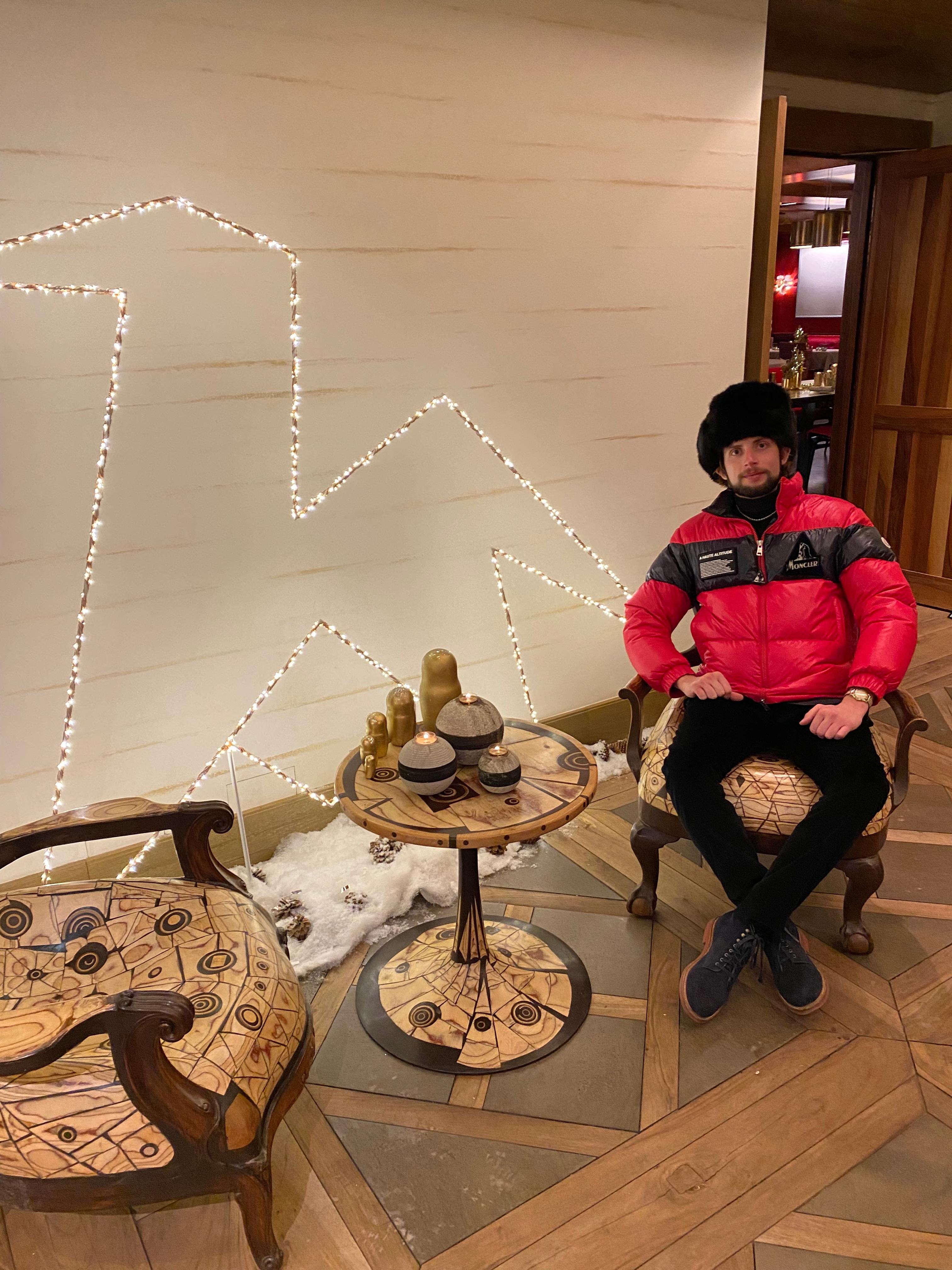
19
03:22
Of Dom, Beluga, and (slightly blurry) chaos. Bienvenue à Mangeoire. Bonne nuit mes amis.

20
PARIS FASHION WEEK A/W 2022

The Official Elysium Guide

F U T U R I S T I C N O S T A L G I A





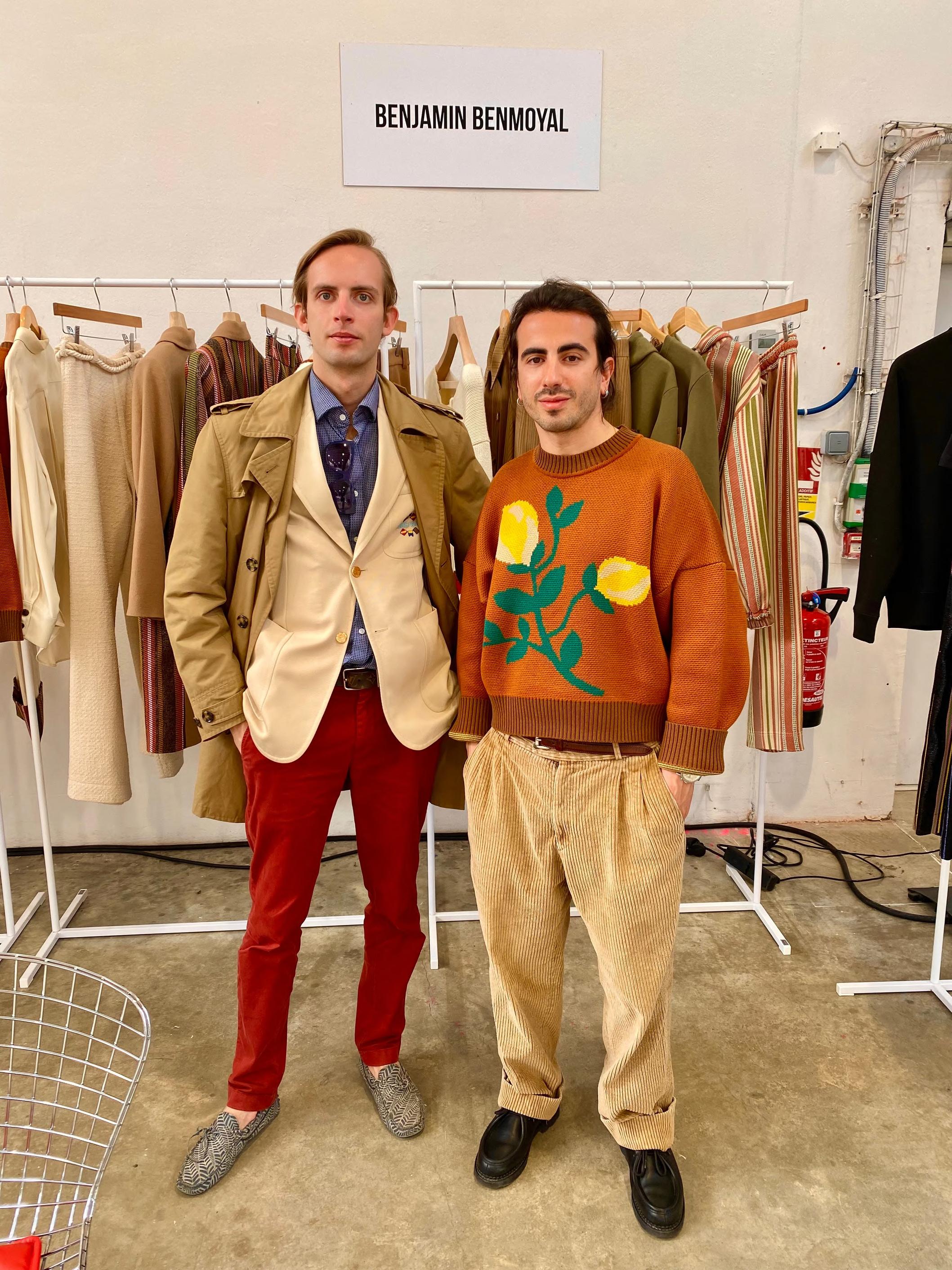
B E N J A M I N B E N M O Y A L G O E S B A C K T O T H E A T I C E C O - F R I E N D L Y C O L L E C T I O N
Wistfulness for the past and optimism for the future, as experienced from a perspective that eschews romanticism for critical reflection, have always been central to Benjamin Benmoyal’s work The French-Israeli designer has a perspicacious worldview shaped by his unique set of experiences; he both went to fashion school at Central St Martin’s and completed military service as a commando paratrooper Since starting his brand in 2019 he has created designs that impart a certain sense of nostalgia; however, Benmoyal seeks not to return to a glorified past but instead to use its sentiments and lessons to build a sustainable and peaceful future
Fittingly, Benmoyal’s debut collection was entitled “It Was Better Tomorrow.” The collection featured dramatic silhouettes, radiant shades of blue, orange, and purple, and a revolutionary new material: a fabric based on recycled cassettes and VHS tapes. The vivid color palette and voluminous dresses have been noticeably toned down in recent years, evolving into more wearable garments and, I would posit, a more cohesive style. However, the fabric (a blend of the repurposed tapes, recycled yarn, and a wool fiber named Tencel) remains the same It is Benmoyal’s DNA: modernity envisioned through a retro lens in a wholly unique manner
Benmoyal eloquently described his philosophy on time, and how it influences his collections, in an interview with the Fédération de la Haute Couture et de la Mode that was released on the first day of Fashion Week “The idea of reusing the past as a tool is core to my work,” he said “But I’m super careful with nostalgia because we tend to idealize the past way too much I don’t think we were doing better in the past than we are in the present ” (As an example, Benmoyal emphasized the progress made in combating racism and sexism in recent decades). It is not the societal conditions of the past that inspire him; rather it is a certain mindset of optimism best epitomized by the generation of the 1960’s. “People in the pas a much more positive vision, vision and use it for my own thing nowadays.”
Benmoyal’s F/W 2022 collection was far from naive; however, it was defined by an elegant simplicity that made it both versatile and comfortable Tan, cream, dark green, and earthy pink dominated an array of casual sweaters, t-shirts, hoodies and pants that hung gracefully if loosely off the body The entire collection was reminiscent of nature, and not just because of the Capri-esque lemon and tulip motifs that danced across two of the sweaters To me, this was a “salt-of-the-earth” desert wardrobe, blending in perfectly with sand, rock and brush It felt lightweight and breathable enough to withstand the heat of the day yet substantive enough to be comfortable on surprisingly chilly winter nights (a phenomenon I discovered on a January trip to Sharm el Sheikh where the temperature dipped to 8 Celsius). Sharm, of course, shares a similar climate to Israel and is just a couple hundred kilometers away from the border. Whether intentionally or accidentally, this collection feels more inspired by and uniquely suited to Benmoyal’s native Israel than any of his previous work.
A/W 2022 also feels more restrained and focused than past years The sparing use of color increases the power of said colors and it is small details that define the garments Striped breast pockets turn neutral t-shirts into eye-catching statement pieces through the interplay of black, pink, and blue Belts are artfully used to make jackets and pants appear playful And the signature Benmoyal fringe, a powerful allusion to cassette tapes, injects a free-spirited youthfulness reminiscent of the 60’s

In the FHCM interview, Benmoyal was asked what clothes make him feel most self-assured He responded: “I don’t have any clothes that make me feel more self-assured but clothes can make me feel less self-assured I just need to be comfortable ” The collection distills the essence of that quote; it combines past, present, and future, while drawing inspiration from the earth we inhabit, to create an effortless and visually satisfying collection that is powerful without
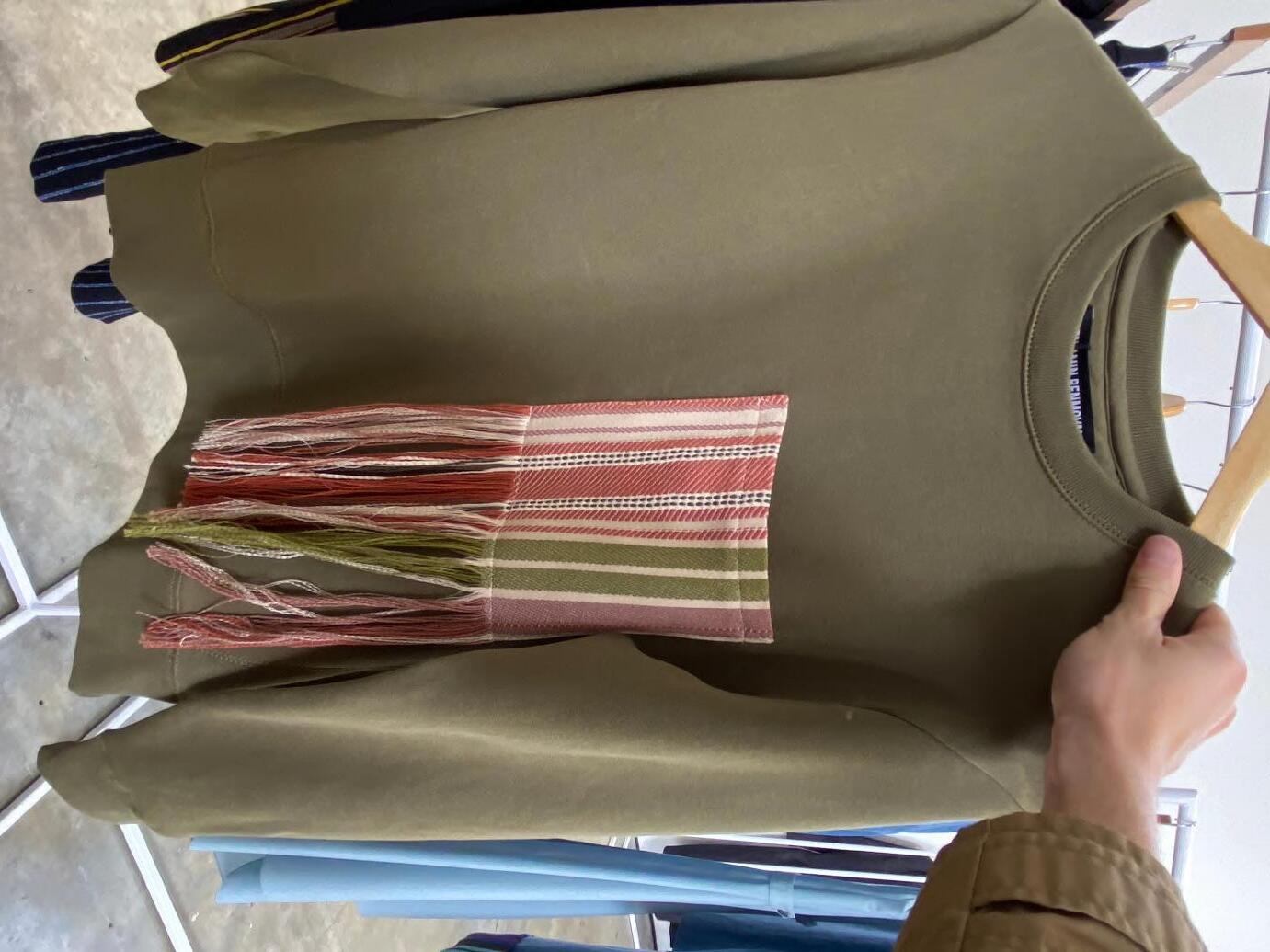
M O S S I





C R E A T I N G D A R K P O E T R Y T H R O U G H F A S H I O N & A R T 25
Art and fashion have always been inextricably linked Artistic periods and famous paintings often serve as inspiration for designers, who sometimes even explicitly include their source material on the garment. Collaborations are common, with artists being invited to create specific pieces for a capsule collection. However few designers tie their work more closely to art and artists than Mossi Traore. The visionary Malian-French designer has created a brand that is as much a philosophy on ethics, diversity and social responsibility as a clothing line…and he invites a different artist into an intensive partnership each season Rather than serving as a catalyst for a collection or designing one or two pieces, Mossi’s chosen artists are immersed in the entire creation process A true meeting of the minds occurs, and the art in question is intertwined with all aspects of a given collection
This season ’ s chosen artist was the sculptor Angelique Lefevre. A textile and thermoplastic sculptor, Angelique was a perfect fit for a collection focused on structured motifs and sustainability. To begin with sustainability, many of the pieces were made from casein fabric, an innovative cotton-adjacent material composed of a milk protein extracted from overfermented dairy products. Mossi’s development of casein is an environmentally friendly choice but also a socially conscious one; the casein is sourced from waste milk and thus provides an additional revenue stream for French dairies It’s the type of innovation that has the potential to beneficially revolutionize the fashion industry, particularly if it spreads to large textile-exporting countries (such as China and Bangladesh) that emit significant pollutants and have agricultural-based economies
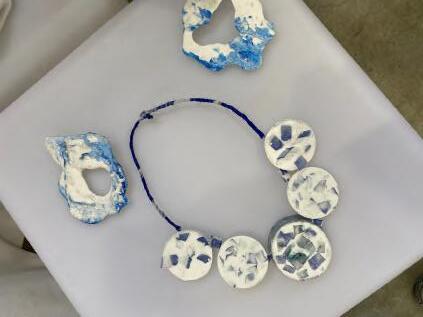
Such an innovation is not surprising from Mossi, who has always been an ambassador for ethical fashion and takes a hyper-local approach to production His collections are created in Villiers-sur-Marne, the suburb in which he grew up. Whether through founding a design school and workshop in his old neighborhood or holding fashion shows featuring local talent, collaborating with and assisting his community are central to his ethos.

Mossi has described his work as “dark poetry” and his designs have conversed with ideas of religion and death for years
His first fashion show, in 2011, was held in a church; later on he took the bold step of holding a show in Pére Lachaise Cemetery The theme returned for his Paris Fashion Week debut in Autumn/Winter 2022; a skull motif, sporting a backwards cap in many permutations) was central to his collaboration with Angelique It appeared on everything from white quilted jackets to silky black tops to a pair of Stan Smiths, often in an ethereal blue that was reminiscent of both the sea and amoeba-like life forms. This was streetwear, but with a clean color palette, graceful form, and exuberant energy: distinctly Mossi, but also distinctly a product of this collaboration.
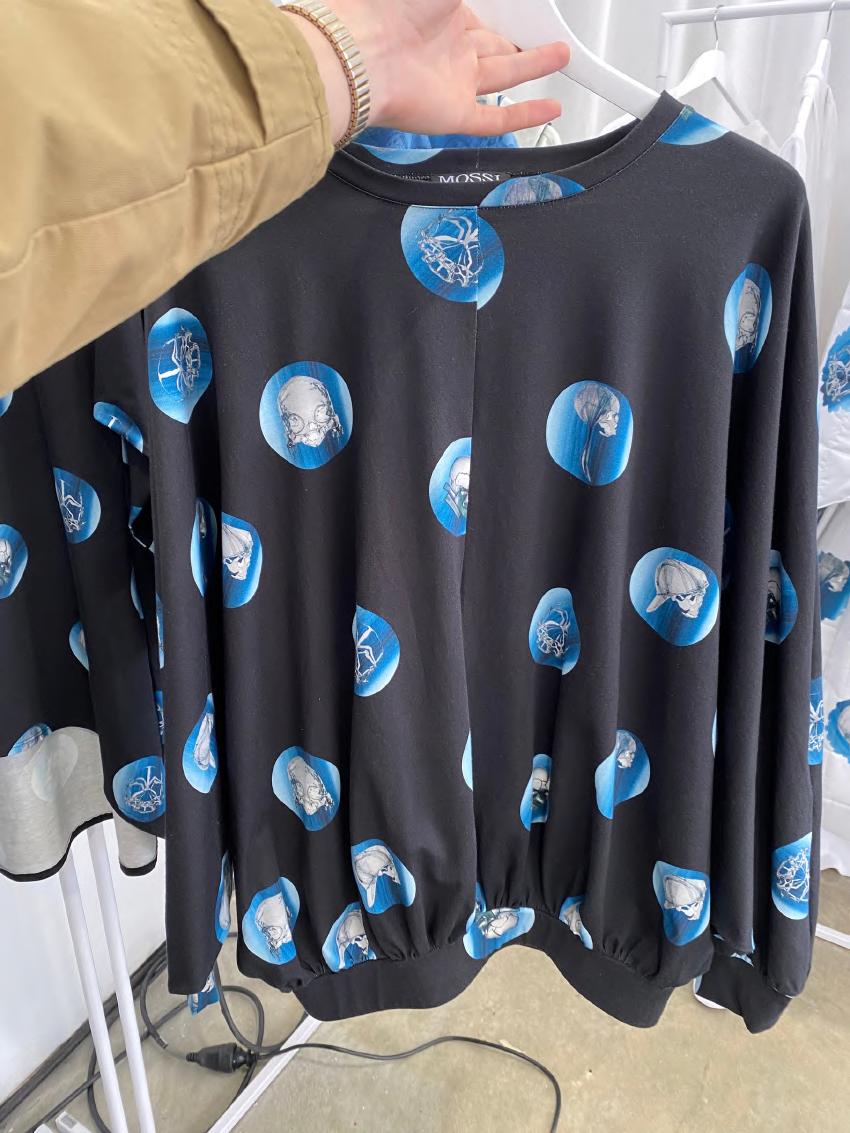
What’s next for Mossi? In just a week he’ll be debuting a khadi collection with a runway show at Lakme Fashion Week, a fitting venue given his rich history of travel in India But that’s just one step in the creation of the Mossi-verse From running his design school to collaborating with the Paris Opera,, his endeavors run the gamut through education, theater, and art And, although his career is just taking off, he’s already thinking of younger generations and how to pass on the art of Parisian couture to them.

26
Situationist
Grit And Grace In Georgian Design

27
Paris Fashion Week took place in the midst of a tragic geopolitical situation Day Two, when the Situationist show took place, dawned less than a week after the conflict between Russia and Ukraine began. The pain from this crisis was particularly acute in Georgia, a country that had a short war with Russia in 2008 and has been disputing the status of separatist South Ossetia since. Thus the brutalist entrance to the event thrown by Georgian-based Situationist seems appropriate. A pile of haphazardly strewn tires, smoking as if in a dumpster fire, greeted guests before they were escorted into a minimalist industrial space
The collection was anything but minimalist I often talk about the amazing burst of creativity that succeeded the fall of the Soviet Union; after decades of strict state control, artists, architects and designers were suddenly free to experiment and realize their own visions of beauty This paradigm was especially pronounced in Georgia, which saw gastronomic, design, and fashion revolutions that reached the international spotlight (most notably, of course, when Demna Gvasalia took the reins of Balenciaga).
One such fashion revolution was started by Irakli Rusadze, who founded Situationist when he was just seventeen years old. A self-taught designer, Rusadze used traditional Georgian design techniques to create a new sartorial vocabulary that blends textures and materials in bold combinations. He has a unique talent for creating complementary ensembles from dramatically different fabrics; for example, at the A/W 2022 presentation one model looked effortlessly chic in a mix of leather, wool, and denim. Situationist designs both men’s and women’s wear and there’s a touch of androgyny in the geometric, physically substantive, and often oversized garments
A/W 2022 may be the brand’s most memorable season yet The collection was not particularly large However, it threatened to overwhelm with the sheer amount of colors, materials, and influences–which somehow still formed a cohesive and logical whole For me, the men’s outfits were the highlight. Despite being an avowed opponent of any type of leopard or cheetah print, I fell in love with the outfit pictured at left. The bold ensemble was held together by a stunning pair of cranberry red wide-legged dress pants.


28
Equally memorable was a cropped and sleeveless denim jacket with wool shoulder pads The piece, which cut a surprisingly masculine form, was paired with a wool fisherman’s sweater decorated in traditional Georgian patterns, a fur tote, and a pair of sea blue pants made eye-catching by their unique pocket placement. The final men’s piece which caught my eye, and was most popular among the assembled crowd of photographers and journalists in attendance, was a tight-fitting hooded black shirt with a sexually suggestive slit down the chest. Part of a structured all-black ensemble, it suggested both lethality and vulnerability, a sort of homme fatale garment that bridged several different styles and upset traditional gender expectations while remaining distinctly masculine
Leather was the star of the women’s collection Rusadze pulled off yet another unlikely combination by designing a light pink leather coat with a cherry red fur collar
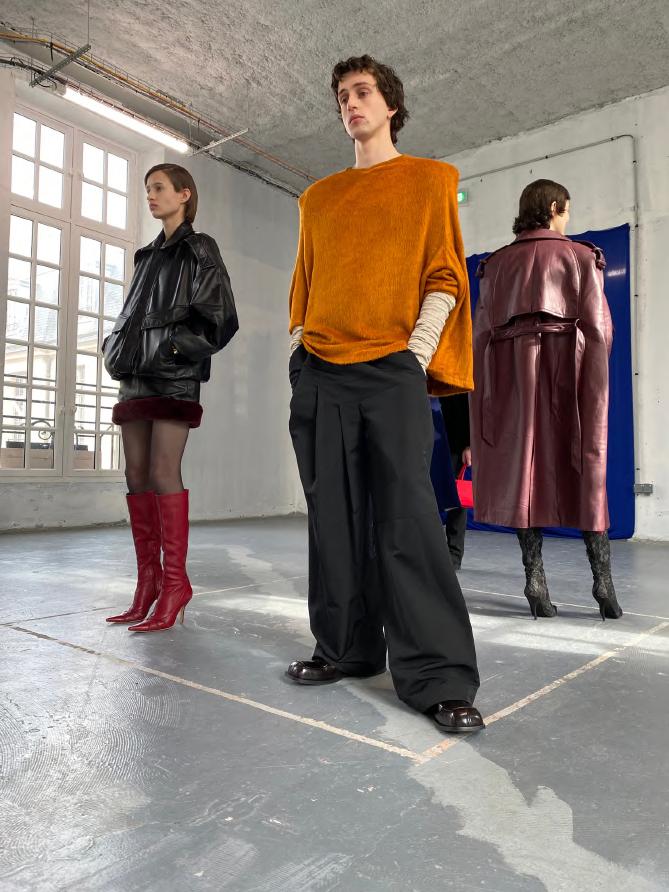
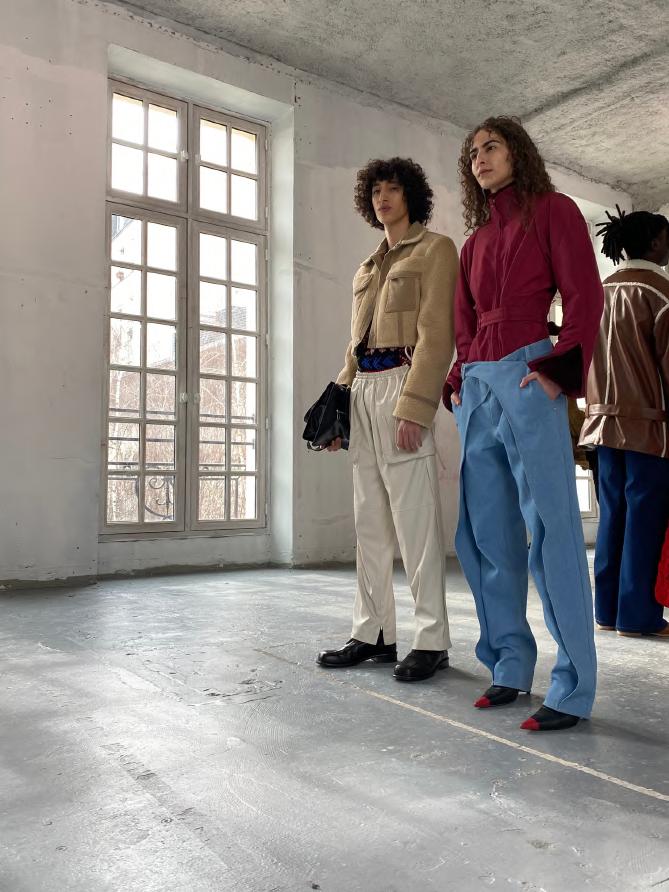
Completed with dark pants, tall back heels, and a Tiffany’s blue knit bag, it was a power outfit almost in spite of itself. More simple was a long burgundy leather trench coat, paired to perfection with a deceptively sexy blue knit sweater and skirt.

In many ways, this was the best exemplar of the secrets of Rusadze’s craft: fine details can make complex simple, simple complex, and imbue any material or cut with either power or sensuality.
Wool danced next to various combinations of leather, cotton, and fur, through much of the women’s collection. The one outfit that broke the trend was a stunning silk top in Tiffany’s blue accented with a gold cuff, dark blue skirt, and vivid purple heels. This elegant look reminded me of the Pablo Picasso quote: “you must know the rules like a pro so you can break them like an artist ” It demonstrated Rusadze’s easy mastery of the classic (albeit with touches of vibrant personality) and explained the basis from which he is creating new classics, which I have no doubt several styles from A/W 2022 will become There is a certain universality to Rusadze’s looks, and lessons to be learned for designers in niches spanning the fashion industry both geographically and stylistically As for Rusadze, I think the young designer is still near the beginning of what I fully expect to be a meteoric rise.
29

17 T 30
S C U B A S T Y L E
There is something inherently irresistible, inspiring, and addictive about places where humans are not supposed to be From the polar ice caps to outer space to the depths of the ocean, unknown frontiers beckon us, as alluring as the sirens, to be explored, experienced, and conquered Unsurprisingly, such frontiers have been a source of major artistic influence, from opera to ballet to music to sculpture. They have also had an indelible impact on the fashion industry, as thoroughly explored in FIT’s 2017 exhibition “Fashion from the Extreme.” Demna Gvasalia designed couture expedition puffers. Alexander McQueen envisioned a fantastical collection based on Atlantis. And Pierre Cardin incorporated both the designs worn by actual astronauts and the imaginative imagery of 1960’s science fiction into his unique space cowboy looks. However, I have found that the literal ocean depths (sans mermaids and lost civilizations) have been traditionally underappreciated in the fashion world Furthermore, while the fur of arctic explorers and the shiny thermally-insulated suits of astronauts have frequently been replicated and riffed on by designers, the neoprene essential to deep-sea exploration has been generally ignored: even by those seeking to evoke mysterious underwater imagery through their garments
That’s why Marine Henrion’s Autumn/Winter 2022 collection was so refreshing Marine designs pragmatic and stylish looks produced 100% in France, and since founding her eponymous brand a year ago she has released a series of cohesive capsules with a distinctly modern feel Her structured dresses are inspired by contemporary architecture; she has cited Zaha Hadid and Santiago Calatrava as two major influences. Indeed, in considering her Summer 2022 collection I could see the smooth curvature of Hadid’s Heydar Aliyev Center and Calatrava’s Dubai Expo Emirati Pavilion dancing across the minimalist black and white garments. The architectural theme remained for A/W 2023; however, it was the materials that stole the show. Henrion designed an innovative allneoprene collection inspired by scuba suits but repurposing their fabric in a new and elegant way Neoprene, it was manifest, is a perfect medium for translating Henrion’s geometric vision The Ivana Brassiere, an all-white garment anchored by eye-catching metal eyelets, was both athletic and feminine when paired with a neoprene skirt A minimalist cropped jacket (two-toned in black and white, like the entire collection) was sophisticated in cut and daring in texture And the Alexa “oversized coat,” a broadshouldered behemoth adapted perfectly for the rain, wind, and light snow of a Parisian winter, brought Hadid and Calatrava together with Alexander Calder in a garment both durable and deceptively delicate. It was the perfect piece for street style in a late-February fashion week.
While this seems to be a one-off capsule from Henrion, the concept can be taken much further and I hope that the fashion world took note. Made of dive-ready neoprene as functional below the surface as it is stylish above it, Henrion’s garments can go straight from the depths of the Med to a Riviera beach club Who knows? Maybe they can inspire a whole new après-dive culture

M A R I N E H E N R I O N M A N I P U L A T E S N E O P R E N E T O M A K E S P L A S H W I T H D E B U T C O L L E C T I O N
31
S O U L O F G E O R G I A
I’ve closely followed the dynamic Georgian fashion scene for years and have been entranced with bags and knits emerging from the country’s young brands since I discovered Woyoyo in its inaugural year of 2017 Thus it was no surprise that Maroma Collection, in collaboration with Tbilisi-based concept store Chatsma, was a star at Tranoi Showroom’s A/W 2022 edition. Maroma first caught my eye with their elegant and oh-so-Georgian wooden bags, available in limited runs of cream, chocolate brown, and bright green and notable for their smooth “pebbled” texture. These were fittingly presented next to some of Woyoyo’s most popular products, knit bags ensconced with spherical wooden “scales” complete with wooden clasps and chains.


The knit theme was continued by the most colorful Maroma garments Fantastically shaped wool sweaters were presented in the mustard yellow that is rapidly becoming a “color of the season” and a patchwork of reds, browns, and greens that recalled both harlequins and matadors Most impressive were the simple yet sleek leather jackets offered in pure white and unique shades of red and pink ‘ Proper and preppy, they could be paired with almost any of the Maroma or Woyou bags for a versatile look with both sophistication and a playful personality.
Georgian heritage, from patterns to proverbs, is deeply embedded in Maroma’s identity and the collections it produces A distressed jacket in black denim was emblazoned with sayings in the flowing Georgian alphabet Another jacket was anchored by a pattern famously worn by one of the country’s most iconic ballerinas Together the Maroma oeuvre links history and modernity in a selfassured way; it links components of some of my other favorite Tbiisi-based brands and brings “Georgia to the word” through designs that can complement a wide variety of styles.

F R O M D E N I M T O K N I T S , M A R O M A C O L L E C T I O N C E L E B R A T E S G E O R G I A N H E R I T A G E
32
S U S T A I N A B I L I T Y S P O T L I G H T
Based in the Faroe Islands, a semi-autonomous North Sea nation between Norway and Iceland, Guðrun and Guðrun has been making high-quality knitwear with a hyper-local focus for over two decades The Faroe Islands’ most famous fashion export, the brand, headed by partners guðrun rógvadótti and guðrun ludvig, is fiercely proud of its island identity and emphasizes Faroese traditions both in its materials and designs. To Ludvig, “modern fashion and traditional knitwear are not all that different.” Guðrun and Guðrun’s hand-knit sweaters are made of all-natural fiber; the wool is 100% sourced from sheep that freely roam the Faroese mountains.

To purchase a Gudrun and Gudrun sweater is in many ways to return to fashion’s roots: it is as much about embracing a mindset and worldview as wearing a specific garment The brand describes its vision as “bringing decency back to the fashion industry ” It markets its sweaters as lasting a lifetime, a comforting step towards de-commercialization even with a 350 euro pricetag For A/W 2022, it was pastel colors and distressed details that stole the spotlight Delicate pink and sea-foam green stripes danced across one geometric sweater while interlocking blue and pink diamonds added a youthful innocence to another Most bold was a sleeveless and near-backless navy sweaterdress More classic was an achingly soft white sweater that recalled both Chanel and YSL with its Mondrianesque black lines.
Guðrun and Guðrun, to its credit, adds new influences and looks to its repertoire each season. To me, however, the brand, more so than most, is all about investment pieces that can be worn repeatedly and not confined to a specific time of year or even generation. They’re meant to be cherished, lived in, and, just maybe, cause us to reconsider the fashion cycle

G U Ð R U N A N D G U Ð R U N , F A R O E I S L A N D S , N O R W A Y
It’s hard for a young brand to stand out at an exhibition of over 90 designers. However, that’s precisely what Maison Youlou did at the Palais Brogninart, capturing my heart with what I viewed as the most unique story among dozens of inspiring labels
Youlou is a collaboration between Youwen Xiong and Luc Jiminez, partners who have spent their whole careers in the fashion industry (including several decades as professors) but who have little previous experience as designers The pair has served at the Atelier de Conseil en Création Sino-Français; not surprisingly their brand, while France-based, has deep ties to China Their first collection is composed exclusively of camel wool sourced from the Kounas region of Western China The wool is harvested by hand during “shedding season” in alignment with Youlou’s philosophy of “sustainable and sole sourcing.” Xiong and Jiminez’s team then turns it into dresses, coats, scarves, and even a limited selection of home goods.
The comfortable yet luxurious collection is monochrome; Maison Youlou uses no dies and thus all the clothes retain the original camel color of their yarn.


Maison Youlou, built along similar philosophies to Guðrun and Guðrun, has great potential for growth I will be watching closely to see what initiatives Xiong and Jiminez introduce next season and how they find their niche in the Parisian fashion market

M A I S O N Y O U L O U , P A R I S , F R A N C E
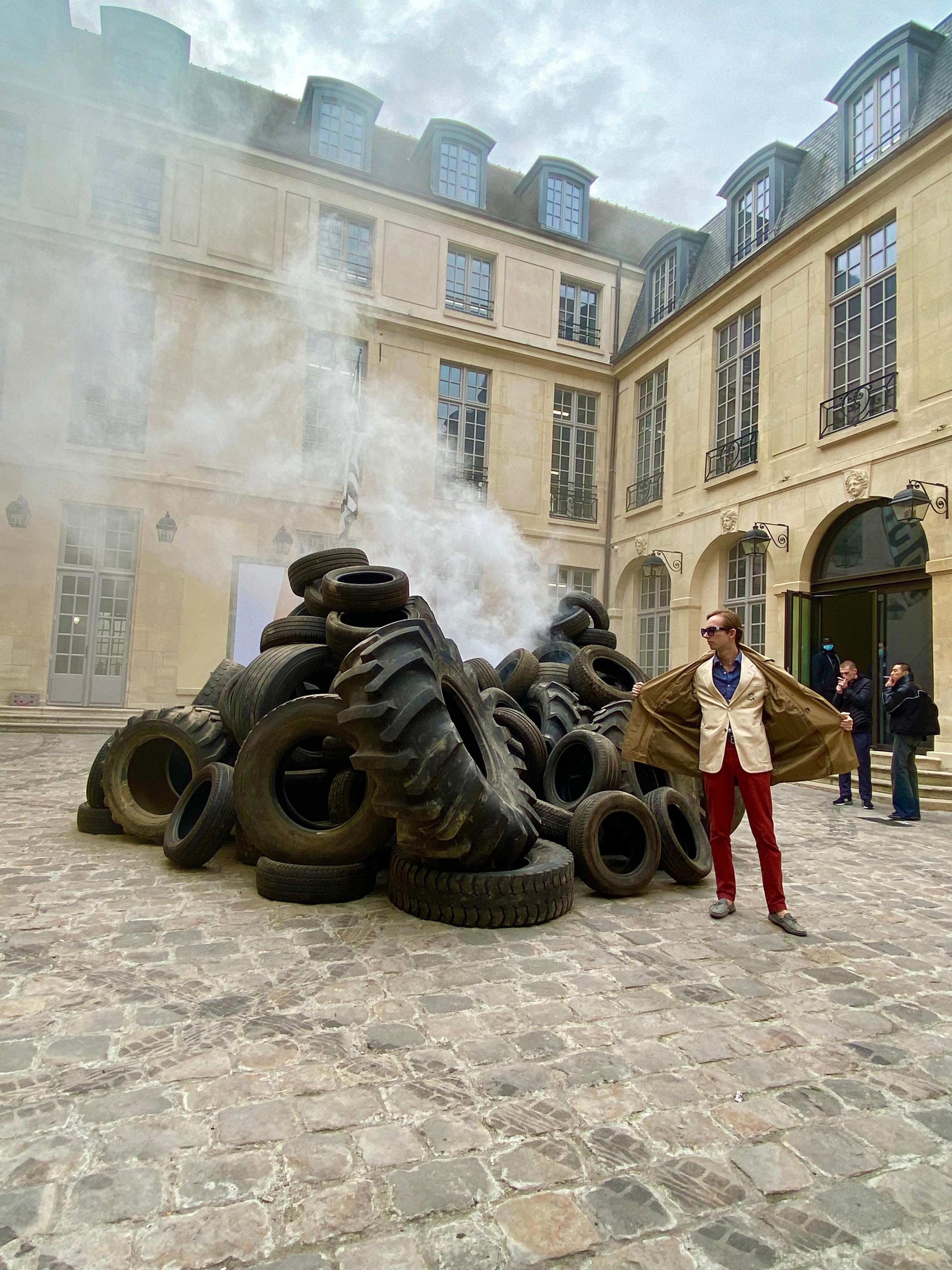
accessory spotlight


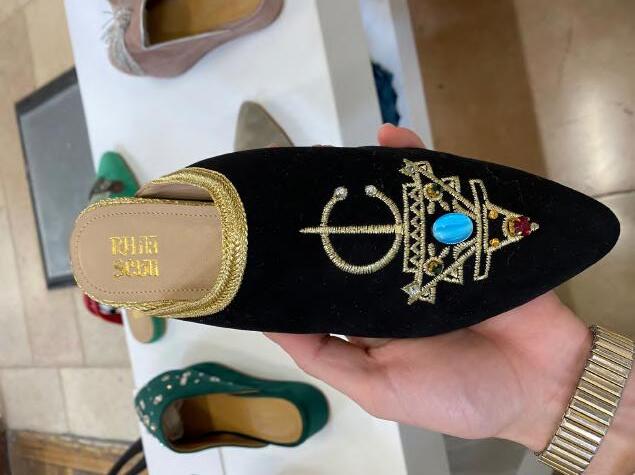

Moroccan-inspired shoes have taken Milan and Paris by storm during the past couple of seasons and the trend continued with Rhita Sebti’s fashion week debut The Brussels-born Sebti, like so many Frenchspeaking designers before her, is enchanted by Berber culture. In 2016, she began creating her own line of babouches (a Moroccan heelless slipper); she now offers an expansive collection of mules, slippers, and sandals as delicate and supple as the desert dunes. All the shoes are handmade using Moroccan artisanal methods Elysium favorites? The bright blue Maya babouche adorned with stones and silver embroidery and the red suede Lily mules fastened with delicately knotted cords. The brand’s classic Rafia shoes are a dream for a rustic chic getaway in Sardinia or Sicily.
The passion project of a sister team, Romualdo specializes in reversible hand-painted hats made with imagination, love, and a touch of Spanish sun. Christiana, an artist, and Mariana, a designer, have teamed up to create hats in a wide variety of shapes, colors, and patterns…but all have a certain endearing personality It’s easy to fall in love with the playful Romualda vision, which embraces the concepts of eternal summer and the emotion of the everyday. Simple beauty and sustainability are key to the brand, which prides itself on “recovering ancestral techniques and reflecting the purity of materials.” Hats are not the only offerings; Romualdo also has flowing pastel dresses, delicate handpainted scarves, and origamiinspired reversible totes to complete the perfect beach ensemble.
. ”
Romualdo
36
Furla
R I S I N G S

A R : Mohamed Errougha (Corps)
The brainchild of Moroccan designer Mohamed Errougha, Corps debuted its A/W 2022 collection on the Paris Fashion Week stage The collection, inspired by Renaissance motifs and the desert rose indigenous to Errougha’s country, was entirely produced in Morocco. My introduction to Corps and Errougha’s work, it impressed with its oversized silhouettes, well-balanced color palette, and deft references to different landscapes.

A pair of pinstripe brown trousers accented by a zigzag pattern evoked military imagery; they would be perfectly paired with combat boots among rugged cliffs. Voluptuous trousers and a tightfitting turtleneck shirt, both in white silk tulle, reminded me of salt flats… particularly due to their asymmetrically placed ridges of fabric. Meanwhile, gold, silver, and beige garments (some transparent, some metallic) conversed with the desert. The piece de resistance, which brought together Renaissance and Moroccan motifs, was a patterned dress paired with a brilliant blue jacket Said jacket also appeared provocatively with a beaded corset and a transparent black top, alluding to an untapped sexuality that remains true to the collection’s DNA while expanding its potential in new directions.
Corps is still a very young brand but it is an inspired one with diverse influences and a compelling aesthetic; look for steady growth to come.
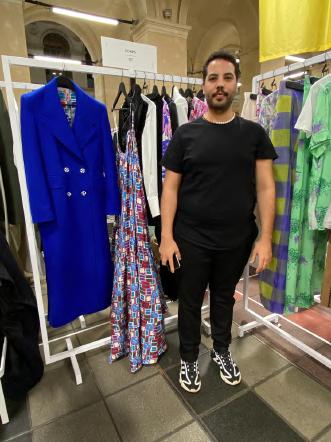
parisofficial
T
37
R I S I N G S T A R :

Filza Marri & Lyn Abdel Rahman (Le Fil)
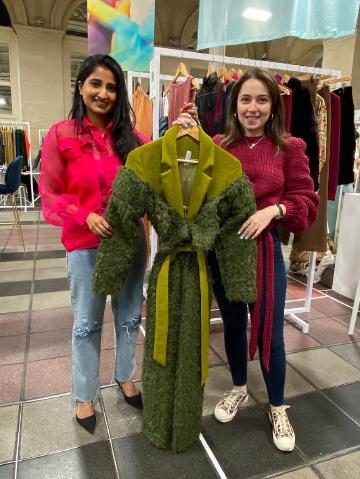
Le Fil Paris is the convergence of two inspiring young designers with drastically different backgrounds but a similar worldview, stylistic vision, and social mission. It is the collaborative passion project of Filza Marri, who grew up and completed her Bachelor’s degree in Pakistan, and Lyn Abdel Rahman, who has Lebanese heritage and grew up in the UAE before receiving a Bachelor’s in Beirut. The two met in Paris while completing Master’s degrees in fashion at Istituto Marangoni; in the wake of Covid crisis they decided to remain in the French capital and start their own brand.
The first things that stood out to me about Le Fil were its socially and environmentally conscious focus and the genuine passion with which its founders spoke to me about their inspirations and values. Marri and Rahman are proud to have a zero-waste brand. They repurpose some of their waste fabric for accessories such as buttons and donate the rest to women in rural Pakistan. These women then use the fabric both to produce Sindhi Ralli patchworks that are sold in their communities and to create limited-edition collaborations with Le Fil. To conclude this ingenious cycle of social sustainability, Le Fil donates the proceeds from these collaborations to women ’ s education funds in Lebanon. Thus the brand is a cross-cultural endeavor that not only merges its founders’ love of fashion but also is a vehicle for them to promote societal exchange, support their respective countries, and expand their vision across continents and markets.
In a press release about the brand, Le Fil states that “home is everywhere and nowhere. Our identities today are not only a reflection of our country of origin but also a reflection of the places we travel to and the places we choose to reside in.”
Rahman and Marri see themselves as global citizens, valuable context for understanding the diverse creative influences yet unique universality of their A/W 21 collection. The “Capital-I” “inspiration” for the collection was Les Fables de la Fontaine, a collection of children’s fairytales published in France in the late 17th century. The charm of “Les Fables”, like the Rahman/Marri collaboration, was that they brought together stories from cultures around the world and distilled them into wisdom applicable to any society. The Fables-inspired collection combines silk, velvet, corduroy, chunky knits, and faux fur in pieces that are based in comfort but inherently graceful and undeniably have elements of glamor. Modeled by the charismatic Alisa Volichenko in the season ’ s marketing campaign, the clothes’ refined and restrained color palette (think beige, forest green, and cinnabar) belied their confident if not forceful personalities. One of Le Fil’s goals is to “ empower women… ” and their designs are empowered in and of themselves. Voluminous organza ruffles, extending off the sleeves of a strapless corduroy dress, seem not a frilly excess but instead radiate power. A plush velvet jacket, paired with cream wide-legged pants, has a presence greater than the sum of its parts, a self-assured fashion-forward ensemble with a business attitude. Furthermore, a coral coat, complete with a faux fur collar and pockets reminiscent of a bathrobe, exudes a sultry model off-duty swagger
In short, Le Fil created a mature, modern fairytale. The collection mirrors its brand in more ways than one…for Rahman and Marri, one senses, the fairytale is only beginning. I want to live in the sort of world that their style expresses and their philosophy envisions. And, if they branch into men ’ s wear, I would love to do so wearing their designs.
@lefilparis
38
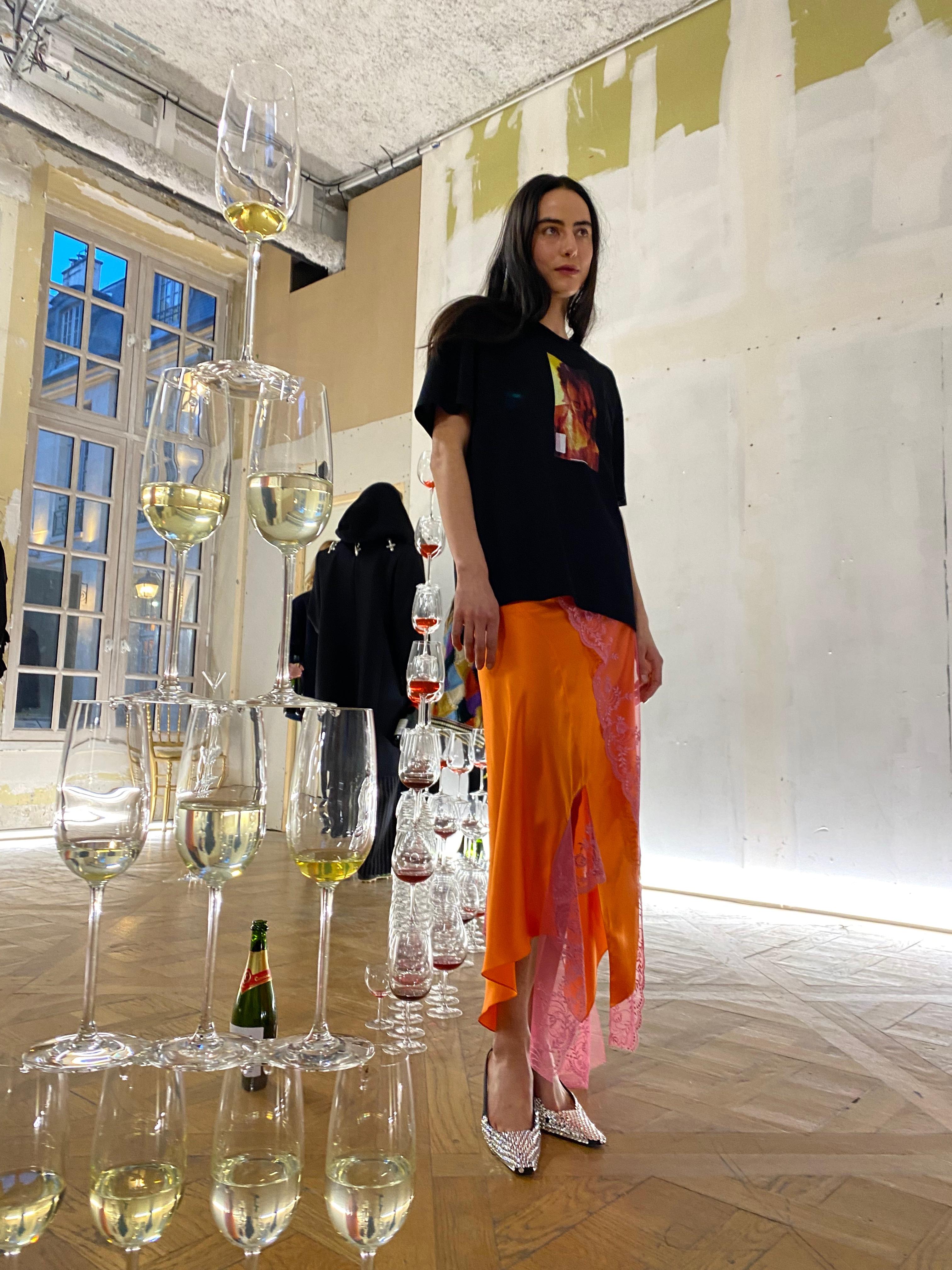
C H A M P A G N E P R O B L E M S M E R Y L L R O G G E
A sparkling champagne tower decorates a central dais Long banquet tables, surrounded by gilded chairs, are laid with a feast of steaks Laughter and clinking glasses fill the room while beautiful models mingle in a relaxed and jovial atmosphere.
Off to the side, dozens if not hundreds of partially empty wine glasses are strewn haphazardly on the floor. The baroque fireplace is filled with glasses itself, as if the evening’s excesses exceeded its venue’s capacity. A striking model in a black cape, hood pulled tightly over his head and champagne bottle in hand, moves around the room like a zombie, eyes dead and unblinking. All in all, the scene is a perfect fantasy of a party: the good, the bad, the chaotic and something that many of us doubtless dreamed of during months of isolation
I am not describing a cocktail event in a grand 8th arrondissement townhouse or the exposition of an addictive new Netflix mystery Rather it was the scene for Meryll Rogge’s Autumn/Winter 2022 presentation, her Paris Fashion Week debut and first major post-Covid event. The Belgian designer titled her collection “Poor Connection” and made her show a celebration of re-connection. By staging a party, with all of the debauchery and camaraderie that the term represents, she reflected the general sentiment of those attending the first proper Paris Fashion Week in over two years. The fashion world exhaled this season, thrilled to be back to normal routines. Rogge’s convivial gathering, in which models casually presented this season’s garments in an improvised mise-en-scene rather than formal show, perfectly expressed this collective sigh of relief

It also perfectly reflected the ethos of the collection Note that I did not use the word “inspiration,” for what defined Rogge’s Autumn/Winter 2022 looks was an intentional lack of “inspiration “Inspiration” is a buzzword, a powerful marketing tool. Too often in the fashion industry there is pressure to formulaically summarize an entire collection, inevitably a multi-faceted product of a variety of influences and experiences, as having emerged from a singular idea. Designers nor PR agencies nor journalists are immune to the pressure. Speaking from my own experience as a writer, I feel the temptation, if not expectation, to attribute collections to specific influences in inevitably reductive twoword article titles or two-sentence introductions.

40 " B E A U T I U F L O U T G O I N G A L C O H O L I C S O C I A L I T E "
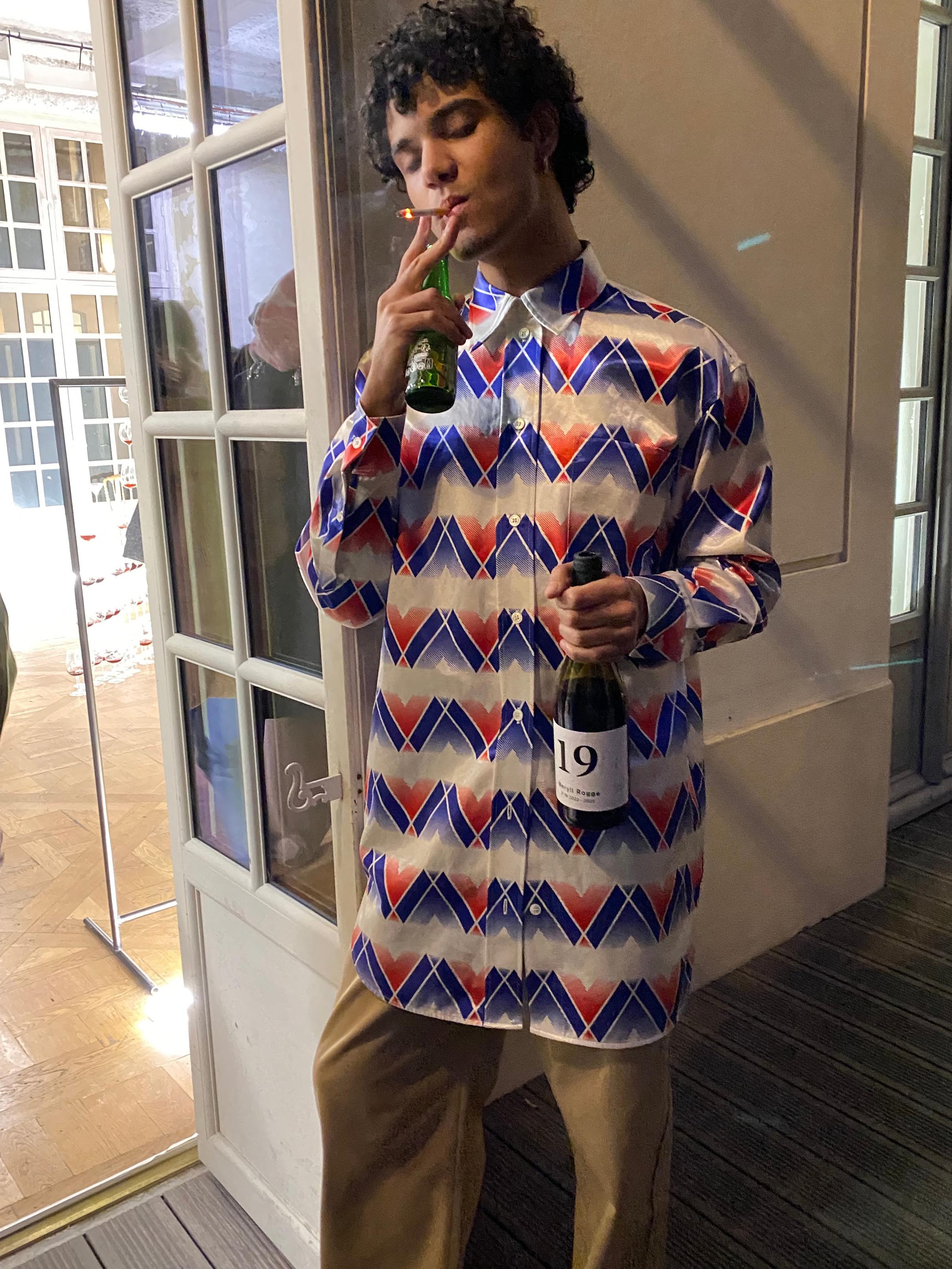
41 " W O O D F L O O R S I N Y O U R S O H O A P A R T M E N T . E V E R Y M O R N I N G A L W A Y S R O L L O N E A N D S P A R K I T . "
This year, perhaps, dare I say, “inspired” by Covid-induced introspection, Rogge broke with the convention “The important thing is to make clothing that appeals to people rather than really focusing on ‘proper’ inspiration,” she told the Federation de la Haute Couture de la Mode in an interview “Literal reference pulling like ‘this season we looked at this art and this is our connection’ is not something we do It’s more about portraying an [abstract] image that suits the brand.” My conversation with Rogge at the event further conveyed this idea. Her brand eschews pretensions and philosophizing; she aims to design “clothes that people like to wear” based on whatever influences attract her team at the current moment. (At this moment, she stated, such influences included Cindy Sherman, vintage fashion, and “things found on Etsy”).

The result was a massive collection juxtaposing a wide variety of colors, patterns, and materials Perhaps the best adjective to describe it would be “comfortable”; there is a certain practicality to even the most imaginative garments, and, whether a distressed woolen sweater or ruffled Victorianstyle shirt, all was relatively loose-fitting The collection never sought to shock but contained several pleasant surprises; I was particularly enamored by an oversized graphic tee paired with sparkling heels and a partially transparent lacy skirt. Also notable were tromp d’oeil skirts deceptively masquerading as red cordouroys and navy jeans. For those who prefer more classic styles, there was a beautifully cut black overcoat and a series of cozy yet elegant wool tops. Men’s wear was not overlooked; the same geometric patterns that adorned some of the women’s jackets and dresses appeared on colorful button-ups paired with khakis.
Meryll Rogge designed one of the most versatile and wearable collections of this year’s Fashion Week Given her expansive stylistic oeuvre, there are many directions she could proceed from here But whatever path she takes, I hope she never finds a (capital-I) “inspiration ” By not following a specific personal aesthetic, nor a formula, she consistently creates eclectic and vibrant clothes that have both strong personality and broad appeal They are made for the sort of diverse, vivacious, and intellectual people you would want at your dinner party…hopefully, one with a champagne tower!
(Note: All captions are from G-Eazy's "Downtown Love." They are not associated with the collection and have been paired with the photos as the editor's own commentary)
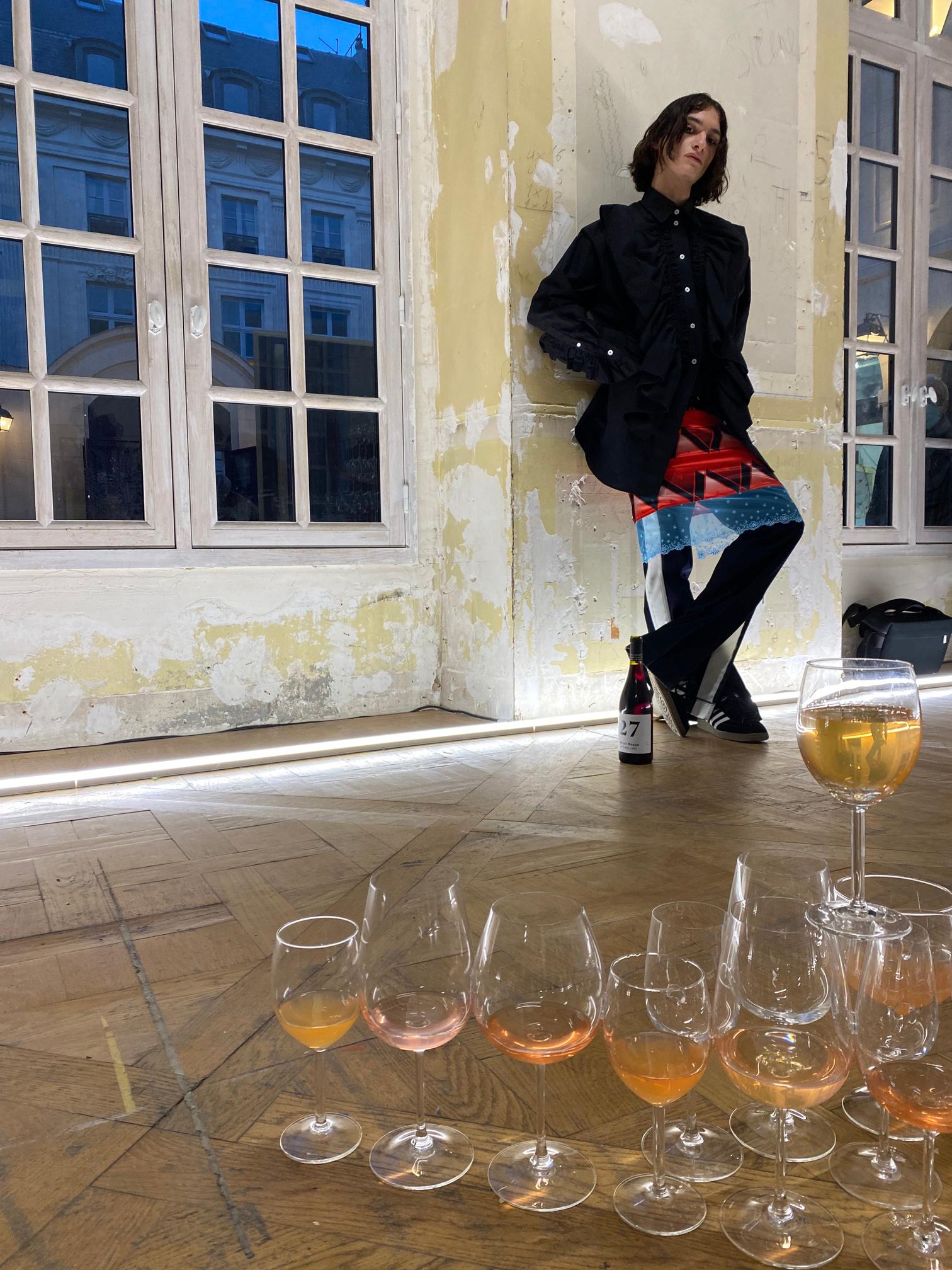
42 " F R O M H I G H S O C I E T Y B U T T H E Y F R O W N O N H E R A C T I O N S "
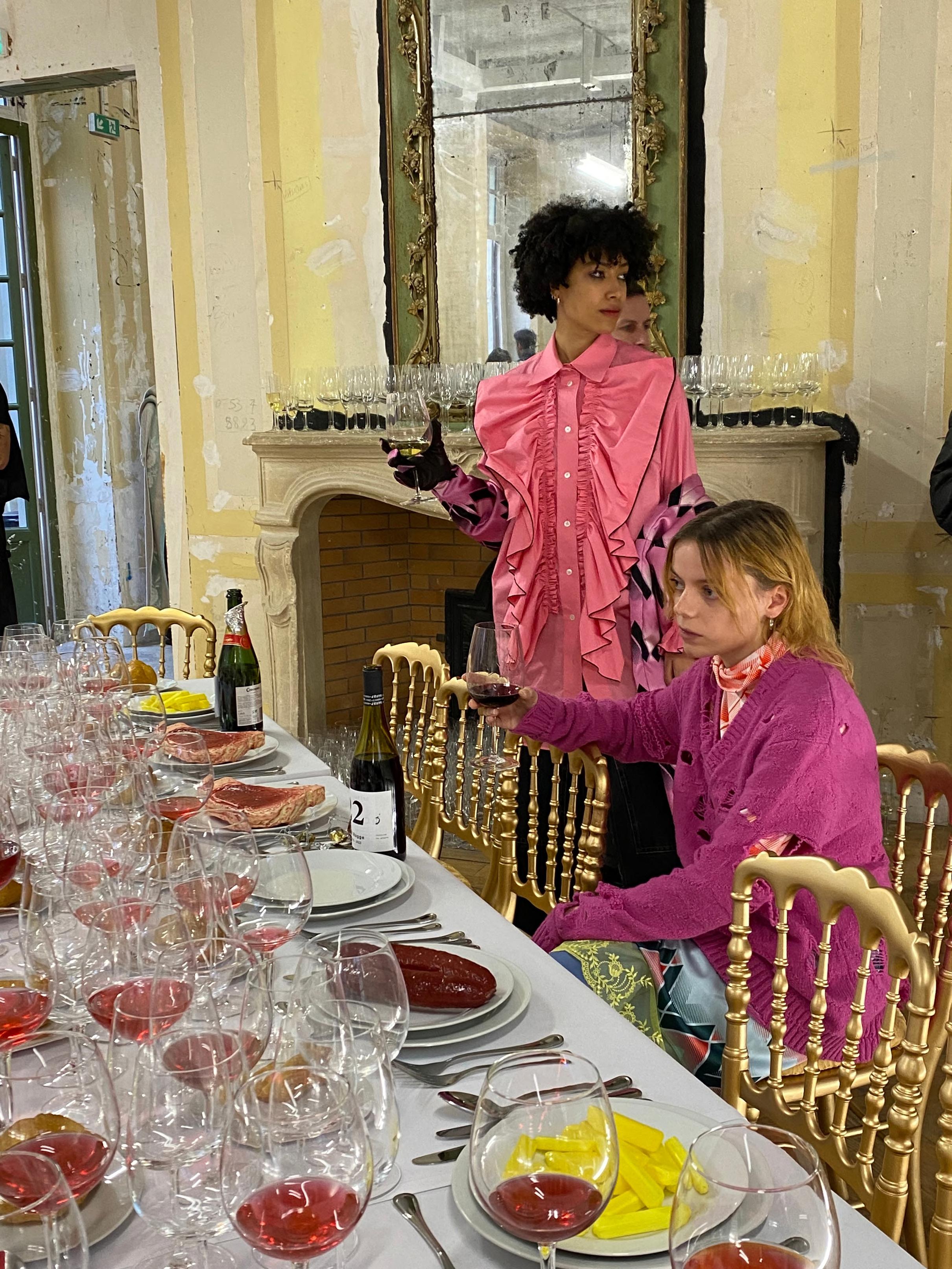
" T W O H O U R S G E T T I N G R E A D Y S T I L L C A N ' T L O O K H E R S E L F I N T H E M I R R O R " 43
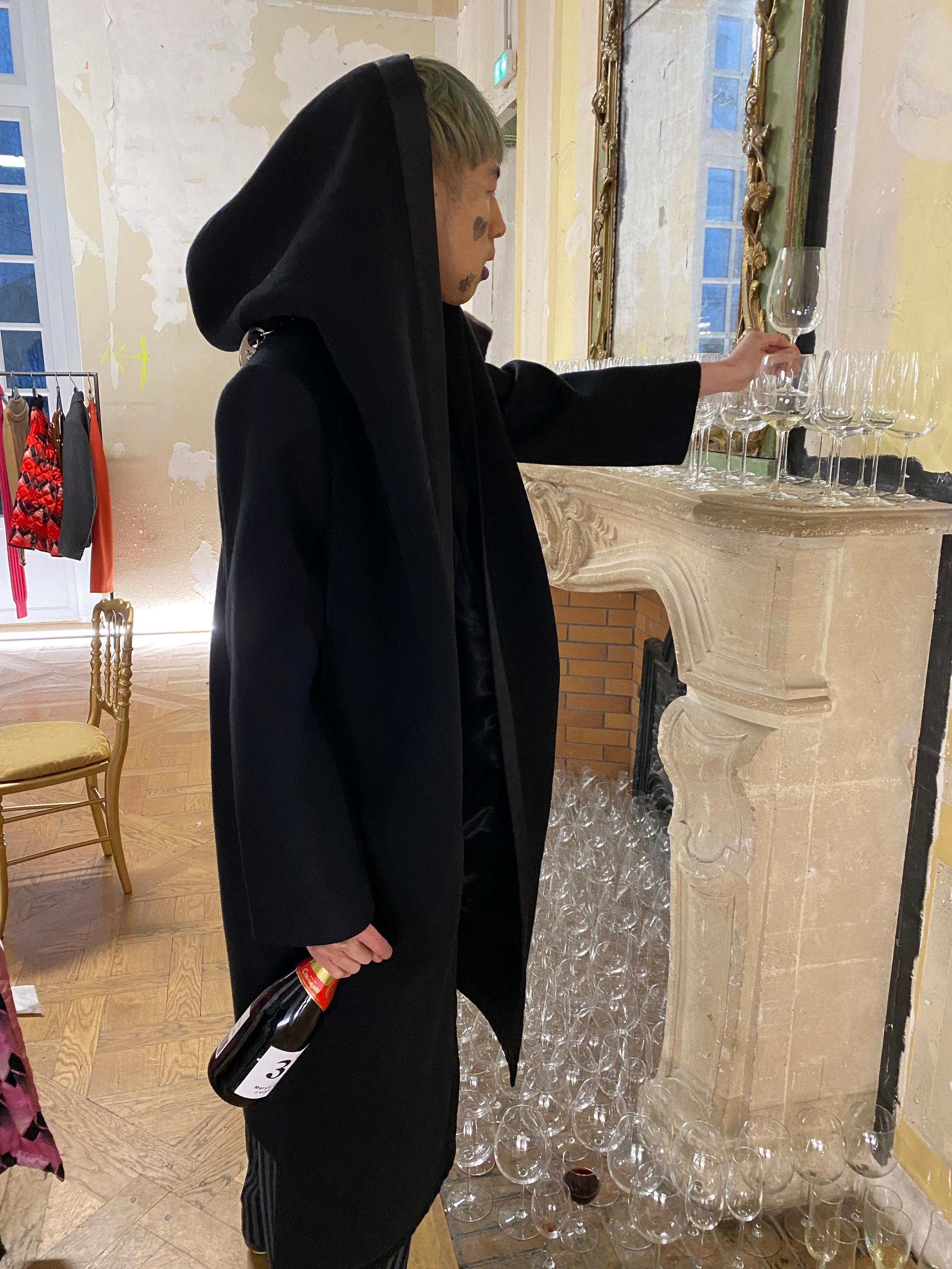
" S C A R E D T O L O S E I T A L L B U T E V E R Y T H I N G W A S N O T H I N G I N S I D E . " 44
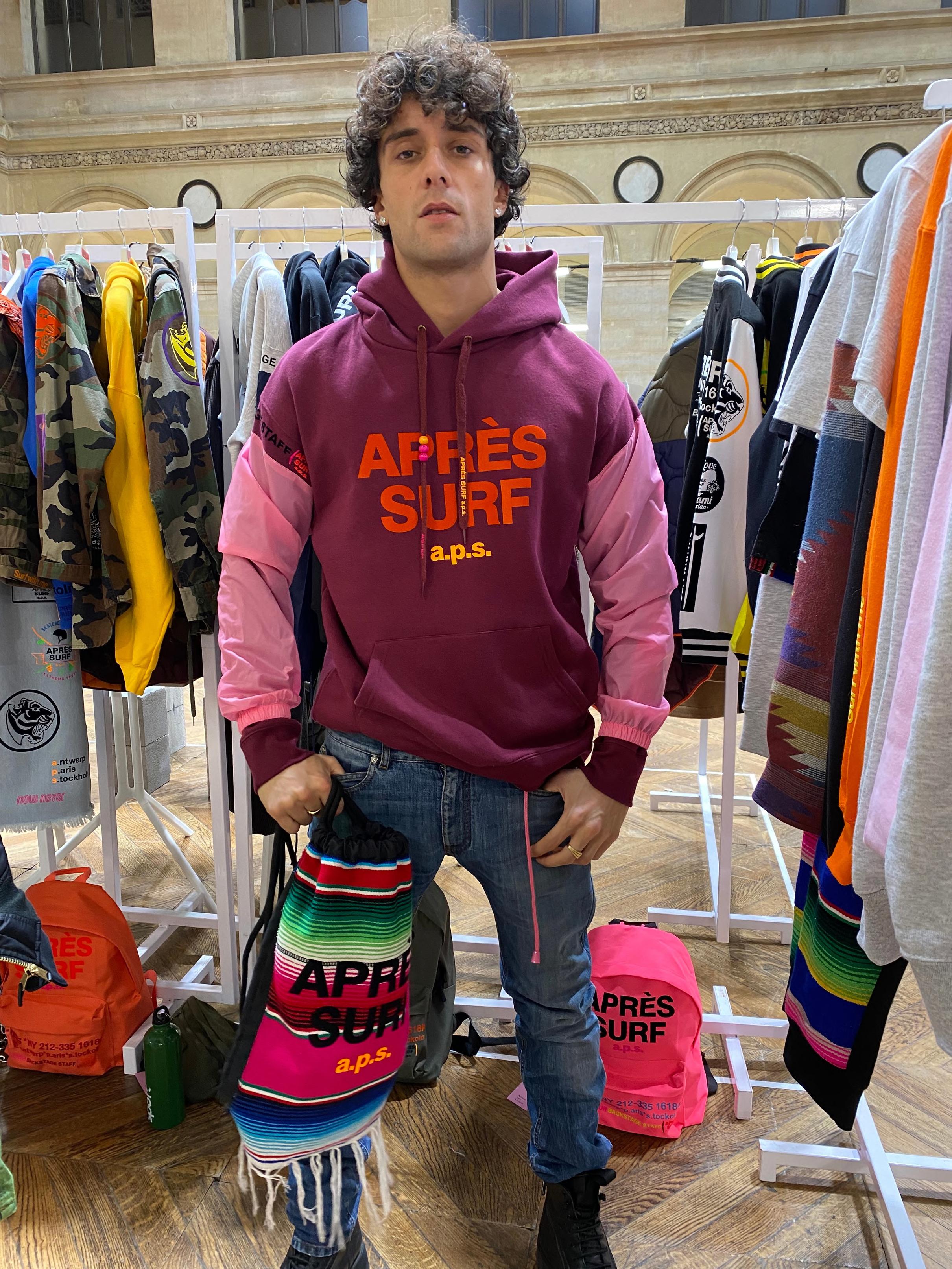
SURF CULTURE TAKES THE CATWALK
How Apres Surf Gives Waveriders
Their Own Luxury Lifestyle Brand
T o s k i o r t o s u r f : t h a t i s t h e q u e s t i o n . E a c h s p o r t n o t o n l y h a s a b r o a d g l o b a l a p p e a l a n d p a s s i o n a t e f o l l o w i n g b u t a l s o c e n t e r s a n a l l - c o n s u m i n g l i f e s t y l e i n c o n s t a n t c o n v e r s a t i o n w i t h f a s h i o n , f i l m , a r t , m u s i c , a n d e v e n g a s t r o n o m y T a l k t o s o m e o f m y m o r e s k i - o b s e s s e d f r i e n d s , w h o s p e n t a l m o s t e v e r y d a y o n t h e s l o p e s t h i s p a s t s e a s o n , a n d t h e y ’ l l t e l l y o u t h a t t h e “ a p r è s - s k i i s a l m o s t a s i m p o r t a n t a s t h e s k i i n g i t s e l f ” W h e t h e r s a i d a p r è s - s k i i n v o l v e s c h a m p a g n e s h o w e r s o n t h e d e c k o f F o l i e D e u c e o r f i r e s i d e f o n d u e a n d a g l a s s o f w i n e , i t i s s y n o n y m o u s w i t h f a s h i o n C a s h m e r e s w e a t e r s a n d l o u n g e p a n t s V o l u m i n o u s f u r c o a t s a n d h a t s N e o n p a r k a s w i t h b r i g h t l y p a t t e r n e d g o g g l e s A l l h a v e a n i n d e l i b l e p l a c e i n t h e n e a r - m y t h i c a l a p r è s p h e n o m e n o n t h a t c o n c l u d e s a d a y o n t h e s l o p e s S u r f c u l t u r e h a s n o l e s s p o w e r f u l a p e r s o n a l i t y a n d n o l e s s d i s t i n c t o r s e l f - a s s u r e d a s e n s e o f s t y l e . H o w e v e r , w h e n o n e t h i n k s a b o u t t h e b e a c h s i d e g a t h e r i n g s o r p a r t i e s t h a t o c c u r f o l l o w i n g a d a y o n t h e w a v e s , f e w f a s h i o n - f o r w a r d i m a g e s c o m e t o m i n d . W h i l e p u r p o r t i n g t o n o t c a r e a b o u t f a s h i o n i s a f a s h i o n s t a t e m e n t i n a n d o f i t s e l f , a n d t h e d e s i g n s a n d a e s t h e t i c o f b o a r d s ( m u c h l i k e i n t h e s k a t e r c o m m u n i t y ) i n s p i r e i n d i s p u t a b l e p a s s i o n a m o n g t h e i r r i d e r s , c o n t e m p o r a r y s u r f z e i t g e i s t h a s b e e n g e n e r a l l y o v e r l o o k e d b y f a s h i o n a n d i t s c r i t i c s . T h a t c o u l d c h a n g e w i t h t h e e m e r g e n c e o f A p r è s - S u r f , a n a m b i t i o u s n e w
“ h i g h - l o w ” b r a n d s e e k i n g t o e s t a b l i s h s u r f s t y l e i n t h e l u x u r y m a r k e t w i t h a f u s i o n a e s t h e t i c t h a t i s a t o n c e b o t h C a l i f o r n i a n a n d d i s t i n c t l y I t a l i a n
M a k e n o m i s t a k e : t h i s i s l a i d b a c k s u r f w e a r , d e s i g n e d f o r p e o p l e w i t h a y o u t h f u l j o i e d e v i v r e w h o w i s h t o c e l e b r a t e t h a t b a r e f o o t c a r e - f r e e a t t i t u d e y o u ’ l l f i n d a m o n g r e g u l a r s i n M a l i b u o r H u n t i n g t o n B e a c h H o w e v e r , A p r è s - S u r f ' s t a r g e t m a r k e t i s m o r e l i k e l y t o b e l o s t i n t h e g r o o v e s o f
M y k o n o s o r t h e C o s t a S m e r a l d a t h a n a t a B o b M a r l e ys t y l e b e a c h b a r T a k e a l o o k a t i t s r e c e n t p r o m o t i o n a l c a m p a i g n s , w h e r e h o o d i e s a r e d r a p e d o v e r b o t t l e s o f c h a m p a g n e a t C l u b 5 5 a n d l e g g y m o d e l s i n o v e r s i z e d b o a r d s h o r t s l o u n g e o n y a c h t s i n P a t m o s O f c o u r s e , m o s t v a c a t i o n e r s i n s u c h d e s t i n a t i o n s c o m e f r o m E u r o p e ’ s c u l t u r e d c a p i t a l s ; t h u s i t ’ s n o s u r p r i s e t o s e e P a r i s ,
A n t w e r p , a n d S t o c k h o l m p l a s t e r e d a c r o s s b r i g h t s h i r t s a n d h o o d i e s
A p r è s - S u r f , i n i t s l i m i t e d c o l l e c t i o n s s o f a r , h a s s e e m e d t o e f f e c t i v e l y m e l d A m e r i c a n s k a t e r s e n s i b i l i t i e s w i t h u r b a n p r a c t i c a l i t y a n d a E u r o p e a n f l a i r f o r v i b r a n t c o l o r a n d b o h o / t r i b a l v i b e s . O n e h o o d i e - s t y l e j a c k e t w a s t w o - t o n e d i n l a c e a n d f u s c h i a p i n k . T h e o r a n g e a n d y e l l o w t e x t , w h i c h I w o u l d c o n s i d e r a n a b o m i n a t i o n o n m o s t o u t f i t s , s o m e h o w w o r k e d h e r e , i n j e c t i n g a t r o p i c a l v i b e t o a c o s m o p o l i t a n p e r c e p t i o n o f m o d e r n m a s c u l i n i t y . T h e k n i t d r a w s t r i n g i t w a s m o d e l e d w i t h , a M a r l e y - e s q u e c o r n u c o p i a o f s t r i p e s i n r e d , g r e e n , b l u e , a n d t h e a f o r e m e n t i o n e d f u s c h i a , w a s n o t e w o r t h y f o r t a s s e l s r e m i n i s c e n t o f a d r e a m c a t c h e r a t N i k k i B e a c h M y f a v o r i t e l o o k w a s a n i n t e r p r e t a t i o n o f t h e v a r s i t y j a c k e t , a s t y l e t h a t o f c o u r s e o r i g i n a t e d i n A m e r i c a b u t m o r e r e c e n t l y h a s d o m i n a t e d t h e s t r e e t s o f P a r i s T h e A p r è s - S u r f v e r s i o n w a s p r e s e n t e d i n b l a c k a n d n e o n o r a n g e , t h e s l e e v e s c o v e r e d i n l o g o s a n d s l o g a n s i n s p i r e d b y s u r f b o a r d d e c a l s W o r n o v e r a h o o d i e , w i t h j e a n s a n d h u l k i n g b l a c k c o m b a t b o o t s , i t s u g g e s t s a w a y t o r e p r e s e n t t h e s u r f l i f e s t y l e i n a g r i t t y u r b a n e n v i r o n m e n t
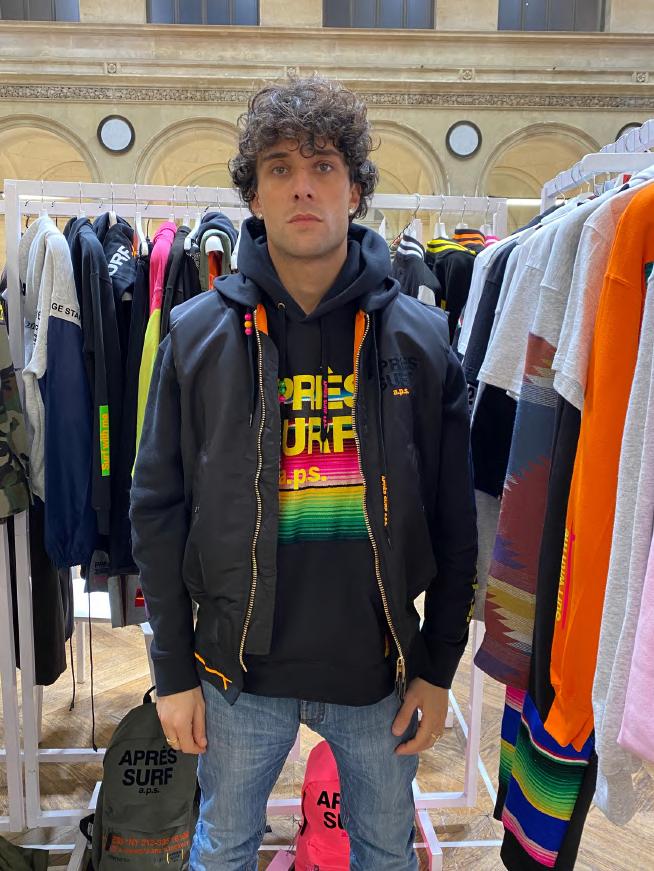
T h i s e x p a n s i o n o f s a i d s u r f l i f e s t y l e , i n t o s e e m i n g l y i n c o n g r u o u s m a r k e t s a n d l o c a l e s , i s a d e f i n i n g m i s s i o n o f t h e b r a n d a n d t h e u n f i l l e d n i c h e t h a t i t i s b e s t p o s i t i o n e d t o o c c u p y a s i t s e e k s t o g r o w w i t h i n t h e f a s h i o n i n d u s t r y .
T h a t n i c h e n e e d n o t b e l i m i t e d t o o n e p l a y e r , h o w e v e r … . w h y n o t c e l e b r a t e a p r è s s u r f c u l t u r e a s w e d o a p r è s s k i ? F r o m B a l i t o B i a r r i t z , l o o k f o r t h i s t y p e o f b r a n d t o p o p u p a m o n g l e a d i n g s u r f d e s t i n a t i o n s … a n d w i t h i n t h e
l u x u r y s e c t o r t h a t f r e q u e n t s t h e m .
46



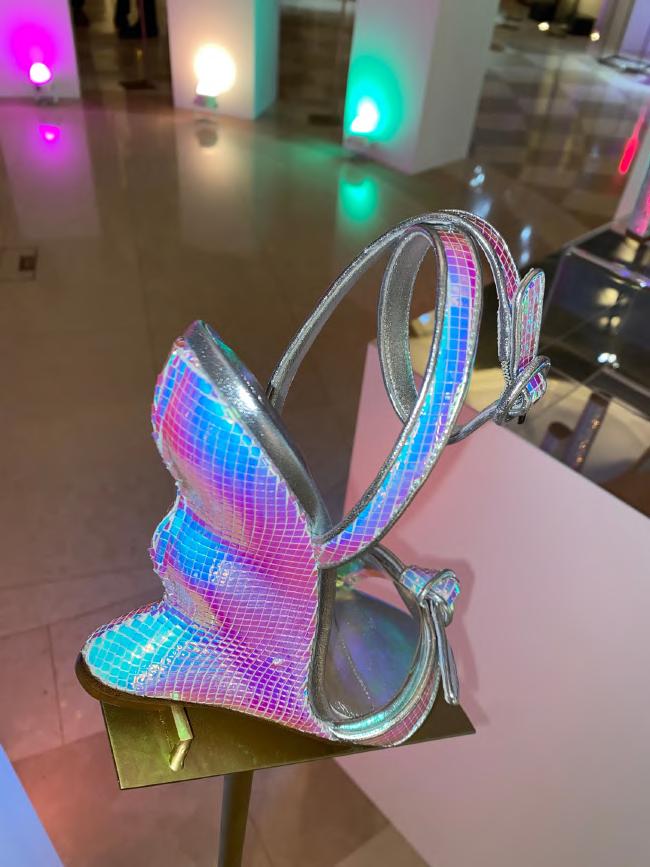


D R E B I R M
E D I T O R ' S P I C K : B E S T W O M E N ' S S H O E C O L L E C T I O N , P F W A / W 2 0 2 2 47
A L E X A N
A N






A
E D I T O R ' S P I C K : B E S T M E N ' S S H O E C O L L E C T I O N , P F W A / W 2 0 2 2 48
A L E X D E P
S E
L O O K I N G A T P A R I S
The A/W 2022 season saw a number of excellent fashion-week adjacent events at Parisian art galleries; the most poignant, and memorable, was the opening of a beautifully-curated Yoshi Takata exhibition at the Thaddeus Rohac Gallery. The Japanese-born Takata spent the better part of her life and career in Paris and became intimately entwined with the nuanced and often contrasting rhythms of life in the French capital Takata designed a unique niche as a humanist fashion photographer who portrayed the lifestyles of both wealthy bon vivants and blue collar workers (often in the same camera frame) with eloquence and dignity
The Rohac exhibition showcased a representative crosssection of this photography, selecting photos that captured the most fundamental human emotions and impulses in a form paradoxically both raw and structured. The exhibition felt particularly powerful in the wake of Covid, a crisis which inspired nostalgia for past eras and reflection on the importance of human connection. Takata captured ephemeral moments of such connection that we often take for granted but that remain essential to the fabric of our lives: a man catching a woman’s eye in a restaurant, a group of nuns taking solace in each other at a time of mourning, workers in a market collaborating to carry their goods
The Takata exhibition was entitled “Looking at Paris,” an interesting turn of phrase given its almost-voyeuristic connotations Takata may have been looking at Paris, but it was from an insider’s perspective: that of one with a profound love and understanding of the city she adopted as home. And while her work may recall wistfulness for the bygone post-war era, it also transcends time: the interactions she depicted on the Parisian streets are the same ones we experience today.



T H A D D E U S R O H A C G A L L E R Y R E F L E C T S O N T H E C I T Y O F L I G H T T H R O U G H T H E L E N S O F Y O S H I T A K A T A
49

50

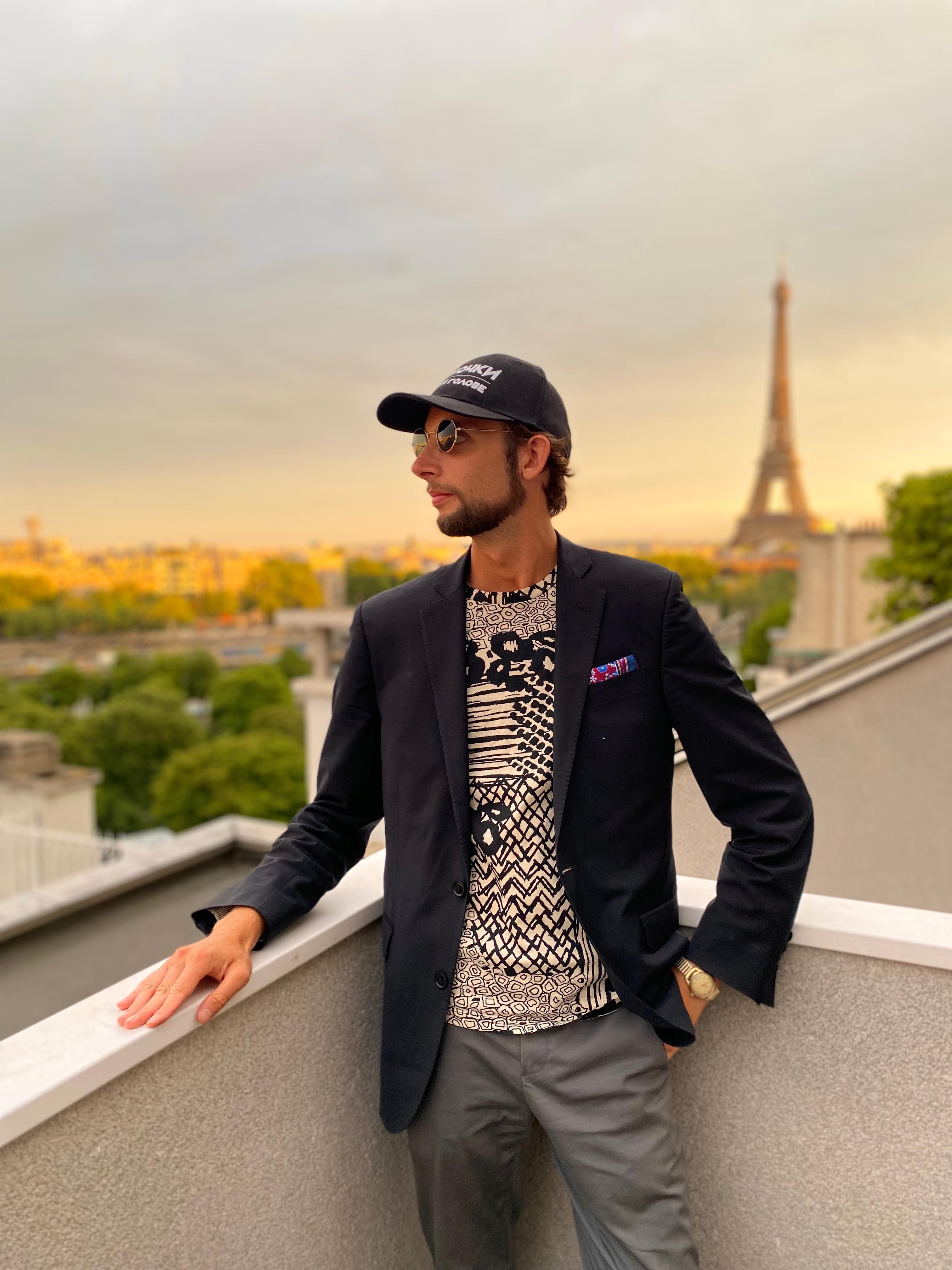
M U G L E R I N M E M O R I A M
How can we can control our legacy? Can we take agency over the ways in which we are remembered? These are fundamental questions dating back to the beginning of organized society hence why so many of our earliest monuments are tombs In fashion a late designers’ legacy is often left in the hands of his creative contemporaries, with commemorative books, exhibitions, and even tribute shows organized by the curators, journalists, photographers, and designers who shared a deep respect for his work. This is what happened, for example, for the late great Alber Elbaz and Virgil Abloh this year. Abloh was honored with a spectacular Louis Vuitton tribute show in Miami; meanwhile the AZ Factory celebrated its founder Elbaz with at the collaborative “Love Brings Love” show to close Paris Fashion Week S/S 2022.
As for the Mugler tribute? Well, as fate had it, he may have received the most personal and intimate retrospective of all Mugler passed away late in January 2022, shocking a fashion community already reeling from a year of loss Incidentally, this was also the closing month of the Thierry Mugler, Couturissime exhibition at the Musee des Arts
Decoratifs in Paris The first European appearance of an oeuvre originally crafted for the Montreall Museum of Fine Arts in 2019 it was the Musee des Arts’ Decoratifs most spectacular show since the encyclopedic Dior exhibition.
As fantastical as the worlds that Mugler created, the exhibition eschewed linear chronology for a series of capsules based on certain themes. Visitors journeyed under the sea, into the jungle, and to the polar ice caps. As Vogue has pointed out, Mugler described himself in his Instagram bio as “director, show curator, perfume creator, costume designer, and photographer ” Far more than a typical couturier, his flare for theatrics was unmatched and his willingness to experiment with
different mediums to realize his vision elevated him to a realm that transcended any singular cultural sector The dresses themselves offered vivid resemblances of mermaids, butterflies, ants, and even classic American cars
Just as impressive were the photography and immersive catwalk shows A consummate ‘showman’ Mugler left no stone unturned and no sense untouched in bringing the spirit of his collections to the public.
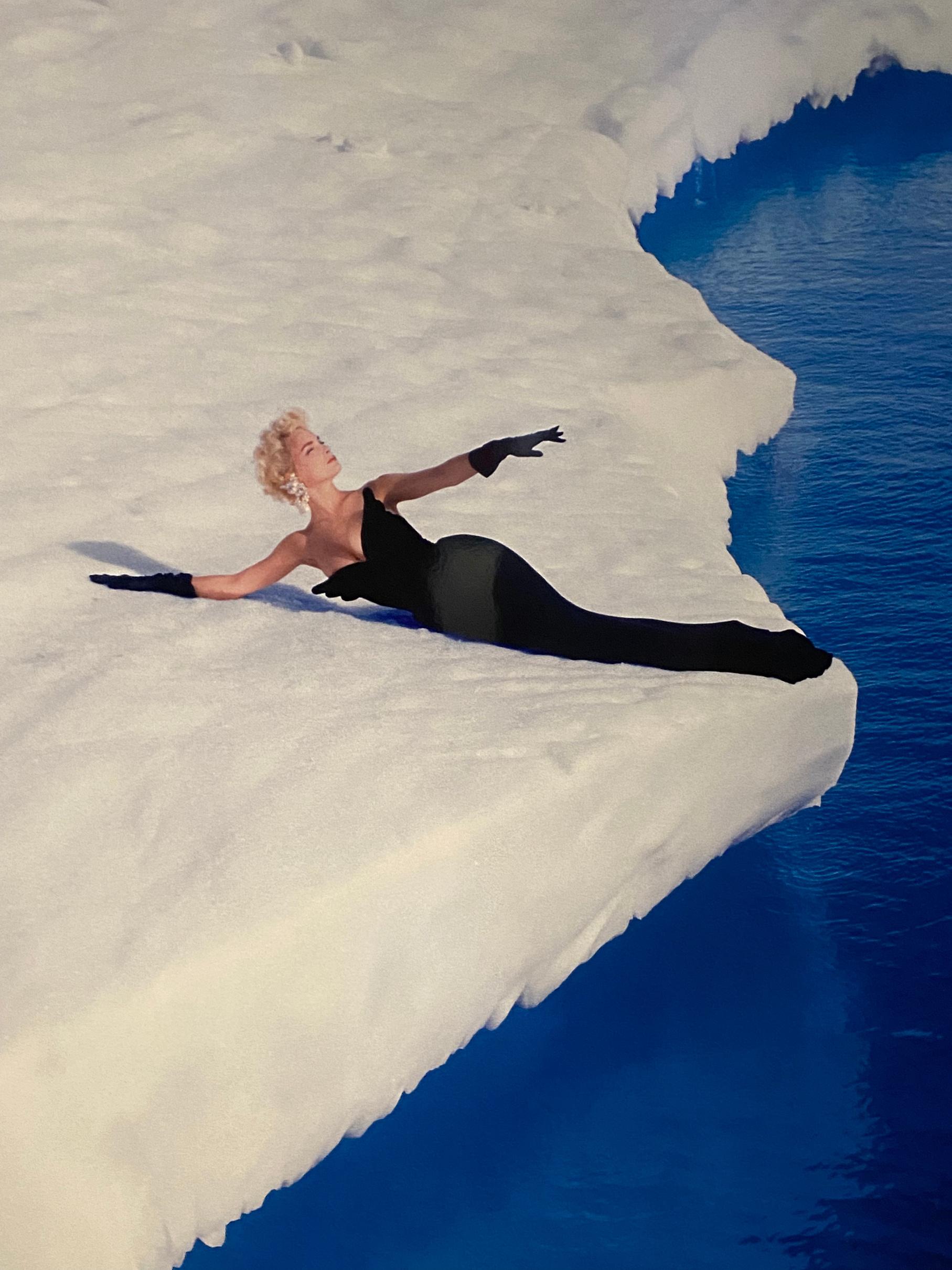
T H E M A G I C A L W O R L D O F M U G L E R R E T U R N S T O L I F E A T T H E M U S È E D E S A R T S D E C O R A T I F S
31
Mugler was also invaluable in bringing this exhibition to the public; he worked closely with Thierry-Maxime Loriot to mold a complex concept with intimidatingly diverse source material The result, Loriot told Vogue, is “a nonclassic exhibition allowing non-fashion people to feel emotion the same way they might with a sculpture by Picasso.” “Mugler didn’t follow trends or reference fashion history,” Loriot was quoted at the exhibition opening. “It’s festive and immersive; he created his own world and it’s important to keep it intact.”
The exhibition feels pure Thierry, and as more retrospective shows, books, and films are released about him, it should be considered Ground Zero for contextualizing the designer and his legacy. After all, it was conceived in his life, under his watchful eye, encapsulating the Mugler world and its unique vocabulary through the eyes of Mugler not those of a third-party translator It’s authentic, ingenious: like the man himself And, from my visit, it didn’t leave a soul unmoved Having obtained one of the last available tickets just days after Mugler’s death and days before the exhibition’s closing, I queued outside Musee des Arts Decoratifs with dozens of reverential Parisians and foreigners. All were well-dressed and many were wearing their own Mugler creations, intent on paying tribute to the designer similarly as to one might a head of state. It was an act of collective grieving: a way to pay tribute and, also, perhaps, invoke reflection and optimism through solidarity.
Walking through the exhibition, beside a friend who has worn Mugler’s work for decades and could likely recite the pieces in each of his iconic collections, I felt almost as if Mugler was in the room with us Just as he defiiantly created his own world, aesthetic, and philosophy in life, he, through this exhibition, passionately preserved his legacy through death It’s a legacy that none who were there on that snowy day in Paris will forget


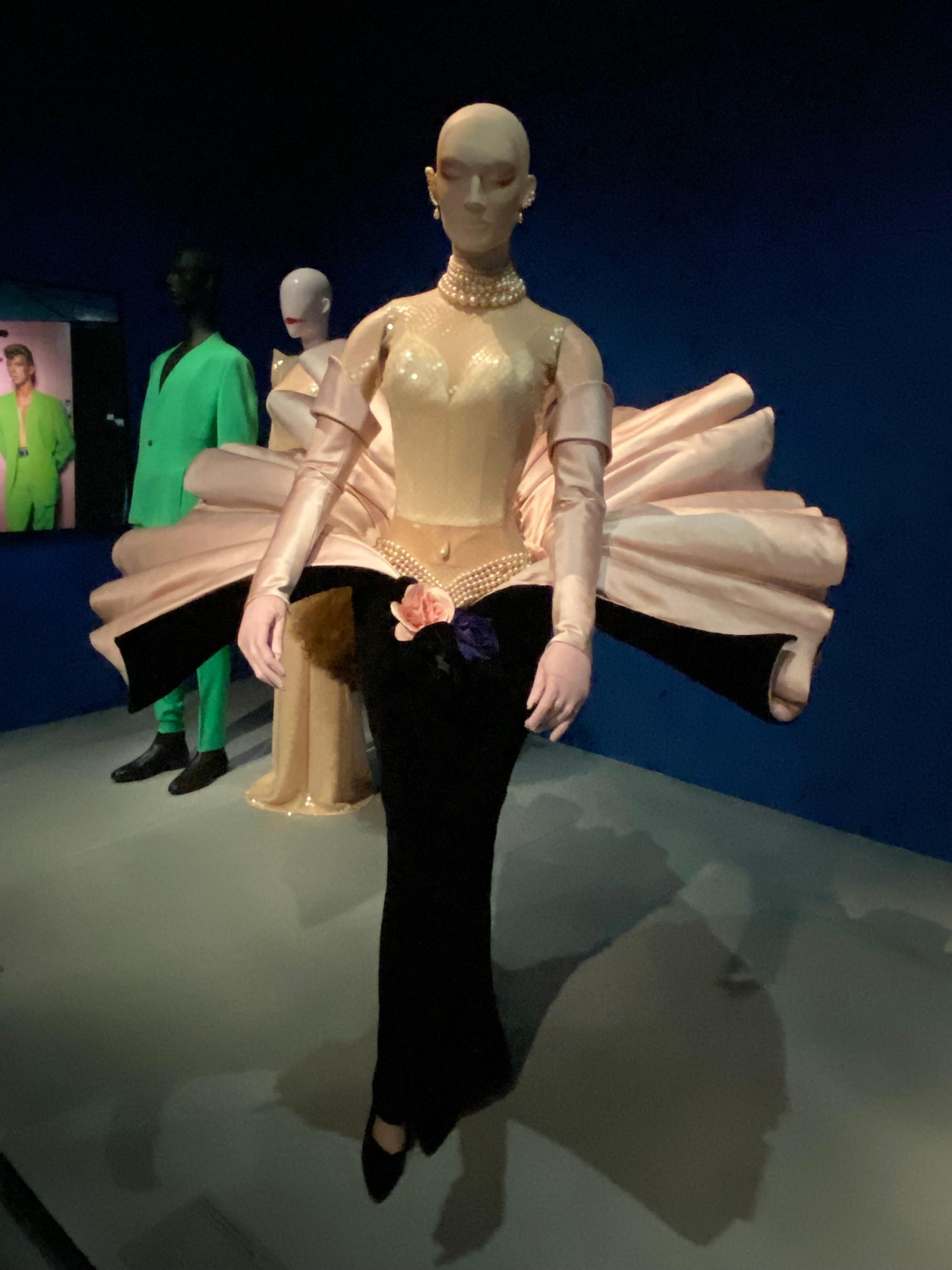
32
C R Y P T O C U R R E N C Y & T H E A R T W O R L D
How Blockchain Technology is Revolutionizing Art and Changing the Ways We Collect, Curate, & Collaborate

55
In 1916, Aleksander Rodchenko, born in St Petersburg three years before the coronation of
Nicholas II and artistically trained in Kazan as the Russian Revolution exploded, presented his work at a Moscow exhibition organized by Vladimir Tatlin
It was the first time the young artist had appeared prominently in the Russian art scene While this scene was undergoing a period of violent upheaval (the country was on the verge of launching a culture war against the very “bourgeoisie” that had redefined art by superseding the tradition-steeped pre-impressionist French salons decades earlier), the reception to the newcomer was still frosty. The foremost artist in Moscow at the time, Kazmir Malevich, mocked Rodchenko’s geometrically-inclined work as rigid, derisively labeling it constructivist. Malevich was no stranger to geometry himself, having exhibited his iconic “Black Square” just two years earlier and founded the Suprematist movement that, presuming we classify Vasily Kandinsky’s Der Blaue Reiter group according to its primarily German composition, marked the introduction of abstraction to popular Russian art However, Malevich found Rodchenko’s pieces to be overly industrial; rugged They were a reflection of the materials, textures, and man-made contraptions that filled everyday life rather than the ideologicallydriven “blank canvas, ” to be filled with pure shape and color, that was envisioned with “Black Square.”
The term “constructivism” quickly lost its negative connotations. Indeed, it was the perfect word to describe this radical fin-de-siecle movement that saw empire, society, and centuries of cultural and artistic

tradition demolished in favor of an entirely brave new world
Constructivism, the art form, rapidly surpassed suprematism, classicism, Peredvizhniki (the Russian form of realism), and everything else to become the predominant artistic style in the newly-formed Soviet Union. Indeed, constructivism became the only state-sanctioned form of artistic expression The outsiders were now insiders Rodchenko, dismissed by the art establishment three years earlier, was appointed by Lenin’s Bolshevik government as the Director of the Museum Bureau and Purchasing Fund in 1920 This gave him nearuninhibited control over the reorganization and future direction of the USSR’s entire museum system; the power to fundamentally change the way art was collected and the way collections were presented to the public. As founder of the Fine Arts division of the People’s Commissariat for Education, Rodchenko was also able to sculpt the first generation of Soviet-raised artists and, given the vice-like state control over all cultural activities of the time, define their style of production
Just as Russia’s society, labor force, education system, and economy had been revolutionized and were being constructed from scratch, so too was its art industry Block by block, cube by cube, from scratch using means thought inconceivable just two decades before Tatlin’s symbolic Monument to the Third International may never have been constructed physically, but it was just as tangible, and just as legitimate a representation of society and art as anything else at the time. (seen at right)
A century later, society and the art industry find themselves in a markedly similar situation.
But while the movement of the 1920’s was unique to Russia and Eastern Europe, the technologically advanced and seamlessly interconnected society of the new millenium means that the entire world is implicated in this new revolution. First contemplated by Americans, brought to fruition by (allegedly) the Japanese, and then further refined and diversified by a Belarusian, blockchain technology has permanently changed the way we transact and assign value Furthermore, just as communism a hundred years ago, blockchain threatens to completely overturn long-entrenched systems of state governance and the mechanisms of economic control they perpetrate The exact future of cryptocurrency is uncertain, and, as many have said, its true impact may not be known for 40 years or more However, blockchain and the currencies anchored in them have proven to be far more than a fleeting phenomenon. For established players in industries either seemingly in direct opposition to this development, or that simply have not engaged with it on a substantial level, the future is quickly being defined by the choice of “adapt or become obsolete ”
56
For art, just as in the Soviet Union a century ago, it is a time of change and exciting opportunity There is great potential for increased equality and democratization in the art world to the benefit of both its consumers and those at its creative core Ironically, while the USSR provided this potential through the establishment of centralized state control, blockchain technology provides it through a polar opposite mechanism: complete decentralization and the ensuing limits on state control. To analogize, picture a Soviet artist in the 1930’s; completely subsidized by the state government, she is allowed to make a comfortable living while producing art, yet has little agency over the subject matter of such creations Now, imagine an artist in the 2030’s who does not require subsidization from the government, gallerists, or any other “patrons” she has complete agency over what she creates, an equity stake in many of her works, and, through smart contracts, the right to receive additional royalties any time her work is sold on the open market Furthermore, consumers with limited liquidity who wish to invest in and support the art industry can attain fractional ownership of their favorite works as easily (and, given some studies, with as much financial security), as they can purchase a stock.
The financial fortunes of the aforementioned 2030’s artist would be linked to the appreciation value of her works This facilitates the avoidance of the infamous paradigm in which a creative only achieves public recognition late in life or posthumously and thus neither her nor her family derives significant financial benefit from her success Furthermore, the 2030’s artist has the opportunity to collaborate on joint digital works with contemporaries around the world
Blockchain technology has made all of these scenarios possible; the “second Constructivist revolution” is here Indeed, it is changing three primary sectors of the art industry: provenance verification, commodification and sales, and the creation of art itself Dealers, galleries, and aspiring artists themselves should take note if they hope to position themselves well economically over the coming decades. Thus far their reception to innovation has been varied; however, they are powerless to stop technology and art’s growing convergence.
**************
The first sector of the art industry that blockchain made a tangible impact on, and indeed the one in which it has continued to make the most significant inroads, is provenance verification This field is typically driven by museums, galleries, and auction houses and is crucial to their survival Art derives value from its provenance, and the art market (whether one considers a museum attempting to attract the general public or a gallery making a multi-million dollar sale) depends on consumer trust in the authenticity of the works being viewed or purchased.
Authenticity verification has a high transaction cost both financially and vis-a-vis time, a problem which blockchain can mitigate by creating a permanent decentralized record of ownership and ultimately serving as a public library Provided that the provenance of artworks is originally inputted correctly, it can also serve as a shield against the human error that allows fraud and counterfeiting to go undetected Many blockchain companies, some led by established art industry insiders such as Robert Norton, have been marketing these art-specific registry services for years and have already carved out a sizable niche in the market
The sector of the art industry that I believe blockchain could ultimately alter most drastically and fundamentally is sales Through offering the potential to digitally tokenize physical artwork, cryptocurrency has facilitated fractional art investment This is revolutionary for a number of reasons From a collector’s standpoint, it a) diversifies and increases investment opportunities in the art market, and b) significantly increases the dynamism and liquidity of that market by facilitating equity purchases that can lead to high returns as pieces appreciate. Art generally outperforms blue-chip stocks; it is one of the world’s most stable and lucrative fields of investment Now tokenization has streamlined access to the industry
From an artist’s perspective, blockchain’s primary effect on sales is that it allows one to maintain equity in their own work and thus continue deriving financial benefit long after a piece is first sold The ultimate result is the potential for rapid democratization in one of the world’s most elitist industries By lowering the financial bar for entrance, blockchain has widened the field of potential collectors, increased the amount of capital available to artists, and generated more interest and fluidity in the market worldwide. Whether it is prospective collectors being given the opportunity to purchase equity in one of their favorite Picassos or emerging artists retaining a stake in their initial works as they gain popularity, blockchain should provide new options and agency for those on both sides of the traditional artist-patron relationship
Blockchain, and more specifically Ethereum, can also be the artist’s medium in and of itself
57
More than just a means by which art can be shared with the world, blockchain can be the cornerstone of the creative process "Beauty is in the eye of the beholder,” and all art (indeed even the answer to the question: “what is art?”) is subjective Digital art has increasingly complicated the “what is art” issue, with the meteoric and polarizing rise of NFT’s marking the culmination of the paradigm There are engaging arguments on each side of the NFT art spectrum. Some people (likely those expressing the most vigorous support of the theory that crypto is as a democratizing force) argue that each minted token is inherently a form of digital art. Others (many of whom view NFT’s as a bubble with no staying power) argue tokens are a parody of art at best a way to “dilute” and “tarnish” the industry and its “real artists” if viewed as anything but satire I think that the truth lies somewhere in the middle; we should neither dismiss tokenized art out-of-hand nor take all tokens to be “art ”
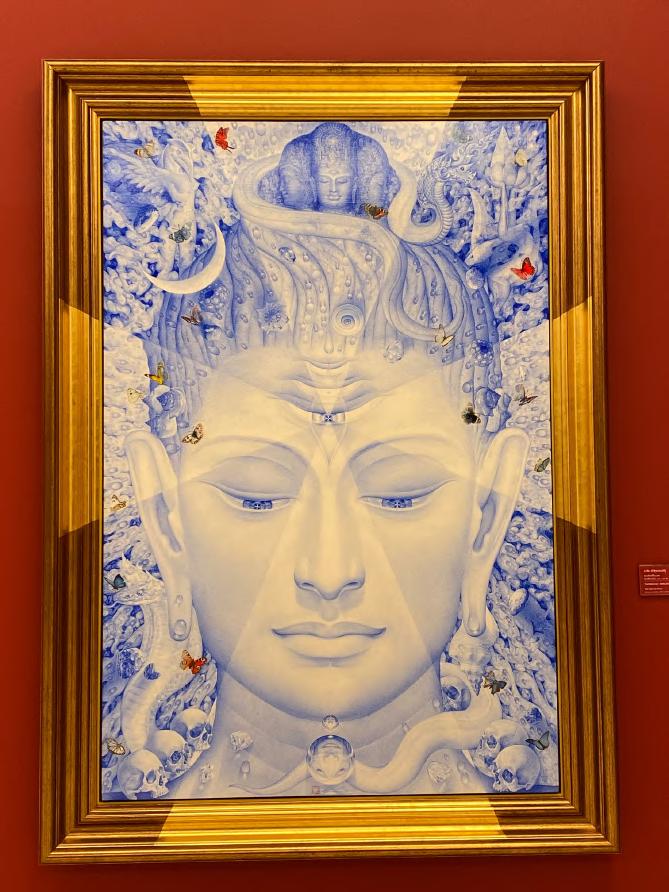
We should also be careful to separate “blockchain as artist’s medium” from the NFT phenomenon and CryptoPunk-style tokens. The latter, in my opinion, long ago transcended their art/graphics roots to form an independent industry existing outside the influence of the art world and determinative of its own trajectory. Now the NFT community is controlled by actors who primarily see the manufacturing of an image as a necessary means to the end of a profitable token I’ve set this industry aside for the purposes of my research, which instead has focused on the perspectives of those who primarily see blockchain as a medium for artistic expression Some such digital artists have seized a unique opportunity to share their message with a widespread and engaged audience not limited by
geographic locale and that can provide monetary support with minimal transaction cost Even more importantly, digital artists have been able to instantaneously connect and collaborate with their contemporaries
Of the hundreds of popular modern art groups and movements formed in the past century, most have been united at least partially by geographical proximity (as a random selection, the American abstract expressionists, the Danish/Dutch/Belgian surrealists [COBRA], the Italian futurists). Blockchain has eliminated this physical barrier and created new ways to collaborate that extend far beyond simply exhibiting similarlyinspired works Now, for example, a group of four artists, one from South Africa, one from Kazakhstan, one from France, and one from Brazil, can combine their perspectives to produce a unitary or serial piece within an hour all without leaving the comfort of their own continents Even more than so than your typical new artistic medium, collaborative blockchain art has the potential to significantly bolster cross-culture exchange, lead to the germination of new perspectives, and give rise to “postmodern” waves of art that challenge a global viewership not necessarily limited by nationality or background.
Curate. Collect. Create. Blockchain can drastically shift how the art world engages with all three words In these early years of the technology, the pioneers doing so have had varying degrees of success To structure this piece chronologically, according to the sectors that blockchain has impacted, I’ll begin with the “curation” element: considering provenance verification and how it affects the way investors and industry professionals amass art

58
Modern art from Bangkok, Thailand (above) and Phoenix, USA (below) What if artists fourteen time zones apart could simulataneously collaborate on a digital work?
A shocking 2014 study completed by the Fine Arts Expert Institute in Geneva, Switzerland found that over half the works circulating in the art market are not authentic. This paradigm has a devastating impact on the worth of individual pieces and the art industry as a whole; without trust in provenance, value is greatly diminished. Small galleries and museums often do not have the financial resources to obtain reliable provenance verification services (a prime example being the Terrus Museum in France, which admitted in 2018 that 82 of its 140 works were fake) Meanwhile, larger galleries and auction houses perpetually expend extensive temporal and financial resources competing with each other and against fraudulent actors to verify the authenticity of their collections The landscape of this battle changed at approximately the same time as the Geneva Institute released its study. In 2016, exSotheby’s salesman Nanne Dekking founded the public digital art registry Artory...essentially a public library of industry-leading provenance data accessible to anyone who desires it.

In a recent interview, Dekking described Artory as a “trusted, neutral resource bringing a new level of confidence to the art market ” With all data secured in the blockchain, Artory is, according to Dekking “built with the same security standards as the banking industry ” It is a trust-inducing mechanism meant to fight fraud, enhance transparency, and hopefully make the market more lucrative as a result ‘“The art market has not grown in ten years, ” lamented Dekking in a 2020 interview. “Many new buyers find the milieu of the art world alienating...they want to buy with absolute confidence or not buy at all...Most potential buyers
want the same reassurance that they expect when they buy other valuable goods--such as a car or house ” That level of reassurance was previously unattainable in the art market, a paradigm exacerbated by the fact that many new buyers struggle to navigate the highpressure world of houses such as Sotheby’s and Christie’s. After all, in a previously growth-limiting paradigm, “the art world is based on trust, not on facts ”
Dekking values both factors Artory, ironically a disruptor despite the fact that it is reinforcing the security of the feedback loop essential to any artrelated transaction, enhances trust through enhancing the accessibility of facts It takes the previously private registries of auction houses and museums, inputs them into the blockchain, and then makes this database publicly available to prospective buyers. The system is directly analogous to a municipal or state registry that allows potential real estate investors to see the construction date, valuation, and other relevant details about a property they are considering.
Artory has been met with some opposition from those in its industry Trust is a currency, and some galleries stand to surrender a significant financial advantage by openly sharing their information and thus leveling the playing field It’s a leap, however, that the majority have been willing to take, based in no small part on shrewd financial calculations that see present losses offset by future gains A large registry saves both buyers and sellers significant cost in researching and verifying the provenance of works. Thus this blockchain data storage system, by most predictions, should increase both the volume of transactions and
the amount that purchasers are willing to spend It will be fascinating to see how fiercely and quickly competition in this blockchain registry sector develops. It will also be worth tracking Artory, the “zero-to-one” leader that popularized the concept, to see if the brand can demonstrate the long-term sustainability of their business model or even become the de facto “registry of record.” I’m optimistic about the company ’ s outlook; in building its core digital infrastructure Artory showed foresight and market knowledge through anticipating common collector concerns and addressing them in ways uniquely adapted to the virtual space Despite the vast amount of information on each artwork publicly available on the blockchain, the piece’s owners remain completely anonymous to viewers Furthermore, art owners are given a digital “collector’s vault” where they can store relevant information inaccessible even to Artory management. It is unclear how long and to what extent such privacy protections can remain in place given an increasingly regulatory environment. However, the policy illustrates that Artory is committed t idi l tf f
************
59
Museum of Modern Art, Baku, Azerbaijan
While established art houses and high net worth collectors will doubtless financially benefit from Artory and its peers, the Artory concept is nonetheless a democratizing force with power to radically disrupt the traditionally insular art industry. It deftly rectifies the information asymmetry that proves a massive barrier to new collectors regardless of their liquidity. Purchasing art can be an intimidating process no matter how much one is willing to spend With information held very closely, ascertaining the true value of the work or the most relevant factors for its appraisal can be challenging even for insiders A blockchain-based database almost entirely eliminates that problem, creating a system in which there is less fraud and those who can best perform basic due diligence can be rewarded just as much as those with an “art pedigree ”
These funds were used to acquire a staggering 22 million artistic records, a figure made more impressive because they were obtained (through the acquisition of AuctionWorld) from 4,000 different auction houses. Artory is not just being tolerated by the established art world but embraced by it….as a result it is collecting data in wide swaths that could lead to industry dominance. Christie’s, Sotheby’s, and Winston Art Group (a veritable who’s who of art auctions) have all collaborated with Artory to verify and register art that is listed on the platform
What if, instead of just recording provenance, blockchain was used to tokenize valuable works into fractional shares? That question was originally tackled by Singapore-based Maecenas three years ago the result is a new investment trend that has steadily gained traction and could ultimately be the art industry’s most exciting frontier.
pieces of art by dividing their ownership into “asset tokens” that can be sold instantaneously on the open market as easily as any other crypto-based asset or stock. Ethereum-based, Maecanas “art tokens” can be purchased with any typical payment method on an exchange open 24-7. The platform makes art investment straightforward in a way never previously seen; it also significantly undercuts typical gallery costs by increasing the efficiency of the sales process and decreasing the number of people involved Maecanas proudly advertises fees as low as 1% for buyers and 8% for sellers A former investor confirmed to me that buying premiums typically hover around 4 or 5%; the 1% only applies to those paying with Maecenas’s “house” token Regardless, this fee is still lower than anything one would expect to see at an auction house or gallery.
In recent years Artory has enjoyed a number of watershed moments that represent both its potential and staying power. In 2018, Christie’s trusted Artory to record its auction of the Ebsworth Collection, the first such major blockchain auction in history Each purchaser in the >$300 million dollar sale received an encrypted certificate verifying their new work’s provenance Several other companies (for example Maecanus, which I’ll touch on momentarily), have since
profitably leveraged
cryptocurrency and blockchain technology in the auction space
In 2019, Artory earned a respectable $7 3 million in Series A funding, garnering investments from figures such as David Williams, a stakeholder in other “zero-to-one” companies (such as Spotify, Postmates, and the RealReal) that have revolutionized their fields.
“Tokenization of assets is the most prominent and exciting use of blockchain technology, and we ’ re proud to be pioneers in this space We are looking forward to seeing and leading the financial revolution,” Maecanas’s CEO Marcelo Garcia Casil recently said Casil and Maecanas made headlines in 2018 when they tokenized a million-dollar painting (Warhol’s 14 Small Electric Chairs) and quickly sold shares equivalent to an aggregate 31 5% stake This was the first multi-million dollar art tokenization/sale in history Maecanas’s philosophy, which generally prohibits it from buying any work expected to earn below $500,000, reflects great ambitions for both profit and prestige.
Maecanas essentially assigns cryptocurrency value to prized
Importantly, despite this apparent market advantage, Maecenas has been building its brand not in direct opposition to the current gallery scene but in enthusiastic partnership with it. One major supporter is the London gallery Dadiani Syndicate, a forwardthinking institution which already accepts cryptocurrency for payment Eleesa Dadiani offered a poignant take on Maecenas’s initial auction and its implications, stating “this auction was unchartered territory; a new model in an age-old market The unprecedented demand, and speed with which the first fraction has been sold, has gone a long way to validating our vision of a more democratic and open art investment market.”
Maecenas is transparent about this “disruptor” vision; its mission statement is “make fine art accessible to everyone. ”
******************
60
In a 2018 interview explaining the company ’ s origins, Casil said “ we believe that by lowering the threshold of entry we can make art investment available to a much wider audience who can collectively co-own art all around the globe, effectively democratizing fine art.” Unfortunately, three years after its founding, it seems that Maecenas has yet to find the grassroots following it anticipated. The Warhol piece remains the most famous work Maecanas has auctioned while the company ’ s value has exponentially dropped The Maecanas crypto, ART, is currently trading at $0 005 (down from a high of $2 58 in January 20!8) At the time this paragraph was written, the previous 24-hour trading volume was just $337
Maecanas may be struggling but it is not the only player in the industry Masterworks, Feral Horses, and ArtSquare are three other companies who have entered the market with varying degrees of success. Feral Horses’ model demonstrates where Maecanas may have failed. Limiting itself to auctioning high-value works by well-known artists and priced in the $1 million range, Maecanas failed to generate volume sales or steady income In contrast, Feral Horses has sought to democratize the market for both investors and artists The company works with modern artists who upload their works to the platform and then, provided a minimum threshold of interest is met, sell equity in it Returns are relatively modest; in one six-week period, for example, the company earned about $150,000 USD through the sale of 17 works. However, Feral Horses seems to have struck a good balance in prioritizing artists who have little name recognition but a reputable history interacting with established institutions.
The company has diversified its income (and that of its investors) by renting the physical artworks listed on the platform to hotels and paying out some of the proceeds as dividends. Finally, it has established a solid market niche through a “artist-first” reputation; when shares in a work are sold artists receive 80% of the proceeds (as opposed to an industry standard of 50%).
Meanwhile, US-based Masterworks, unique in that it is registered with the SEC, buys what it refers to as “blue-chip” paintings and then sells a certain percentage of shares in them The Masterworks collection includes such names as Monet, Picasso, and Warhol (with a Monet and Warhol recently selling for $6 23 million and $1 85 million respectively) but the company keeps a lower profile than some of its contemporaries It is designed as a haven for stable long-term investment (like a more lucrative version of a government bond) rather than a flashy disruptor or a “buy-and-flip” mechanism for increasing art market liquidity. In a poignant statement given the current financial climate, Masterworks refers to art as a “hedge against inflation ” Perhaps the ideal foil to Feral Horses, Masterworks downplays the “art” element of its business: it brands itself as an excellent investment (that just happens to involve art) rather than a means to get involved in the art industry (that just happens to provide returns)
If one visits the company ’ s online database/marketplace, projected investment returns over a given amount of time are listed prominently alongside each piece of art For example, a Picasso drawing currently selling for just under $24,000 is projected to appreciate to $623,000 (a 26x rate of return) in the next 7 years Meanwhile, a Renoir selling for around $8,000 is expected to appreciate to over $750,000 (a staggering 105x rate of return) in the next 53 years Masterworks currently holds a larger and more diverse collection than many of its competitors; it seems that its practical marketing strategy is resonating with investors.


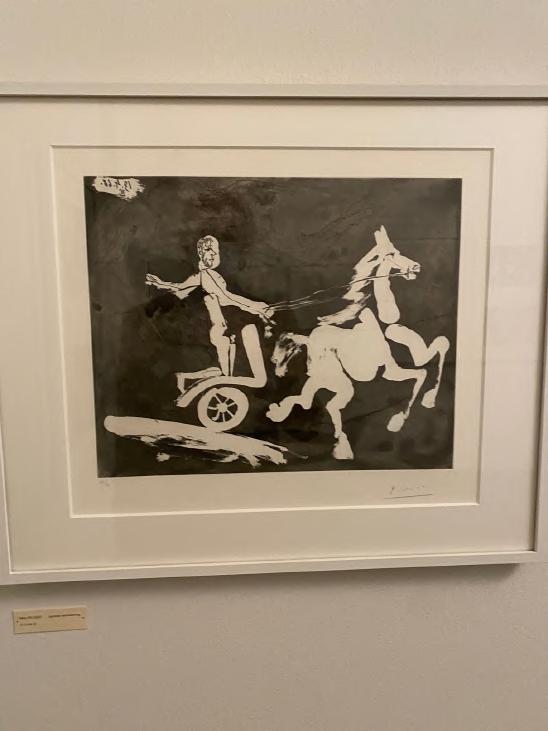
61
Fractional ownership in a Picasso? As good an investment as blue-chip stock?
Blockchain’s third and final major impact on the art industry thus far involves changing the mediums with which art is created. This movement was originally perpetrated by the aptly-named Dada Collective, whose moniker references an artistic movement that, like constructivism, was born a century ago. The original Dadaists, inspired yet traumatized by the chaos of World War I, were better known by what they opposed than what they supported They were anti-war, anti-state, antibourgeois, and most famously, antiart The new company Dada Collective can also be described as anti-art, or at least anti-art as we have always known it Based on and existing in the blockchain, it takes a step beyond the typical digital art which has gained popularity in recent years It is dependent on collaboration; the premise is that individuals use the company ’ s drawing software app to create a token on the blockchain and then allow other individuals to build off their work. This echoes a technique patented by some of the original Dada group ’ s contemporaries, the surrealists. Surrealist groups around the world held events at which a piece of folded paper was passed around a table; each artist would create a drawing on one portion of the paper then conceal their work and pass the sheet to the next artist
The end result was a unique and intentionally incoherent composition called an “exquisite corpse ” (One such exquisite corpse, created in by the Belgrade Surrealist Circle, its at left). Dada’s crypto art collections are essentially exquisite corpses without any of the natural limits imposed on the surrealists; there is no cap for how large the tokenized collections can grow nor any restrictions on who can contribute Dada proudly claims to be a “virtual home to people from all around the world from a bodybuilder in Argentina to an evangelical pastor in the US, a farmer in Kenya, and a former punk in England ")
Dada has branded itself and its product as a hybrid of “crypto collectibles and rare digital artworks ” Aggressively “artistfirst,” it describes itself as a place where strangers make art together without expecting remuneration, motivated not by extrinsic rewards like money and status but by internal rewards like the joy of making art, self-development, belonging, and a sense of higher purpose. ” Of course, this space can only exist because it is profitable, an irony that Dada’s publicity campaign seems to either wryly embrace or remain completely oblivious to “The democratization of art is just a euphemism for its commodification,” we are told by a company that achieved fame through the commodification of its own anti-Democratization (capital D) philosophy of democratization
Confused yet? The Dada-ist salons of last century would be pleased
How exactly does the Dada Art Collective define and seek to execute its democratizing mission?
To answer this question you must study the company ’ s initial efforts to condition the market for its product and provide the public with a compelling “origin” story.
From its emergence in 2017 Dada branded itself as anti-establishment and presented the art industry as an “elitist and unsustainable” institution that needed to be broken to be built back up. Most problematic, Dada posited, was the relative helplessness of artists within the industry; it claimed that “less than 1% of artists make a living from their own work:” Flirting with anti-capitalist rhetoric through statements like “free markets prevent art from thriving,” Dada patented itself as the creator of a new “Invisible Economy” poised to radically separate art and market The statement and concept seem both hyberbolic and oxymoronic Dada purports to differentiate its “invisible economy ” from existing systems through “organizing economic activity based on interdependence, creativity, and altruism” In doing so, Dada is simply restating the mission statement of innumerable recent start-ups, not to mention aligning with the rhetoric of established industry titans suddenly trying to rebrand themselves for a younger and more socially-conscious audience. “Anti-establishment” is the new establishment “Leveraging the wisdom of the crowd without the pernicious effects on the market” is a quote and nothing more; ironically an attempt to capitalize on an increasingly anticapitalist demographic by spinning its own words into a capitalist business strategy
Dada is at best a new market that is more artist-driven than traditional ones However, this is still significant What it does do is to create a more transparent market; one in which anyone can enter and one in which all information can be tracked through the ethereum blockchain. It eliminates information asymmetry in a way similar to Artory.
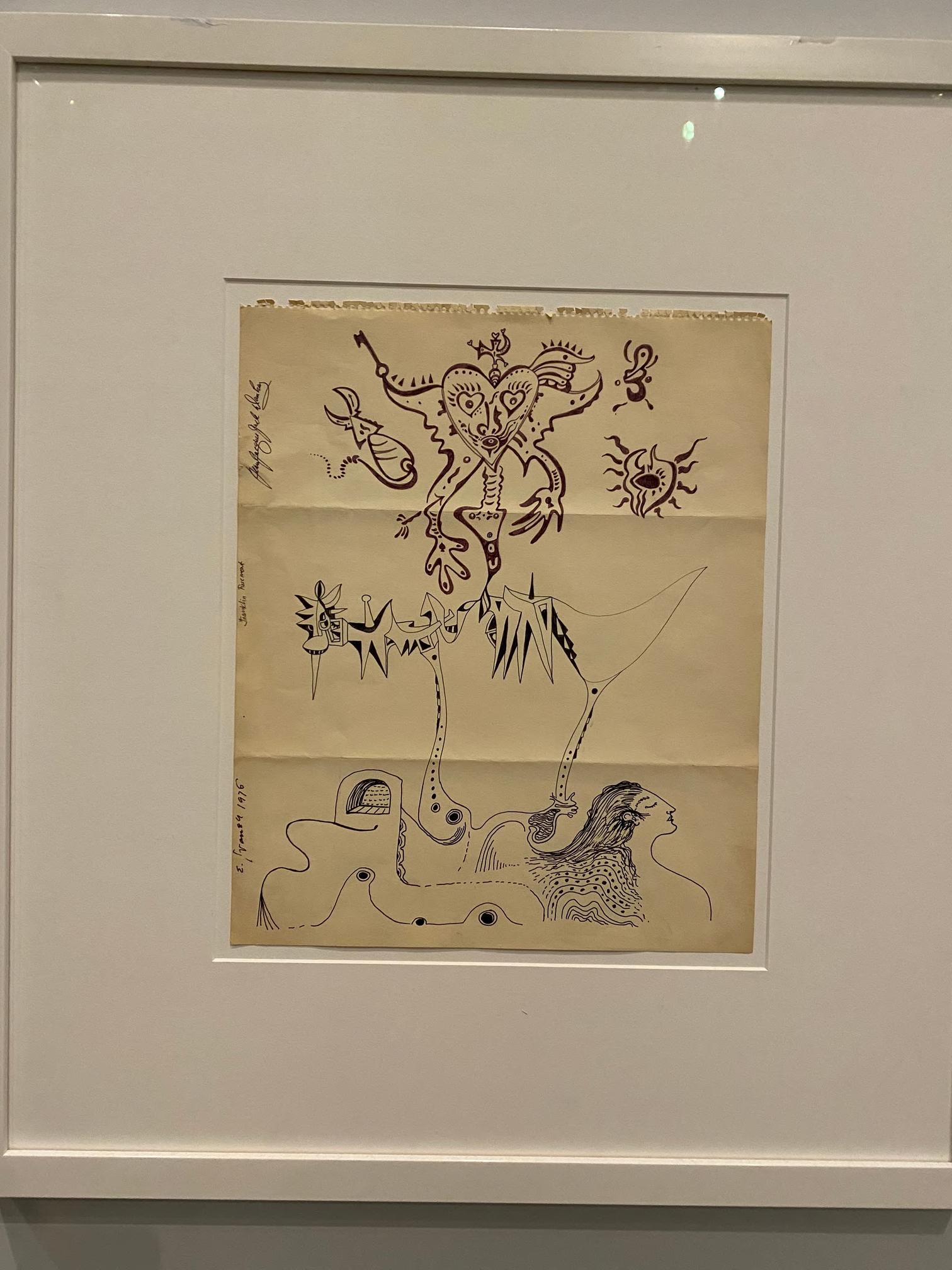
******************
62
For young and technologically savvy artists, it provides a nonintimidating and empowering way to connect while making a profit off of creative work.
Dada released its first major collection, Creeps and Weirdos, in 2017. “Creeps and Weirdos” were NFT’s before the NFT marker exploded: a collection of 108 drawings split up into over 16,000 digital prints The tokens were embedded with smart contracts ensuring the artists would continue to receive royalties each time their work was sold Smart contracts are crucial to establishing artist-first markets both for those selling digital/NFT art (like Dada), and those tokenizing physical art (like Feral Horses) Their implementation made the release of “Creeps and Weirdos” particularly exciting and generated a substantial amount of press interest at the time.

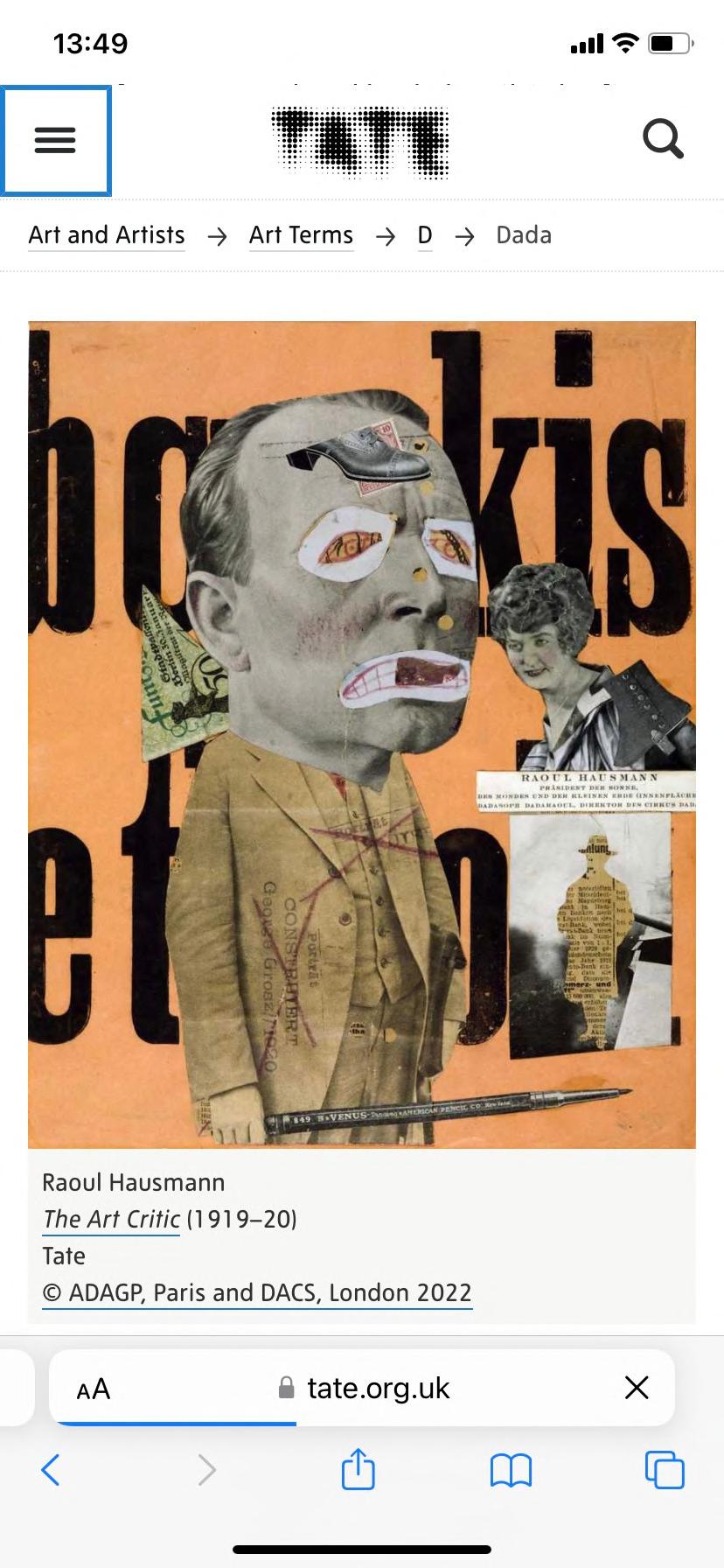
However, Dada made no subsequent NFT release to build off the momentum. Following the 2018 crypto crash, the company decided to retire the original collection and cut the “Creeps & Weirdos” supply to just 8300 Then, in 2021, when trying to relaunch the original “Creeps and Weirdos,” Dada was beaten out by NFT sleuths who found a hidden link allowing them to buy the Weirdos The ethereum market may be decentralized but there are still security issues and, contrary to Dada’s lofty egalitarian motto, major winners and losers Dada has been largely dormant through the NFT boom as new more blatantly commercialized forms of digital art have dominated the market share. However, some of the company ’ s initial ideas are embodied by the fact that innumerable artists of all nationalities have been minting and selling smart-contract embedded work through platforms like Mintable, Nifty, and OpenSea.
One wonders if a main factor behind Dada’s struggles is its branding It’s difficult to succeed in a booming market when espousing an anti-market ideology. Some of Dada’s “egalitarian” selling points were that artists couldn’t set prices for their work and that artists’ basic income was not tied to their sales. These are hardly tantalizing terms for ambitious artists who, with a little industry knowledge and capital, could release NFT’s independently of any Collective and increase their ceiling for profit
Additionally, in the months following the 2017 Creeps & Weirdos release, Dada didn’t do enough to capitalize on an infant industry with proven upside and extensive room for maneuvering In the warp-speed blockchain world, “adapt or become obsolete” is truly an excellent motto In this way, Dada’s recent fortunes are a warning for those currently establishing themselves in the NFT art space. However, Dada should not be seen as a warning against “exquisite corpse ” collaborative NFT art. From a cultural and technological perspective, one of Dada’s biggest strengths was its facilitation of rapid open collaboration I believe that new players in the market could have great success channeling Dada’s manifestation of this idea However they should do so in a more business-oriented and less ideological way By focusing on the “ digital exquisite corpse ’ s ” profitability and generating a stable revenue stream from this dynamic new art form, an emerging company could conceivably establish a foothold in both the NFT and more traditional art communities. The butterfly effect of such a platform would be that artists from around the world could connect, inspire each other, and collect uncapped earnings to an extent never afforded them by Dada.

63
Ultimately the integration of blockchain into the provenance verification, sales, and creative sectors of the established art industry is at three very different stages. The level of integration is connected to where the pertinent blockchain-based companies fall on the spectrum between “optimizing and modernizing the current art industry” to “opposing the current art industry and representing themselves as an alternative ”
Artory and its peers in the provenance verification industry have intentionally developed excellent relationships with powerful auction houses, museums, and collectors Rather than staging a market disruption around a contentious ideology, their goal appears to be creating alliances with its established players for the benefit of those on all sides of a transaction. By enhancing transparency, they create more trust in sellers, protect buyers, and (as the neutral “middleman”) carve out a lucrative niche for themselves. Their success can also be attributed to the fact that they are filling a need rather than attempting to create one All galleries, auction houses, and highlevel collectors need provenance verification services (in contrast, many would need convincing to invest in fractional tokens or digital art collectives) As a result, companies like Artory have experienced a relatively warm welcome in the market and, despite their rapid emergence, are on a sustainable trajectory to long-term entrenchment Artory’s rise can be analogized to Uber Uber filled a major market need for private transportation through creating a significantly better, more efficient, and customer-friendly service than any currently available. By using a comparatively decentralized system to do so, it, perhaps incidentally,
also democratized an industry Artory did the same thing in the, albeit much more niche, art market Similar analogies can be drawn to companies such as AirBnB and Spotify.
Over the next few years it will be fascinating to watch how competition between blockchainbased provenance verification companies unfolds, both in the United States and abroad Uber, Air BnB, and Spotify, as Artory arguably does today, originally stood almost uncontested as a singular dominant market forces However, from Lyft to VRBO to Apple Music (among many others), they soon faced intense competition from other opportunistic companies In particular, Uber’s attempt to dominate internationally was thwarted; from Careem in the UAE and India to Yandex in Russia to Bolt in Eastern Europe to Grab in Southeast Asia, locally-based brands started offering the exact same service as their American counterpart and achieved supremacy in their respective regions. Will the same paradigm unfold in provenance verification? How many other companies will arise in Artory’s footsteps? Will Artory dominate the United States and Western European art markets while Asian and CIS art markets get taken over by comparable companies? This could be to the detriment of the art market as a whole Surely a “centralized decentralized” registry of art that spans the globe would be most helpful at remedying information asymmetry and decreasing the transaction cost for increasingly internationally-focused and crossculturally sensitive collectors.
The concept of tokenizing art and selling it on the blockchain is not in direct opposition to the current art industry; however it does represent
a significant disruption in the stream of commerce and adds a new layer of competition to the way art is transferred The demographic for whom tokenized art investment has the biggest effect is that of collectors/potential collectors. By lowering the bar for investment, fractional art sales allows for both more diversified portfolios and a deluge of new market entrants. Meanwhile, for galleries and auction houses, sales of art tokens could create a valuable new income outlet and a means to create maximal profits from a finite number of works Furthermore, using blockchain is an excellent way for them to project a cuttingedge modem image, coincidentally ideal for the type of new investors that fractionalized art is designed to attract
Tokenized art and art as a common means of equity investment are two rapidly developing paradigms that should remain in the industry for many years to come. Companies like Maecanas and Feral Horses, however, have yet to achieve the stable level of success nor demonstrate the long-term staying power of provenance verification companies like Artory This is easily explainable Changing how we conceive art ownership, while simultaneously changing the platform on which art is bought, marks a much bigger shift than simply switching the vendor we use to verify our collection’s authenticity It also involves a much larger risk factor, one that gives a deeply traditional and riskaverse industry pause Will some people, encouraged by the idea that art often appreciates more reliably than blue chip stocks, begin viewing “art equity” as an equivalent or superior alternative to many investments currently available in the stock market?
******************
64
Will buyers be chilled by the idea of never physically possessing the art in which they have partial ownership? The fractional ownership paradigm is still too young for us to fully answer either of those questions. However, it has great promise, especially for emerging artists. If young artists with moderate degrees of success begin tokenizing their work with built-in smart contracts now, it could pay major dividends Meanwhile, more auctions involving the tokenization of well-known pieces (such as Eleven Broken Chairs) would help crypto-based companies promoting fractional investment gain a larger institutional audience
Finally, blockchain as a collaborative medium of artistic creation, as tantalizing a concept as it is, was a general failure as envisioned by Dada An upstart company, Dada not only placed itself in direct competition with the art establishment but also actively disparaged that establishment as broken and publicly expressed a desire to utterly overturn it. This inability to compromise or engage with the rest of the industry likely contributed to why Dada never gained momentum, or major allies, after the Creeps and Weirdos launch Another probable major factor in the company ’ s decline was that its stated democratization mission was undermined by its many anti-capitalist stances A supposedly artist-first system that limits artist income has failed to resonate with artists or even aspiring crypto experts after all, individually-launched NFT’s have been greatly successful and, to borrow a cringe-worthy but in this case apt colloquialism, have a ceiling of “the moon. ” Dada-type companies still have an opportunity to be successful. However, they would be well-served to forego idealistic hyperboles,
advertise themselves as complimenting the art world rather than destroying it, and take a profit-oriented approach to maximize income for artists using the platform.
**************
To return to the Russian constructivists, their glory days were short-lived. By 1930 abstract act was seen as dangerous by the Soviet government; art, the theory went, should not be left open to the viewer’s interpretation but instead should present a clear message in alignment with state ideology Constructivism, once construed as serving the revolution, now ostensibly threatened to destabilize the regime said revolution created; thus it was almost entirely eschewed in favor of social realism


As for the constructivists like Rodchenko? They were faced with a choice; adapt to create statesupported art or attempt to emigrate and continue their careers abroad. Rodchenko did the former, switching his primary medium to photography and depicting Soviet glory through his captures of sporting events and national celebrations. However, his 15 years of constructivist works, and the legacy of his movement, lived on Constructivist-style artistic groups were formed from England to Germany and beyond; what was suppressed in Russia thrived internationally A century later, contemporary artists continue to cite the Constructivists as an influence while historians consider Rodchenko and his peers to be seminal leaders in the development of modern art
Cryptocurrencies and blockchain technology continue to develop at unprecedented speed while the art world, forever tied to the social movements of the day, remains as volatile as ever. The fate of blockchain is uncertain.
The trajectory of art is unknown, The two fields could continue to sharply converge or suddenly diverge depending on where the global flashpoint of 2021 leads us. It’s possible that strict regulatory regimes could spell the end of the cryptocurrency boom, either in the US or worldwide. It’s possible that the NFT bubble bursts, once again limiting the ways in which creators can promote and sell their work and leading to greater caution about buying tokenized art However, whatever happens, blockchain technology, just like Rodchenko’s constructivists, has left an indelible and as-of-yet unquantifiable impact on art
65
Rodchenko and his peers were forced to adopt state-sancitoned artistic styles
Want a full transcript of the article? A list of resources?
Just to continue the conversation on crypto, blockchain, and art? Reach out to to us on Instagram @worldofelysium or hit us @ elysiumcocktailclub@gmail com
Above: A collection of NFT's from Dada's Creeps & Weirdos
Below: Van Gogh self-portrait The most promising space for blockchain and art is in the world of provenance verification. Bllockcahin allows galleries with significantly fewer resources than the Musee D'Orsay and its peers to verify the authenticity of their works
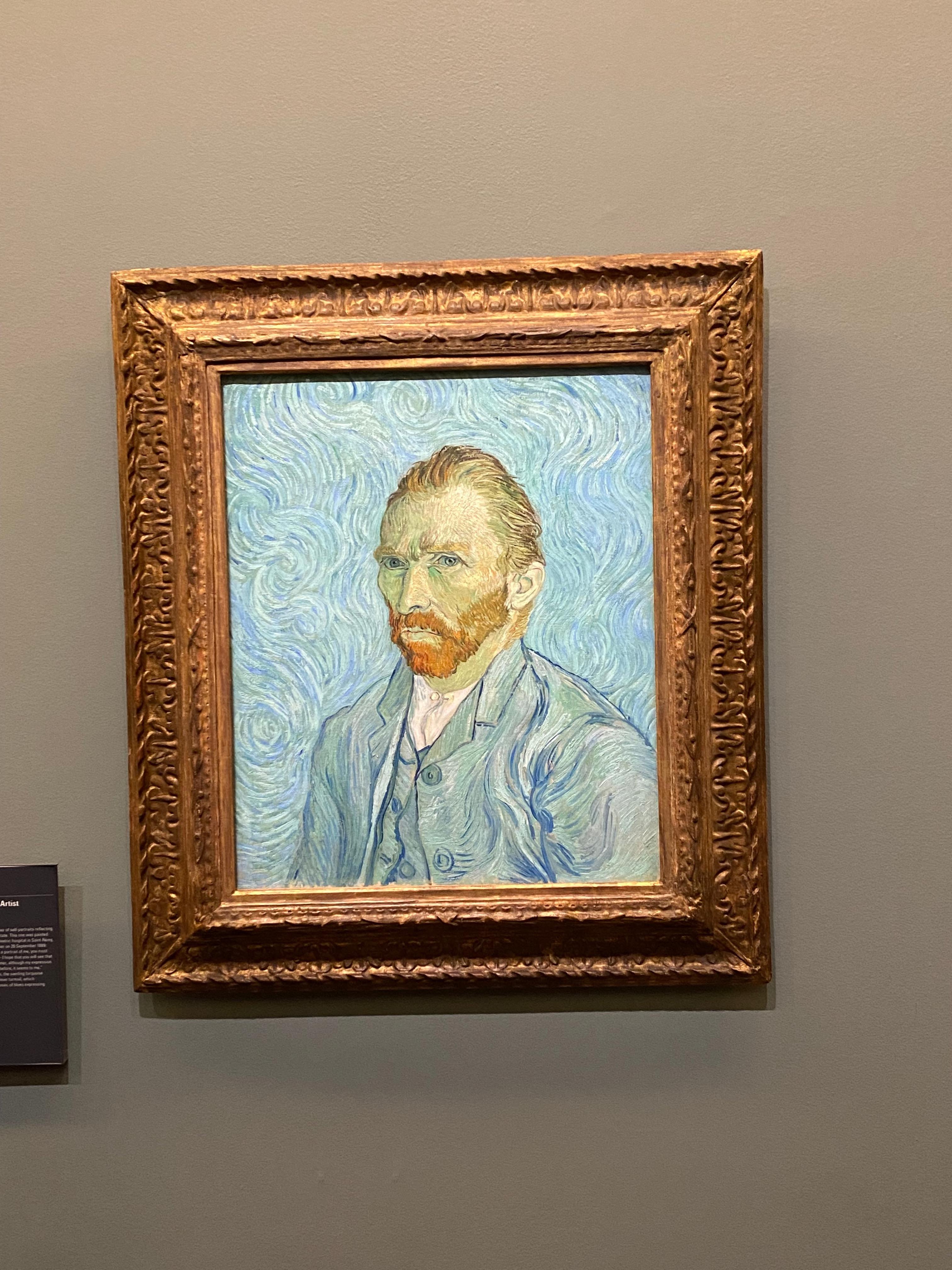
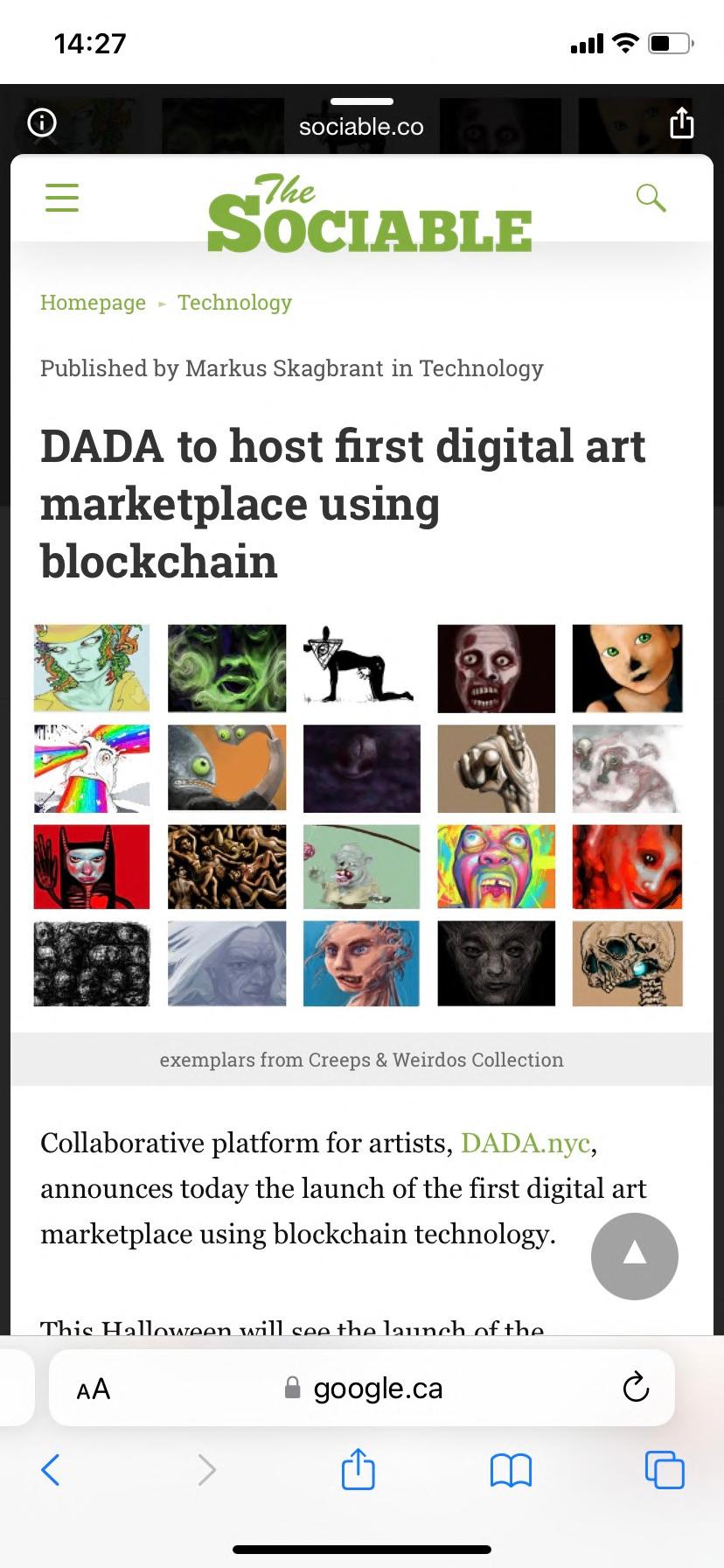
It h l ti i d th 66
*******************
******************
P O R T R A I T
O F T U N I S I A
My Journey from Hospitable Hammamet to the Scorching Sahara
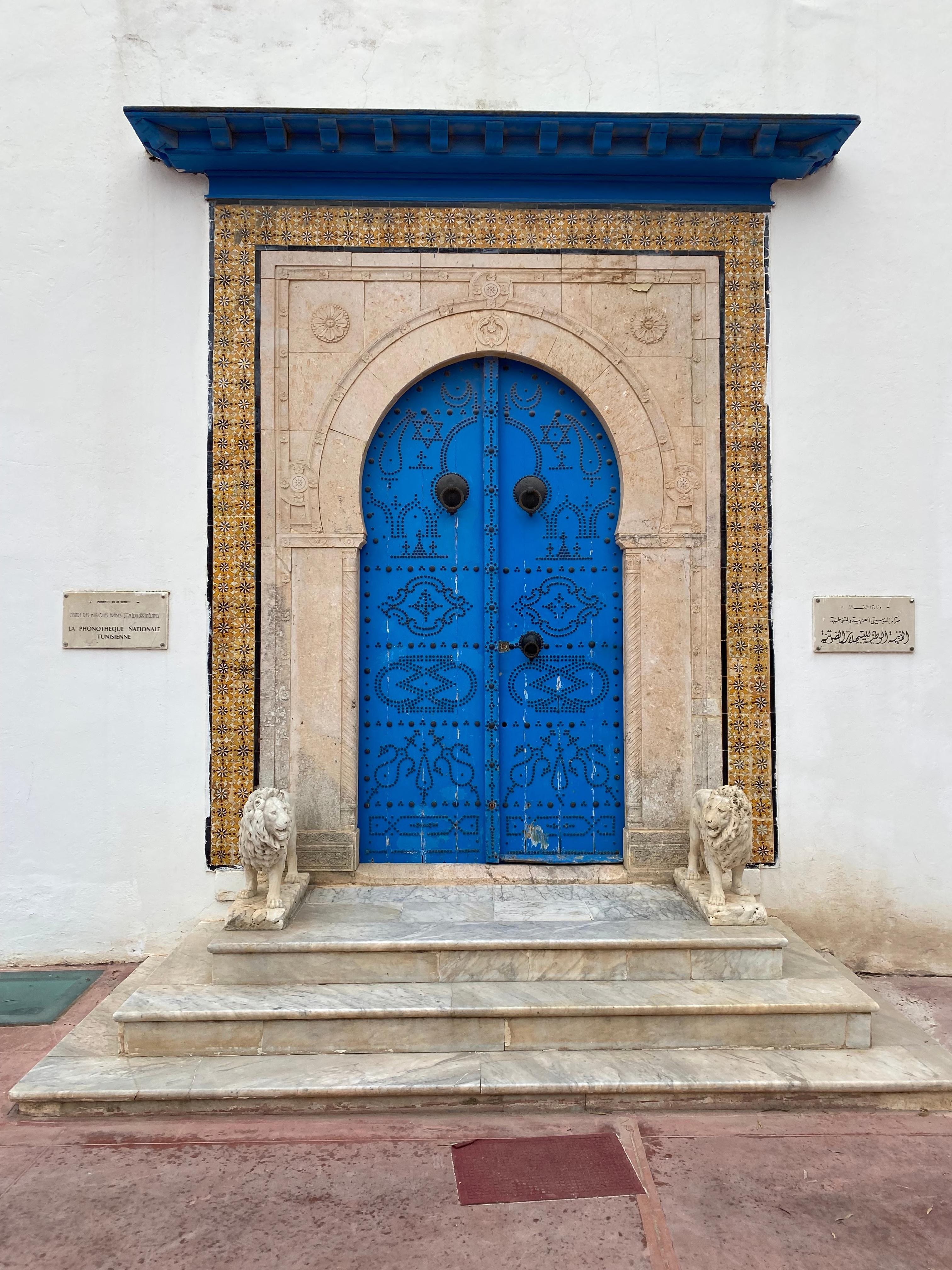

67
Ihave often spoken about how Egypt is the ideal two to three-week vacation destination

Cosmopolitan and chaotic Cairo is an intense culturally immersive experience that blends the finest modern luxuries in hotels and dining with mesmerizing markets and historical heavy-hitters Aswan and Luxor offer the rugged desert adventure and romance recently brought to theaters by “Death on the Nile ” The glamor and grandeur epitomized by this masterpiece in cinematography is not far from the truth from the majestic Abu Simbel to the five-star Oberoi “houseboat” Upper Egypt feels like a time capsule that can take you back 100 or 4000 years Finally, the Red Sea resorts of Hurghada and Sharm el-Sheikh are my favorite places in the world for a luxurious scuba-diving holiday; the powder-soft beaches, turquoise waters, and unforgettable sunsets are made even more appealing by the fact that they remain largely undiscovered by the “big box” travel hordes that flock to the Caribbean and Southeast Asia
Travel in Egypt, of course, has been cursed (or blessed) by the events of the past twenty years Once a highly touristic country it suddenly became an “off the beaten track” destination due to terrorism fears and the Arab Spring; one friend who visits the region regularly cited that the amount of vendors outside Valley of the Kings decreased tenfold between his visits in 2010 and 2014 When Covid hit, Egypt’s resorts, like the country still open, were virtually untouched by foreigners save a selection of wealthy Russians or Kazakhs My eighteen-day trip to the country in early 2021 remains one of the best of my life While in Aswan I arranged three days of private temple tours with a longtime member of Zahi Hawass’s Egyptology team...on just a couple days’ notice. In Cairo I had the Coptic Christian Museum to myself. I spent nine days in Sharm el-Sheikh without hearing a word of English…in Alexandria I got lost in ports of pastelcolored boats and
ate incredible fish saadiyeh at dockside stalls where I could only communicate by pointing at images on the menu It was a special flashpoint, and one that will get harder to relive as travel increases post-Covid and Egypt’s tourism industry rebounds (especially with the Grand Egyptian Museum finally set to open this November)!
Correction hard to relive in Egypt
This past April I made my first foray into its North African neighbor Tunisia and immediately fell in love. Tunisia has been blessed with Egypt’s’ same triple threat combination of vibrant cities, pristine beaches, and desert adventure. Unlike Egypt, however, Tunisia does not have a rich centurieslong history of tourist infrastructure and luxury developments. Tunis, despite sitting on the ruins of one of the greatest cities of the ancient world, lacks the bucket list attractions that inevitably bring the
accoutrements of mass tourism Like Cairo, it inspires the sense that you can discovery something new around every corner; however, with a much smaller population and area than the Egyptian capital it also possesses a distinct charm I mean all this as a compliment; it’s a magical city where you can alternately unwind, explore, and immerse yourself in Islamic culture at a relaxing pace Seaside Hammamet, just an hour and a half away, is a sun-soaked Med resort that international hotel brands have yet to touch…and boutique hotels have made their own. Finally, Tozeur, in the south of the country, is nestled in the Sahara…no river valley here, just an oasis surrounded by sand dunes. Ever in search of remote locations and open desert skies, I initially “discovered” Tunisia through Tozeur; the lynchpin and highlight of my trip, it is the natural beginning for my portrait of the country.
68
Lost on a desert highway near Tozeur
Tozeur: The Desert
Had I chosen, I could have arrived in Tozeur via overnight drive in a matroshka (shared van) Not in the hypothetical sense, aka it was an available option for those who ventured to their local Tunis bus station, but in the form of a serious offer that I would have been dumb not to consider One Thursday, as the afternoon sun descended over Tunis Airport’s tiny domestic terminal, I was left stranded without a flight and no imminent promise of one One TunisAir flight leaves Tunis for Tozeur on three or four days of the week; it’s the only easy means of transportation to the oasis, but, as one might expect when flying into the Sahara, not particularly reliable On this afternoon ferocious winds had created sandstorm conditions in the Tozeur area; with gusts up to 39 miles an hour we were well beyond the acceptable boundaries of “conditions in which to fly a stable plane ” Two and a half hours after our intended departure time our flight was canceled; passengers were told that new boarding passes could not be issued at the moment but that there was another scheduled flight the ensuing day and we could show up at the airport then to obtain a seat I don’t trust anything I hear at airports, especially when it sounds like passing the buck As far as I knew, Tozeur, the inspiration for what turned into a ten-day trip, might not happen at all
English speakers stand out on domestic North African flights There were two others in the terminal, one an NGO-type from Germany on holiday with her Tunisian boyfriend and one a 60-year-old New York expat en route to visit his Tozeur-born wife’s family. The gregarious New Yorker, for even after building a life in Tunisia he unquestionably was one, had seen this situation many times before and shared my pessimism. He also was a veteran of the Tunis-Tozeur overnight matroshka, was resigned to taking one, and invited me to join him.
I considered, played the odds, strongarmed my way into a guaranteed seat on the next day’s flight, and demurred. I’ve never been on an overnight bus before, and didn’t fancy bumping my way into Tozeur, after three years of anticipating the trip, worse for wear from such an experience I made the right call With the weather clear I was in Tozeur by 5 p m the next day, and with no checked bags, I was from airstrip to car to resort in less than 20 minutes
I’m a connoisseur of desert resorts and when Anantara (owners of eastern Oman’s Jabal al Akhdar and Abu Dhabi’s Qasr al Sarab) announced plans to open one in Tunisia it was immediately on my radar
The property, like Anantara’s similar ones, is built not just to fit its landscape but, like the jungle taking over a Cambodian temple, become a natural part of it There are no rugged mountains around Tozeur oasis; those are an hour’s drive away through flat but ever-changing desert Thus the allsuite resort, ten minutes out from the oasis and main town, is placed on a nondescript expanse of flat sand. It’s sand-colored architecture, all squares and right angles, feels indigenous and understated without being austere. Form follows function, but in the stylish and meticulously crafted way that has defined Anantara since the brand, under the direction of architect Bill Bensley, landscaped its initial Hua Hin property.
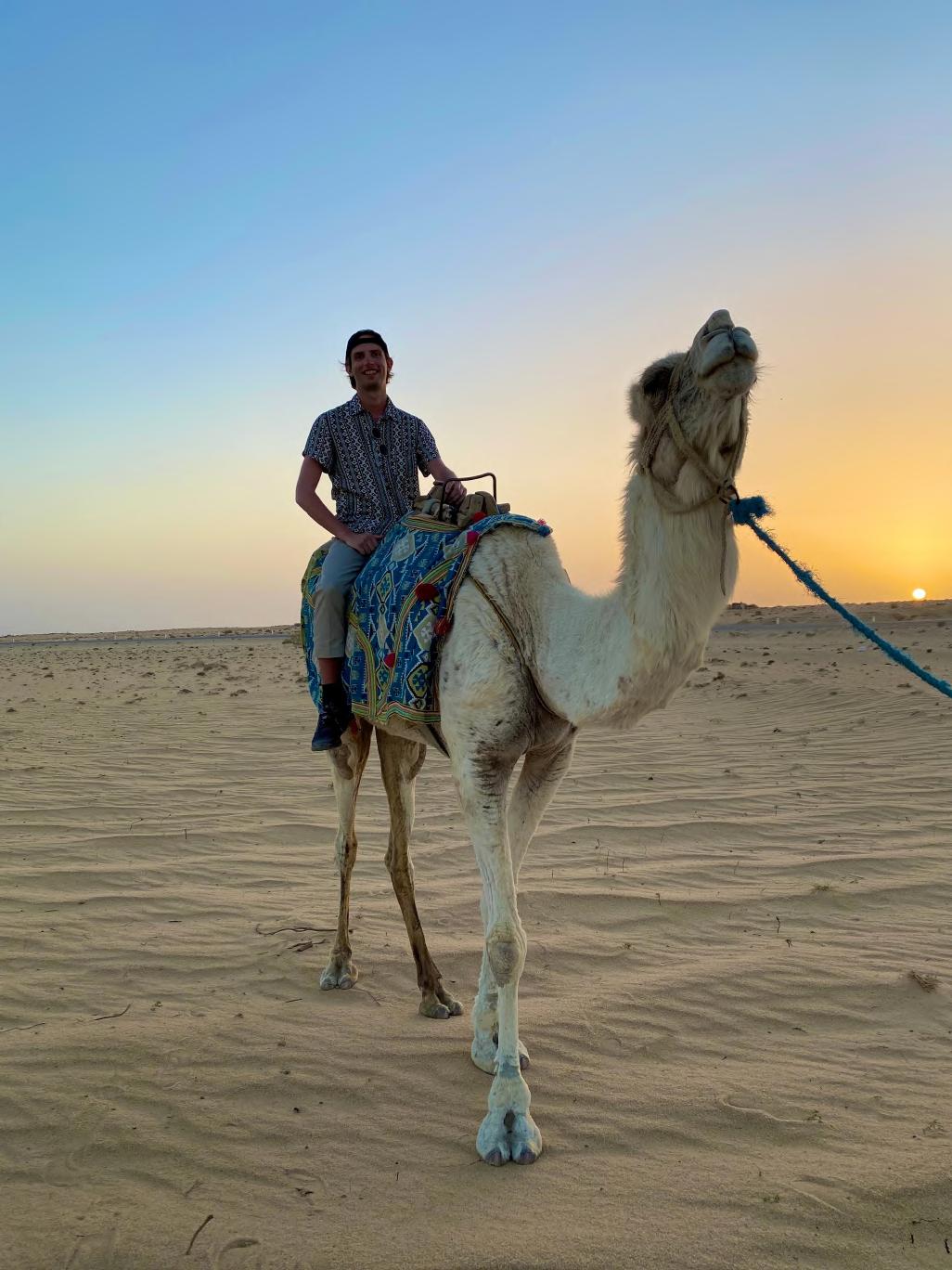
69
Sunset camel trek near Tozeur, during which I met several Berber families
Spa day anyone?
The Anantara provides luxury in the heart of the Sahara
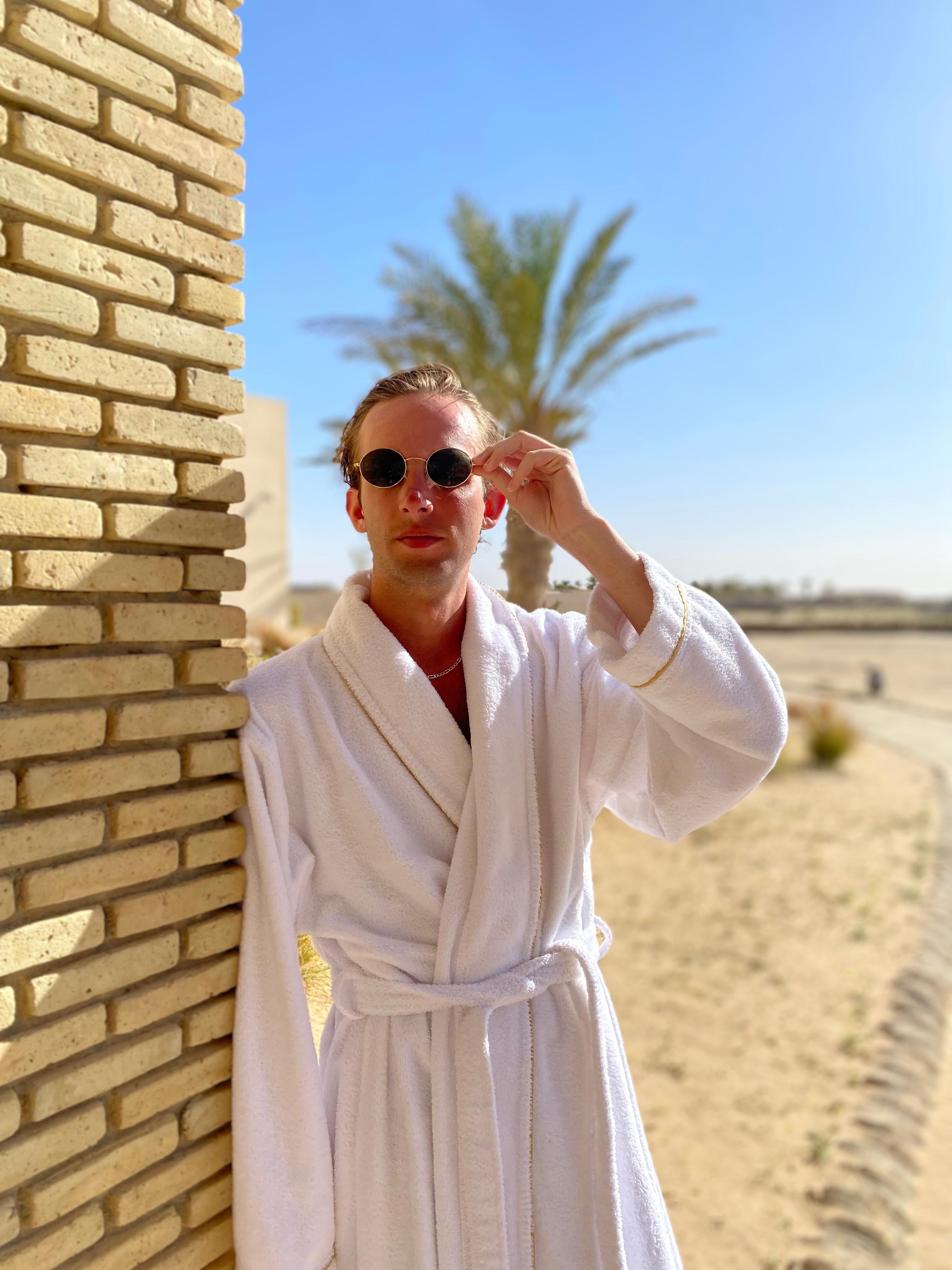
It’s a stretch to call the ground-level outdoor seating area behind my villa a “terrace ” It was more of a tiled rectangle a tiled rectangle that became a gate to the Sahara with a single step Nights on this terrace were unforgettable; due to the complete lack of light pollution the stars were among the most spectacular I’ve ever seen And that’s not to mention sunsets. One evening I took my fresh mango juice (no cocktails, it was Ramadan), walked out a couple hundred meters into the desert, and sat in the sand in silence just watching the golden sky. I could have continued a couple hundred kilometers, it seemed, without encountering a soul.
On another evening my “terrace” became a theater for The English Patient, which was famously filmed in Tozeur. For those who can’t make it to Tunisia, the romantic tragedy, set during the British war effort against Rommel, offers a vivid glimpse of the local scenery. It’s not the only time Hollywood’s taken notice of the area; several Star Wars filming locations can be seen within a comfortable half-day’s tour from the Anantara
For me, the main natural attraction in the area was Chott el-Djerid, a massive salt lake that is today almost entirely dry One long highway serves as a causeway along the eastern side of the lake; driving down this road

The lake, at over 7,000 km the largest salt basin in the Sahara, is hot even by Tunisian standards In the summers temperatures frequently rise above 50 Celsius; in the winter they cool down to a more manageable 35 During these colder months the lake partially fills, hence the skeletal sun-bleached boats that dotted the seemingly abandoned landscape It’s a sight that likely would have pleased Jules Verne, whose final novel Invasion of the Sea, a powerful reminder of the powerlessness of humans against nature, was set at the lake.
In Verne’s novel, European explorers ambitiously attempt to create an inland sea linking the Sahara to the Mediterranean and facilitating more efficient trade. It’s an example of an inevitably doomed attempt to reshape our planet. In contrast, the local Berber people have proven that when you work with nature instead of against it you can find prosperity even in the harshest of environments. Tozeur’s primary industry is in dates which are the pride and joy of Tunisia and also one of the country’s biggest exports Over 30,000 tons are produced each year, irrigated en masse thanks to impressive wells that, in modern times, stretch over 600 meters down to the water tables But while the technology may be modern, the distribution system is not; water reaches land plots from the wells through a centuries-old network of
“seguias ” The dates lived up to my expectations, whether beautifully plated with a welcome coffee at my hotel or eaten directly off the back of a truck that my driver passed while in town
Exploring one area of “date oasis” provided insight into Tozeur’s untapped tourism potential Nestled among the palms on a secluded road that was as much reminiscent of jungle as desert, one entrpeneurial property owner has set up “Sahara Lounge,” a type of “desert club” that includes a restaurant, a shisha bar, and a variety of outdoor adventures including zip lining and a “mission impossible” obstacle course. It’s the sort of place that bridges the gap between trendy and rustic and could become a tourist gold mine with more resources and a larger market. Indeed, transplant the concept to a place like Oman or Morocco, significantly increase the budget, and you ’ ve got an Instagram magnet. Sahara Lounge is not that, and I wouldn’t want it to be. But, for the benefit of its owners, visitors to Tunisia, and the country itself, I do want it to succeed
I cannot, with a straight face, label the Anantara rustic However, it does have a strong sense of place and does an exquisite job interpreting International luxury through a local lens For example, the bar area contains an extensive library with more coffee table books on Tunisia and its history than I saw during the rest of the trip combined One such book, a photo essay on the Tozeur desert, welcomed me to my room Locally crafted furniture and cushions woven in traditional patterns dotted the property; meanwhile the restaurants emphasized Tunisian flavors and the Iftar spread was as impressive and authentic as any I had
Hanging out in the middle of now-dry Chott el-Djerid
The highlight of my stay was a sunset camel trek from the hotel Far from your touristic camel photo op, the experience broke the bubble that often separates visitors from locals and provided a window (not manufactured or choreographed) into how the community surrounding me operates
71
Many people I’ve spoken to conceive Berbers as more inaccessible myth than current social group; my own experiences meeting Berbers in Morocco have felt scripted and stilted according to someone ’ s idea of a tourist comfort zone In the deserts of Tozeur, though, without expecting it, I met several groups of nomads temporarily decamped in the area A couple were large multi-generational families complete with the camels, chicken, goats and sheep, essential for eggs, milk, meat, and wool. Seeing the rhythm of their life unfold, if only for a few minutes, was a valuable glimpse into Tunisia’s heritage, present, and future. The beat of the desert goes on.
TUNIS: The Metropolis

Perhaps no country I’ve been to underestimates or undersells its own cultural and historic value more than Tunisia This is best exemplified by the world-famous Bardo Museum It’s Tunisia’s most marketable cultural treasure But, since the dissolution of the Parliament and the closure of the buildings it was housed in, the museum has also been inexplicably closed, with no seeming plans to reopen, for two years
The paradigm is also evidenced in the ruins of Carthage, located in the north of modern-day metropolitan Tunis Now just a series of crumbling pillars, 2400 years ago this was the home of the ancient civilization that came the closest to bringing the Roman Empire to its knees During the second Punic War the great general Hannibal, in a risky yet brilliant strategy, marched his troops from Carthage’s Iberian territories over the Alps to strike at the heart of Rome Moving down the Italian peninsula, elephants and all, the Carthaginians handed Rome a series of major defeats, only stopping their rampage when the Romans invaded Africa as a desperate diversion tactic This necessitated Hannibal’s recall, and the tide of the war changed Largely due to incompetent government,

and its inability to pay its own soldiers, Carthage was put on the defensive and ultimately ceded most of its European territories A furious Rome was not content with treaties Sixty years after Hannibal’s death, the third and final Punic War saw general Scipio lead the Romans to Carthage and enact a razed-earth campaign of astonishing brutality The city was destroyed, all civilians in the streets were killed, and anyone left surviving was sold into slavery. Scipio vowed that anyone attempting to rebuild on the ruins would be cursed; as a result, they remained untouched for over a century. It was not until the late Roman period that people settled Carthage once again, with the city once again becoming a large trading center by the 3rd century AD.
Today the ruins of Carthage are split into seven sites fully integrated among residences, businesses, and parks. They are in a remarkable state of disrepair, with many interpretive signs being sunbaked beyond belief and little security to protect the remaining artifacts One could easily imagine tourists strolling in with backpacks and out with timeless treasures, a paradigm which used to plague Greece and Egypt but would be unthinkable in those countries today A certain apathy seems to surround all endeavors from Tunisia’s under-funded Ministry of Culture and it trickles down to those staffing Carthage’s sites and living the area I saw only a handful of tourist touts all day and even people who offered guide services seemed confused as to why I would take interest in the ruins at all
This is not to downplay their significance. The Roman bathhouses, the largest in North Africa, looked over a beautiful stretch of the Med. The nearby Roman amphitheater has been incorporated into a modern concert “bowl,” perhaps losing some historical integrity but definitely gaining in atmosphere. As for the Punic city, the foundations of a great temple and some government buildings can be seen. Most moving, although disturbing, was a cemetery containing the funerary urns of over 20,000 Carthaginian children. The pre-Roman Carthaginians used children for ritual sacrifice and the site at which they were buried, away from the main city and spared the Roman destruction, has remained largely unchanged for over two thousand years
After the Roman decay, it was Islam that left the next indelible imprint on Tunis The Medina of Tunis, built in its current iteration between the 12th and 16ch centuries, was named a UNESCO World Heritage Site to honor its position as a major center of Islamic civilization One can easily get lost in the Medina for hours though not too lost, as someone who’s been to Khan elKhalili several times can attest You’ll also have the opportunity to have meaningful interactions with locals and spend time browsing in addition to haggling The Medina is not a “tourist” market; you ’ re less susceptible to scams here than in a place like Marrakech, and, in fitting with Tunisia’s personality, the environment is, for a souk, relatively non-aggressive
72
The Roman bathhhouses in Carthage
You'd never guess that the ruins of an ancient civilization were just steps away.
I also stayed in the Medina, in one of the exquisitely-decorated ancient homes that have now been turned into boutique family-run properties. Dar ben Gacem describes itself as a social enterprise as much as a hotel, seeking to preserve Tunisian heritage while introducing guests to a taste of local life The property was built in the 17th century by a family of master artisan perfumers and passed down generation by generation for over 300 years until 2006 That’s when it was purchased by the Ben Gacems, who left the interior largely intact while adapting the rooms for their hotel My room was notable for its stunning bathroom tile work as well as an ornately decorated bed frame I turned up onto a set of staircases headed for a rooftop courtyard, which in turn provided 360 views of Tunis Sitting here at sunset during Ramadan, I found myself surrounded by a cacophony of evening prayers, the loudspeakers of dozens of mosques only interrupted by the shrieks of the many seagulls circling the city It was in these moments that I got the best sense of Tunis’s character: of what is in many ways a pure “north Africa” with most alleys and properties completely untouched by Western infiltration

After sunset, it was off to Iftar through streets packed with jubilant revelers The vast majority of Tunis restaurants, if not all of them, close for lunch during Ramadan and forego their usual a la carte menu for a Iftar “dinner set ” Thus I became well acquainted with all of Tunisia’s festive classics and their absolutely massive portion size
Iftar would typically begin with dates and a plate of pickled anchovies or similar fish Next up would be a hearty sorba soup (generally with lamb or beef) and a selection of salads including mechouia (grilled vegetables garnished with hard boiled eggs and tuna), eggplant paste, and an octopus salad with olive oil and a complex blend of spices. The highlight of the meal for many locals is the Brik, or “L’Irremplacable Brik” as it was proudly listed on many menus. The Brik is a very thin fried pastry, golden brown and delightfully crispy.
It contains a rich filling of cheese, egg, herbs, and either tuna or beef I preferred mine with a generous side of harissa paste, omnipresent in Tunisia and served with almost every dish
The main course, by this point unnecessary due to the variety of food already consumed, was generally either a meat couscous, makrouna (a tomatosauce based pasta served with chicken, chickpeas, and harissa), fish in saffron sauce, or mloukhia (made with tomato paste, beef, and mallow) Mloukhia is now generally associated with Tunisian cuisine but it originated in Ancient Egypt when part of Egypt was under Hyksos dominion The Hyksos attempted to torment the Egyptians by fundamentally changing their diet; thus when they realized that no one ate the abundant mallow by the Nile they demanded the the Egyptians cook it The Hyksos thought it might be poisonous; instead, it became the source of a local favorite that still exists 3500 years later
Dessert was a generous fruit plate and a selection of puddings, with Tunisian mhlabiya (geranium, vanilla, and pistachio) usually being my favorite Afterwards, it was time for shisha with the locals at one of the jam-packed local bars Tables poured into the streets to the point where passerby could easily knock over your hookah, and the atmosphere, despite everyone ’ s complete sobriety, was more raucous than at many clubs The age range at these establishments ranged from 5 to 85; everyone from small children to groups of teens to young families to old couples was clapping and dancing along to the music
One night I heard a commotion from my hotel room, and, heading up the rooftop, discovered a massive celebration taking place in the courtyard of the next building Sipping a Turkish coffee I watched the festivities with a couple of other hotel guests; we saw everything from a fashion show to what could best be described as a Tunisian mosh pit
73
InsideaDarbenGacemsuite
HAMMAMET: The Seaside
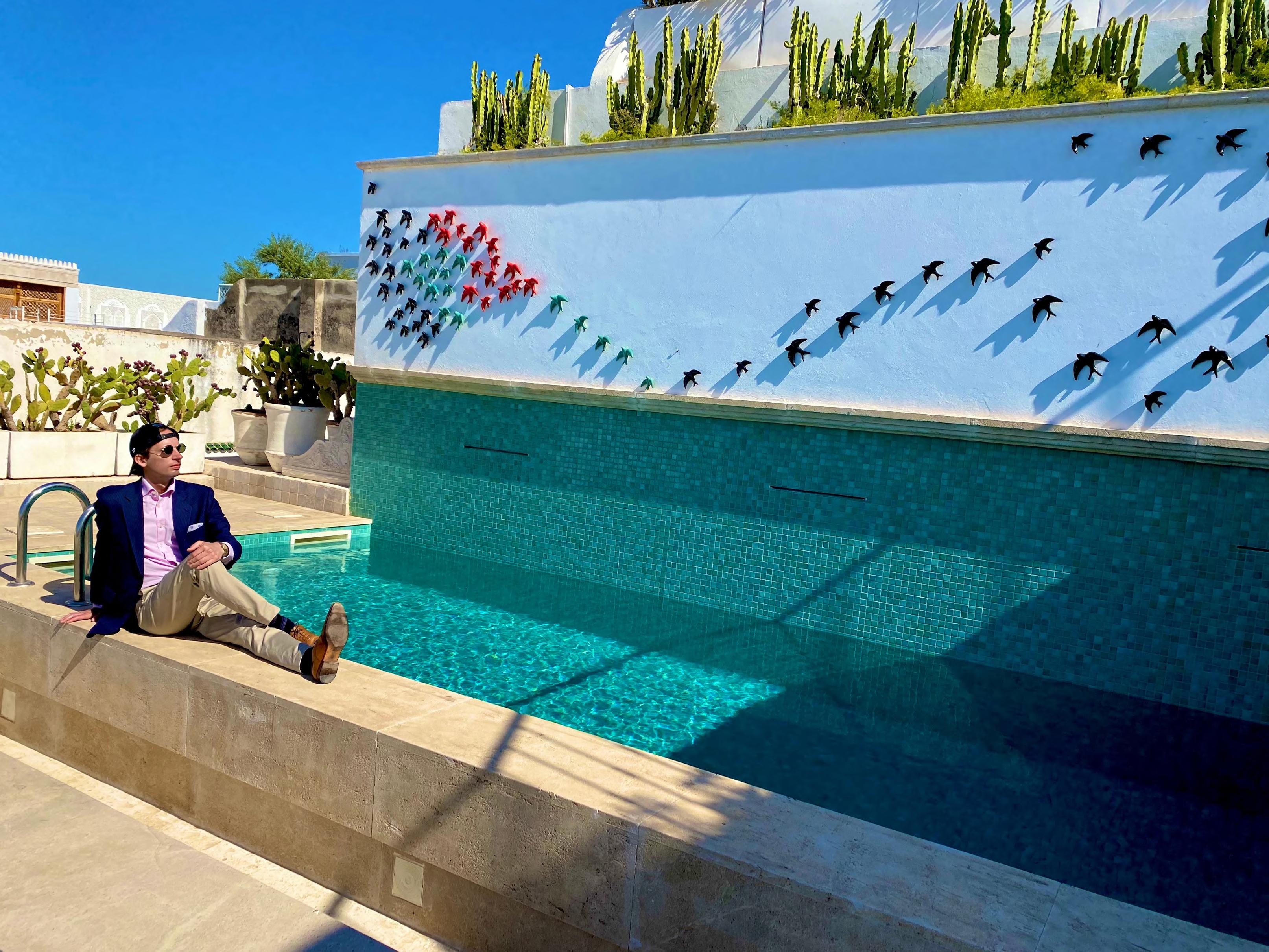
My trip ended in seaside Hammamet, around 100 km Southeast of Tunis and originally known as a royal resort There my destination was La Badira, a sleek boutique hotel with monochrome interiors of glistening white Most rooms have balconies overlooking over the Med; the rooftop indoor/outdoor pool has the same view Meanwhile the service is the best I experienced in Tunisia; this is the type of white-glove property where the entire staff knows your name within a few hours of check-in Breakfast was truly above and beyond, starting with a selection of freshly squeezed juices (I typically had a blend of date, lemon, cucumber, and mint) and starring oija, the Tunisian
version of shaskhuka The highlight of my stay was an afternoon of horseback riding with a stable located just behind the hotel; my guide, a proper Tunisian cowboy, gave me free reign to gallop on the beach before taking me out to a couple local Hammamet bars.
Perhaps the place that best encapsulates the essence of a Tunisia experience, however, is Sidi bou Said. Located near the Carthage ruins on the northern tip of the peninsula, this picturesque village, resplendent in white and blue, is nearly a carbon copy of Santorini. Unlike Santorini, it has not been overrun with tourists and does not fill up Instagram story boards. Cobblestone streets wind down past houses that have stayed in the same family for generations, all the way down to a rugged stretch of beach where surfers and kite-surfers come from all over Tunisia to try their luck on the waves
Higher up in the hills a selection of modern art galleries have recently opened, emphasizing local talent and Arabic content. I was particularly struck by a multi-medium exhibition showcasing the work of Yozid Oulab, who draws links between middleeastern heritage and modern Islamic culture For example, his piece the “Alif” is based on the first letter of the Arabic alphabet but references it in the form of the nail, the first instrument of writing when cuneiform was created back in Mesopotamia There’s also a grand estate and gardens, the Ennejma Ezzahra (or "Star of Venus") palace Built at the behest of Baron Rodolphe d'E'langer a French painter, it is a relic of colonial rule However, there's nothign colonial about its style; the Baron, an avid lover of North African music and architecture, had the estate designed by local craftsmen in traditional Tunisian style
InsideaDarbenGacemsuite
Today his estate is where you’ll find the best viewpoints in Sidi bou Said as well as exquisite examples of traditionall Islamic landscaping.

In researching Sidi bou Said I found several stories of elopements there: couples who ran to this slice of paradise and get away from it all and have returned many times since I understand the allure; Tunisia is a place where time stands still, and yet at the same time it’s one that can transport you between milleniums Some countries enchant with extravagance, others with ingenuity, natural beauty Tunisia drew me in with its cultural authenticity An authenticity that, when you want to slide off the hamster wheel of wherever you live, you may find yourself returning to again and again
ELYSIUM'S TUNISIA BUCKET LIST
WHERE TO STAY:
Tunis: Dar ben Gacem
Tozeur: Anantara Suites
Hammamet: La Badira
WHERE TO DINE:

Tunis: Dar Slah, Fonduk el Attarine, Dar el Jeld


Roof, El Dar at the Residence Hotel
Tozeur: Sarab
Hammamet: Kamila, Adra
WHAT TO SEE: Carthage
ruins, Chott El-Djerib, Zaytouna Mosque, Ennejma
Ezzahra Palace, Galerie
Saladin, Bourghuiba Ave.
75
Sidi Bou Said
The famous Brik

One of the many friendly feline residents of Sidi Bou Said
Elysium Spotlight
NATE BUECKERT
Calgary, Canada
A Calgary native with a fierce passion for life and a willingness to “try anything twenty times,” Nate Bueckert personifies the creativity, persistence, and perfectionism that makes a great mixologist Thus it’s no surprise that, after only six years in the industry, he’s running Calgary’s premiere champagne and cocktail lounge, Untitled Elysium recently sat down with Nate to talk about his cocktail philosophies, how he curates Untitled’s unique guest experience, and how he pursues “la belle vie” when he’s not mixing the best truffle martinis in the game
Jesse: So let’s go back a couple years It’s the middle of Covid, the middle of “prohibition,” and at the same time, a halcyon summer for speakeasies I spent every night out at Untitled that summer enjoying the best cocktails I’ve had in Canada Tell me about this place’s unique vision
Nate: It’s a Great Gatsby/speakeasy vibe We modeled the front door after Death & Co in New York It’s all wood, really lowkey signage, and we have one light when the light’s on we ' re open Inside we have the chandeliers, the prohibition era pictures, and the small but very refined bar But in terms of cocktails, we like to push the boundaries we have a unique style of service and very modernist presentations We use ISI’s, infusions, and we make all our own bitters and syrups in house We like to have as much as control as we can over the actual ingredients; anything we can make ourselves, from infusions to the bread in the kitchen, we do
Jesse: And it makes a difference Every time I come in, you ’ re mixing me cocktails with ingredients I’ve never heard of! What’s the philosophy behind all this innovation?
Nate: We just want to do cool sh*t man One of the things I love about Untitled is I can do whatever I want be creative But at the same time, we ’ re very selective about what gets added to the menu On Sundays, we do this thing with all the bartenders: everyone brings their new cocktails to the board and says “here’s the idea behind it, here’s the ingredients, the flavors, the ratios ” And we ’ re extremely critical of each other The latest cocktail I’m putting on the menu took three years of tinkering
Jesse: You guys have such a tight-knit team How important are those collaborative sessions?
Nate: I love the idea of a bar team sitting down, putting together their different experiences and flavor palates, and perfecting cocktails together And you have to be humble enough to let someone else fuck with your cocktails That’s something that doesn’t happen at a lot of bars; there’s some big egos
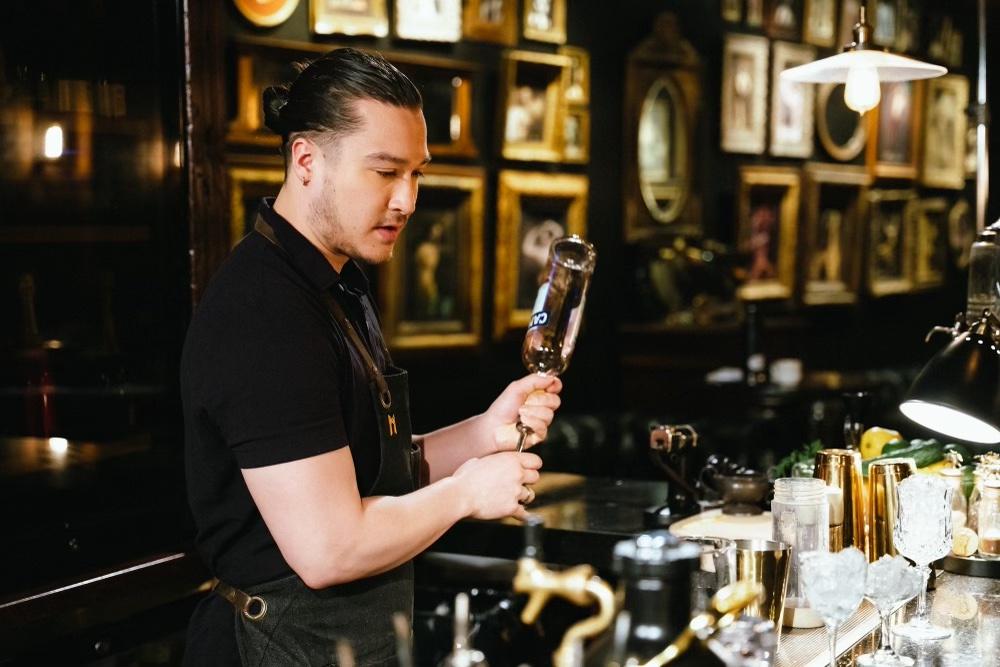
Jesse: So tell me about one of the coolest drinks you ' ve created
Nate: I use this amazing book called the “Flavor Bible,” which is an encyclopedia favored by chefs I was looking up “white chocolate” one day and saw that one of the flavor affinities was olives I was like "that’s really f-ing cool; how do we put that combo in a cocktail?" And I figured out two weeks ago We use a white chocolate fat wash tequila, a cocchi rosa vermouth, Campari, olive brine, lavender balsamic syrup, and saffron cardamom bitters Then I make a saffron white chocolate and stuff the olives with it so it looks like a cheddar cheese It’s a really wacky one but it works
Jesse: That's unreal bro; that’s the first cocktail I’m trying when I’m back in YYC What’s your overall philosophy on mixology?
Nate: My biggest thing is balance Also I want you to experience a cocktail with more than just your tastebuds: it should be visually appealing, it should smell appealing, maybe we spray a little tincture on the glass so you still have the essence of the cocktail on your fingers after you finish it
Jesse: And you ' re very purposeful with your ingredients too.
Nate: Definitely; there should always be a reason for adding a component to a cocktail and you should always be able to taste that component. Don’t mix something with “cherry, blueberry, lemon, and pear, ” for the sake of it if you can’t taste the pear and don't know how it affects the overall balance.
Jesse: So let’s talk about your personal cocktail journey. How long have you been in this game?
Nate: I got hired on six years ago at the Derrick Gin Mill, our sister restaurant. I had no idea what I was doing…I’d never worked on a cocktail bar before. Shelby Goodwin and Nate Newman have been great mentors for me, both with the cocktail side of things and the intangibles. Then I became GM at the start of this year.
A 25-year-old entrepreneur and crypto investor with big dreams and a strong work ethic, Max Schaumburg exemplifies the type of person who was drawn to Dubai this past year. However, his love of Dubai started long before the days of Instagram and influencers Elysium recently sat down with Max to chat about his experiences in the city, how it’s changed over the years, and why the Dubai vision continues to inspire him in his everyday life.
Jesse: You mentioned Shelby and Nate Newman, and I know how much respect you have for them, What is one of the important lessons they taught you and how has that influenced your own management style?
Nate: How important it is to have a family atmosphere After one of my first nights of work Shelby opened up a bottle of wine for the team, we had a couple glasses, and then I headed out Shelby told me to text him when I got home safely, but I forgot The next morning I woke up to worried texts from every staff member asking if I was OK I was like “what the *h*ll is this,” but it was also a really cool moment realizing everyone genuinely cares It stuck with me, and that’s the type of atmosphere I try to create Everyone looks out for each other And it’s so great when you want to work hard for a place because you appreciate it and the culture so much
Jesse: But at the same time it’s a business
Nate: For sure, you have to balance friendship with "I’m your boss" and navigate that in a professional manner And you have to maintain a good dynamic on those shifts where you get absolutely slammed for eight hours You can see it in the servers ’ eyes; they’re on the cusp of losing it But you have to maintain composure, maintain a united team, maintain the quality of service, and hold each other accountable You want a server to be comfortable saying to you, “make this cocktail again, this looks like “sh*t" after all we ’ re upholding a standard here, we ’ re not just a cocktail sweat shop Finally, in my mind as a manager, I’m always “scheduled until 3 ” It’s not like when you ’ re a bartender and you ’ re excited to get out a midnight
Jesse: So your mindset changes as you move up the totem pole?
Nate: Absolutely When you ’ re a bartender, all you care about is the bar: how clean is it? When you ’ re a supervisor, all you care about is the staff; is everyone happy? And now that I’m a GM, everything matters: every decision I make is for the good of a business And ownership, which I'd like to get into some day,' is a whole different game
Jesse: And you’d be great at it bro. What’s the vision for the Nate Bueckert bar, ten years down the road?
Nate: The most important thing would be collaboration. Bringing in unique personalities who are passionate about their job, and putting them in places where they thrive and feel inspired. For example, we have a great service manager who's a longtime vegan… imagine how excited she would be if she could work with a vegan menu concept. Ultimately I’d like to open up a bunch of bars, each with a unique theme. An absinthe bar, a rum bar,, a gin bar…And I want to stay under the Nate Newman umbrella. He is one of the most intelligent guys in the bar scene; he’s very particular in all the right ways. And he’s also a bulldog; he’s why we got through Covid.
Jesse: I always say that a great cocktail bar should reflect the personalities of those who run it. What signature traits would you bring to your bars?
Nate: I will try everything in twenty different renditions because I believe that you have to want to like something to like it Think of coffee When you ’ re a kid and you first tried it, you probably hated it: it was bitter and strong But many of us grew to like it because we felt it was good for us That's what I’m doing right now with crab: I’ve never been a fan but yesterday I tried it with the innards and everything It was not for me, but I’m not giving up Like this was “salt and pepper crab,” there’s lots of other renditions of crab that I may enjoy Of course the same is true of cocktails So when guests come in, they may be skeptical about a certain spirit or service style I’ll say “let me mix you a drink this way, if you don’t like it, it’s on me ” And a lot of the time they’re like “ wow, this is actually really good ”
Jesse: I feel like music is also critical to the Nate Bueckert bar experience I remember you mixing me some pretty good tracks at a little after-party this summer; how did you get into DJ-ing?
Nate: I always get chills just driving around listening to good music And we have two DJ’s at Untitled that are amazing, one is C-Sick, who won the RedBull competition and built the sound system here Then his brother Mark brings a house and disco vibe I often go up there and watch them do their thing and I realized “I want to create that ” So I have my pre-amp and mixer and everything now, got a set-up going in my apartment I’m still a noob but am curating my own sound, learning a lot, and it’s a lot of fun Music brings people together; it keeps me in contact with friends around the world because we send each other tracks It’s super cool when you have an international group of friends that each have their own styles, their own music, and then I can pick the stuff that I like and introduce it to people who probably haven’t heard it before
Jesse: Your favorite genre?
Nate: Overall, I’m definitely a deep house guy Bob Moses, that kind of stuff I went out to a festival in BC this summer nad it was one of the best trips of my life
Jesse: I'm also a deep house guy...and it’s the perfect genre to end a good evening of cocktails. Honestly, I see so many synergies between music and a champagne bar in terms of escaping and bringing people together.
Nate: Yeah, I want the bar to be an oasis for you to escape whatever’s going on your life that’s bothering you. People come to Untitled to pop bottles and celebrate. Especially after Covid…its’s amazing to see couples come in and say “this is our first time out in two years. ” I want them to leave having had an amazing experience, having shared something with them about cocktails, and champagne. And when that doesn’t happen that hurts me more than anything.
Nate: The learning curve is steep. But it’s good to do stuff that you are really shitty at; it keeps you humble. I got into this rhythm where I was only doing things where “I was the man. ” I walk into Untitled, and I know I’m going to make sick cocktails. But when I first walked into the boxing gym, I didn’t even know how to throw.a punch. It’s so important to try new things, accept that you’ll be bad at them, and make the choice whether you ’ re going to be bad forever at it. It’s been a fun process, and I’ve been seeing a lot of growth.
Jesse: Ok, we ’ re both YYC boys so we'd be amiss if we didn't fit in Calgary talk. It’s a Sunday night, we ’ re going out for dinner and cocktails, what’s the move?
Jesse: So when you ’ re not behind the bar or the turntables, what have you been getting up to lately?

Nate: Muay-thai! One of my bartenders is a personal trainer: she was like “ come try out boxing’ and I was like ‘why not ” It’s a great way to work through anything you have going on in a week; take it out on the pads So I’ve been doing it since December
A 25-year-old entrepreneur and crypto investor with big dreams and a strong work ethic, Max Schaumburg exemplifies the type of person who was drawn to Dubai this past year. However, his love of Dubai started long before the days of Instagram and influencers Elysium recently sat down with Max to chat about his experiences in the city, how it’s changed over the years, and why the Dubai vision continues to inspire him in his everyday life.
Jesse: How’s that going? I did a couple of muay-thai classes in Hua Hin recently and it felt like I was learning to move in a whole different way
Nate: Model Milk for dinner; I can’t speak highly enough of it. I went there a couple nights ago and it was one of the best services I’ve had in a long time. A really proper Alberta dinner awesome service, awesome staff After dinner, I generally go to industry spots For something divey and upbeat, One Night Stan’s is always packed and a ton of fun Missy’s This & That is a wine bar with a lot of character It’s this white diner-style space the only light is basically coming from the jellybean bulb in the center of the room And the wine list is really well-curated Then for nightcaps, Proof is one of the cocktail pioneers in Calgary; it’s a great bar for the industry to have in town Also Shelter I have a lot of respect for their bar program and the balance on their cocktails is crazy
J
Jesse: Completely agree bro. Model Milk especially is to die for…back in 2020 I would have their steak with green pepper sauce once a week. But I understand the menu ' s totally changed now?
Nate: Yeah, something that makes Calgary unique is there are so many amazing restaurants that are creative and pushing hard to be better all the time. You don’t get this kind of quality in North America unless you make reservations months in advance. In Calgary, you can walk into a restaurant on a Thursday night win no reso...and experience crazy flavors, a really well-run kitchen. And the servers really care...service has been lacking everywhere since Covid so that makes Calgary even more special.
After dinner I'd go to Teatro [one of Calgary's best Italian restaurants] to try one of Kevin Yang's creations. I never get dessert...EVER. But my buddy and I follow this guy around wherever he creates a dessert menu and order everything. It's culinary art.
Jesse: Champagne? Cigars?

A 25-year-old entrepreneur and crypto investor with big dreams and a strong work ethic, Max Schaumburg exemplifies the type of person who was drawn to Dubai this past year. However, his love of Dubai started long before the days of Instagram and influencers Elysium recently sat down with Max to chat about his experiences in the city, how it’s changed over the years, and why the Dubai vision ire him in his everyday life.
Jesse: Finally, you ' re one of the most knowledgeable steak, champagne, and cigar conoisseurs I know. So before I let you go, could you share your choices for your perfect meal/nightcap?
Nate: Dinner has to be steak For anyone in Calgary, Brant Lake wagyu is the best steak you ' re going to have If you ' re eating out, Modern Steak works directly with the ranch and is the best place to enjoy it The price point is pretty reasonable too you don't have to really ball out But you can also grill it ou do that be sure to get some wagyu beef ng I use in cooking all the time essentially a e used as a substitute for butter or oil It also ash point
Nate: If you can find it, Charles Heidsick Blanc de Millionaire is easily my favorite champagne. I think they're on their 2004 vintage but the best champagne I've ever had is their 1995 vintage. It comes off like a Dom P; it has so much structure to it and it's absolutely incredible. If you can't find that, Pol Roger always does a really good job...Sir Winston Churchill is pretty popular for their vintage class right now. And for rose, the Bollinger 06 is unreal. All of these are really expensive but if I'm doing a perfect dinner I'm doing one of these guys. For cigars, I have two favorites The Partagas Petit Corona is the first cigar I ever had where I actually tasted everything I was supposed to taste from the flavor profile Tastes like sweet tea And also the Ashton VSG Halfway through it tastes like graham crackers
Jesse: Wow, love the description now I'm craving a cigar myself Thanks so much Nate See you in YYC soon!

Nate: My pleasure And I'm looking forward to it; a truffle martini (and our newly opened cigar shop) will be waiting!

@untitledyyc
@nathanbueckert













































































































































